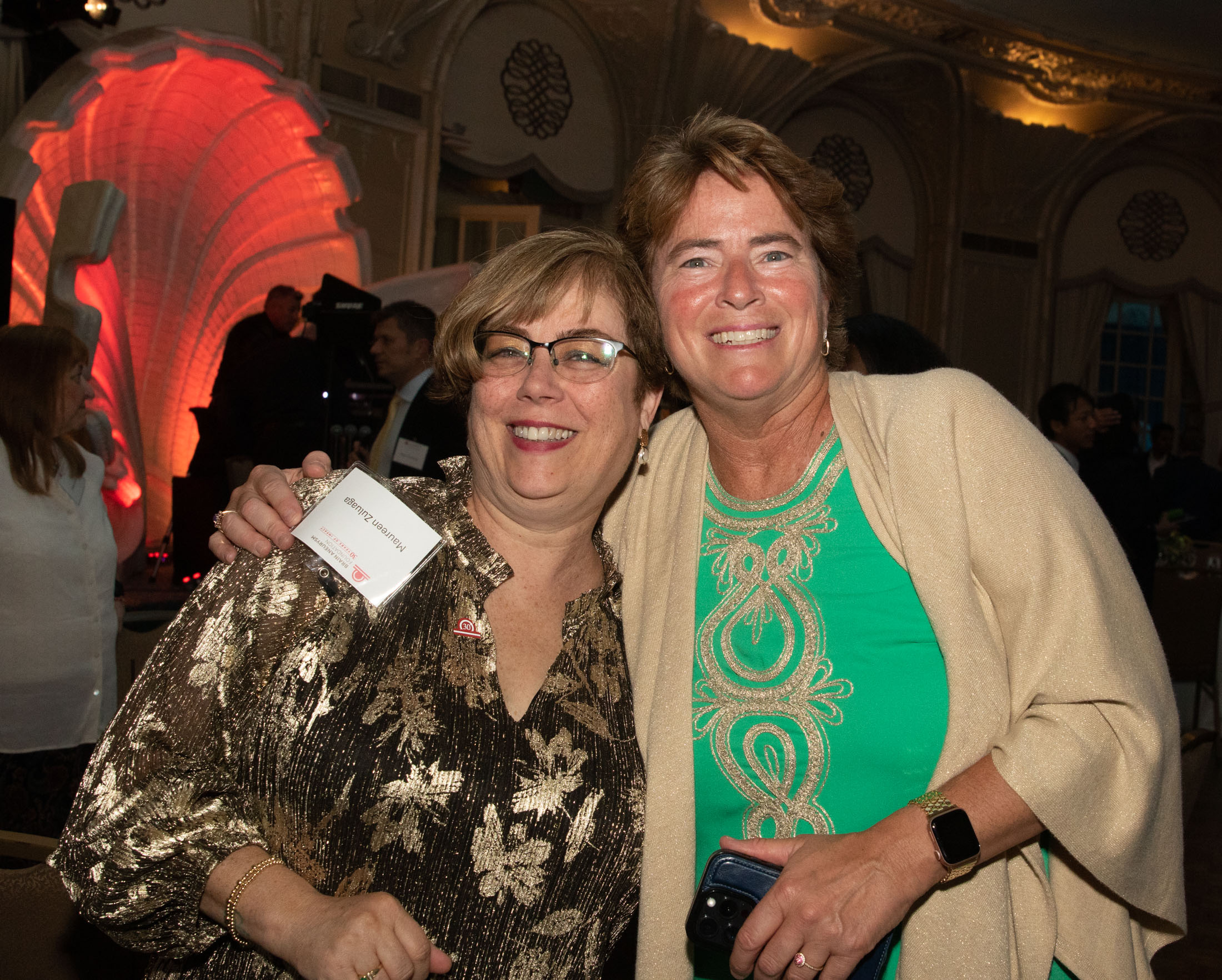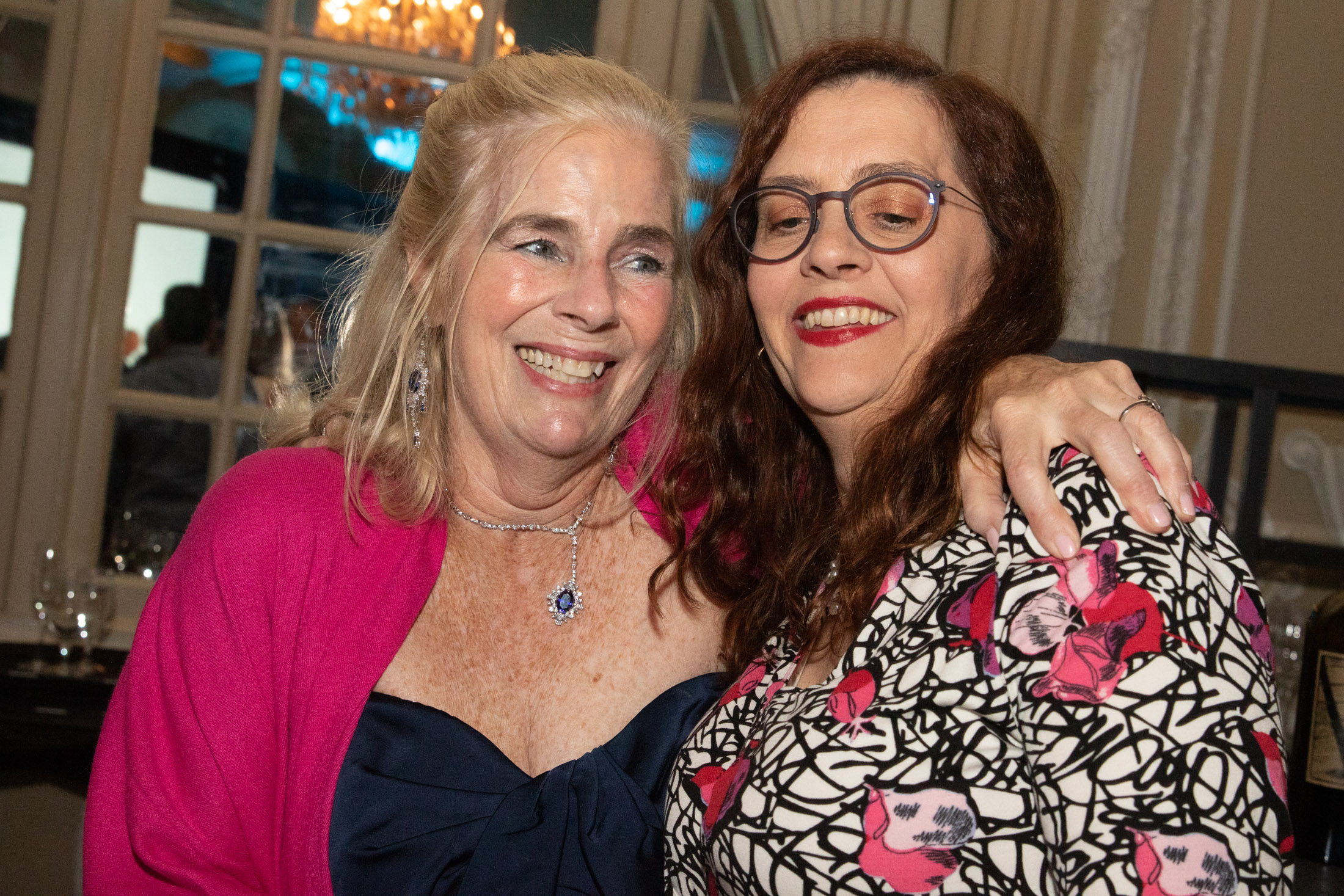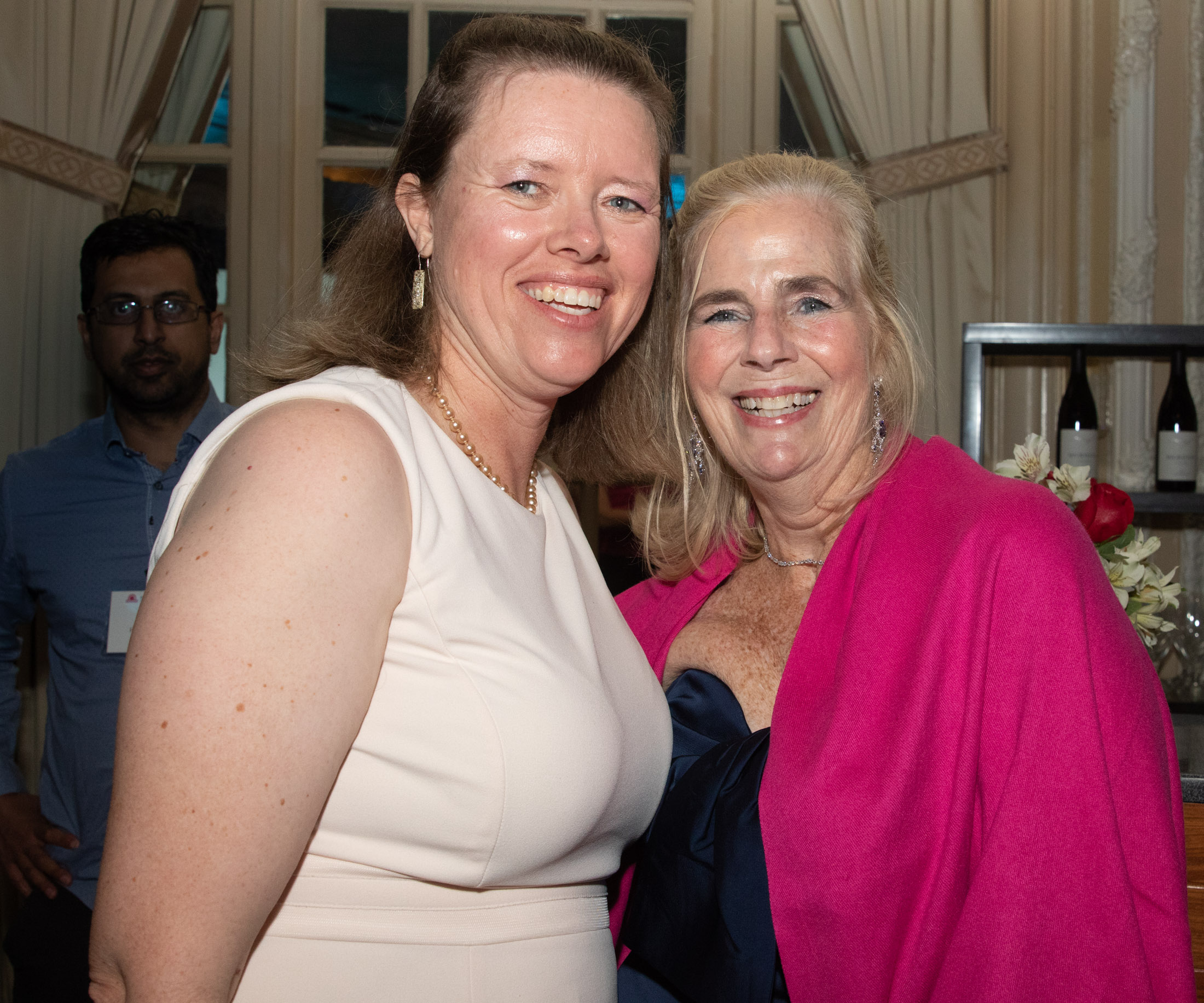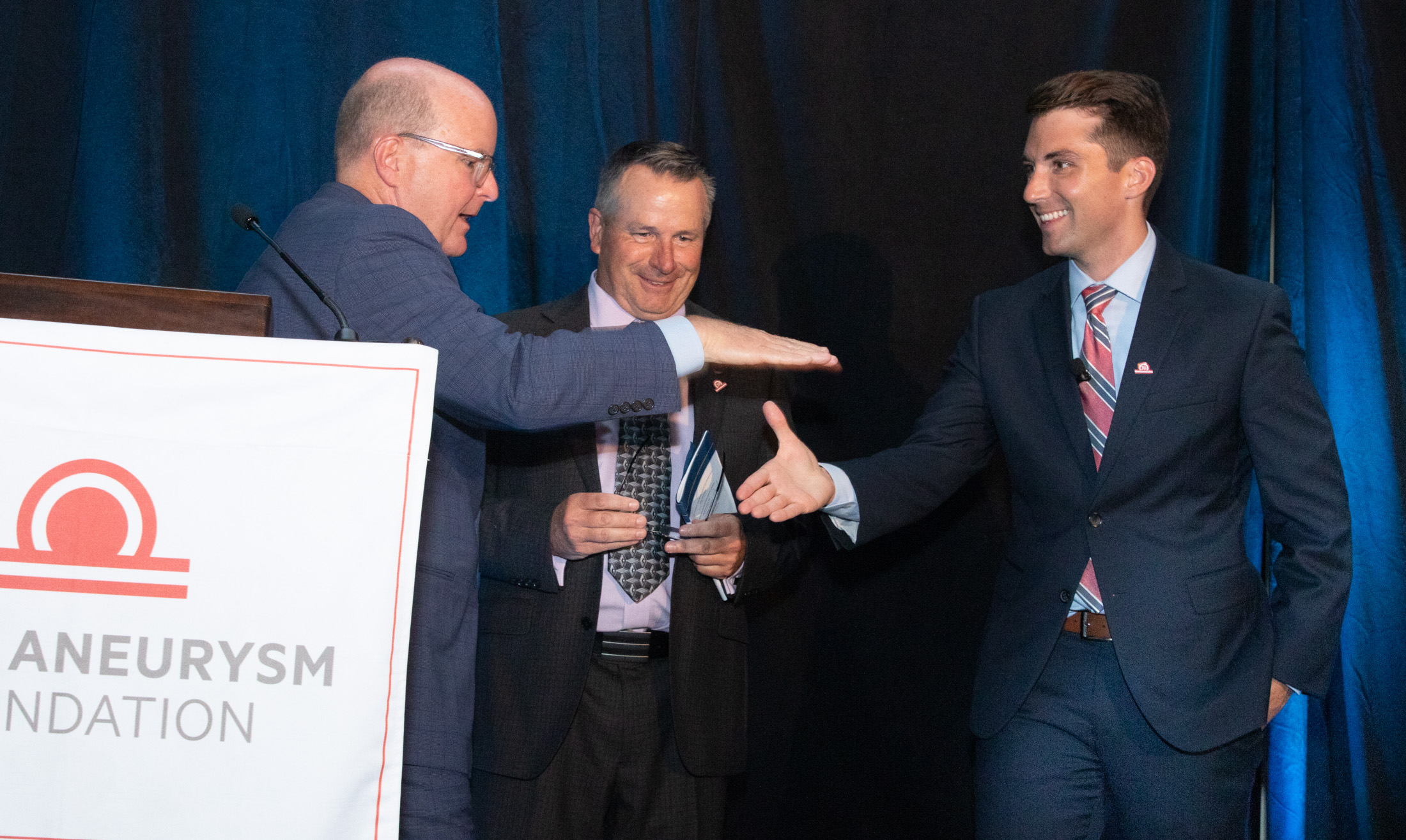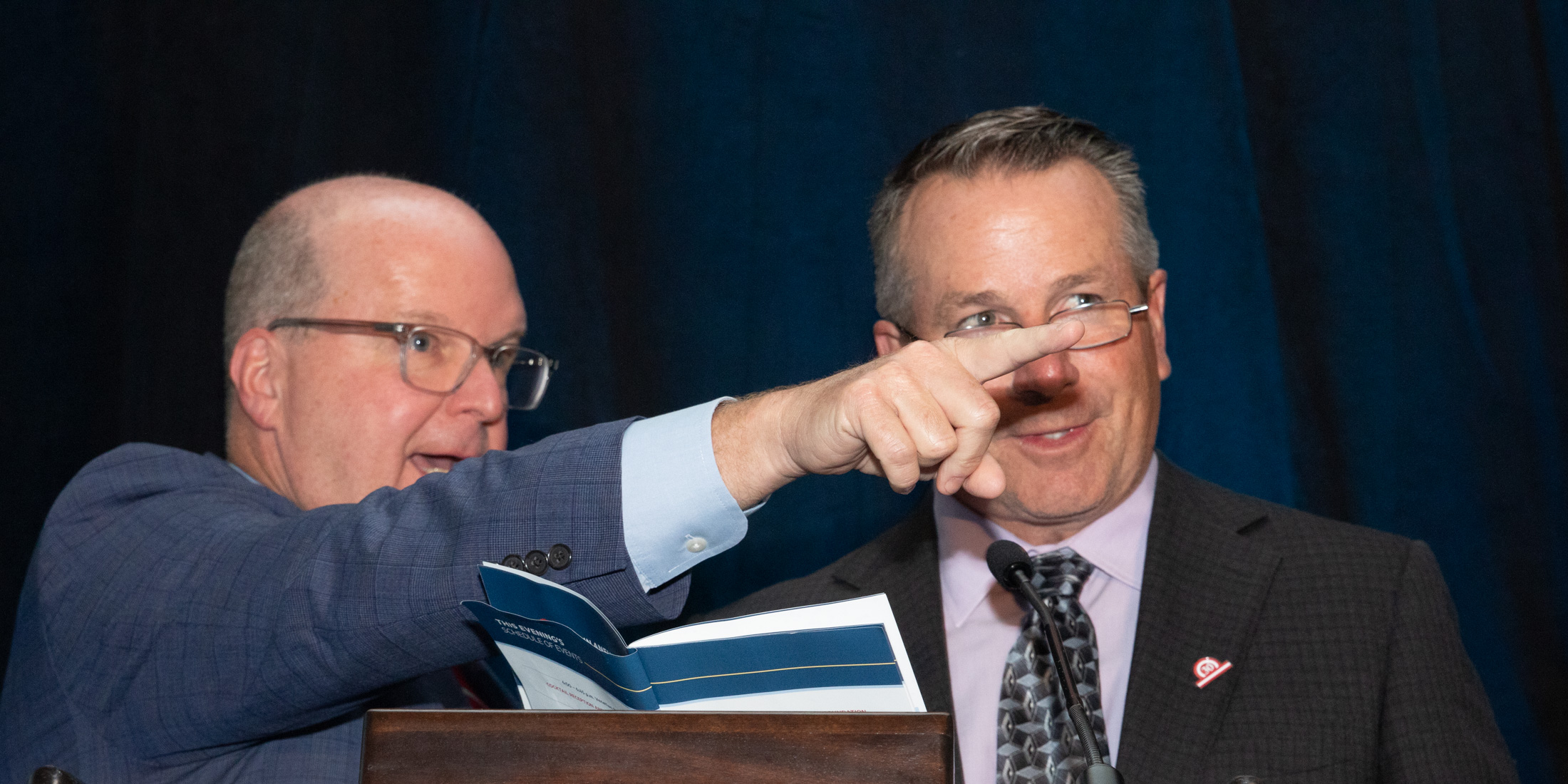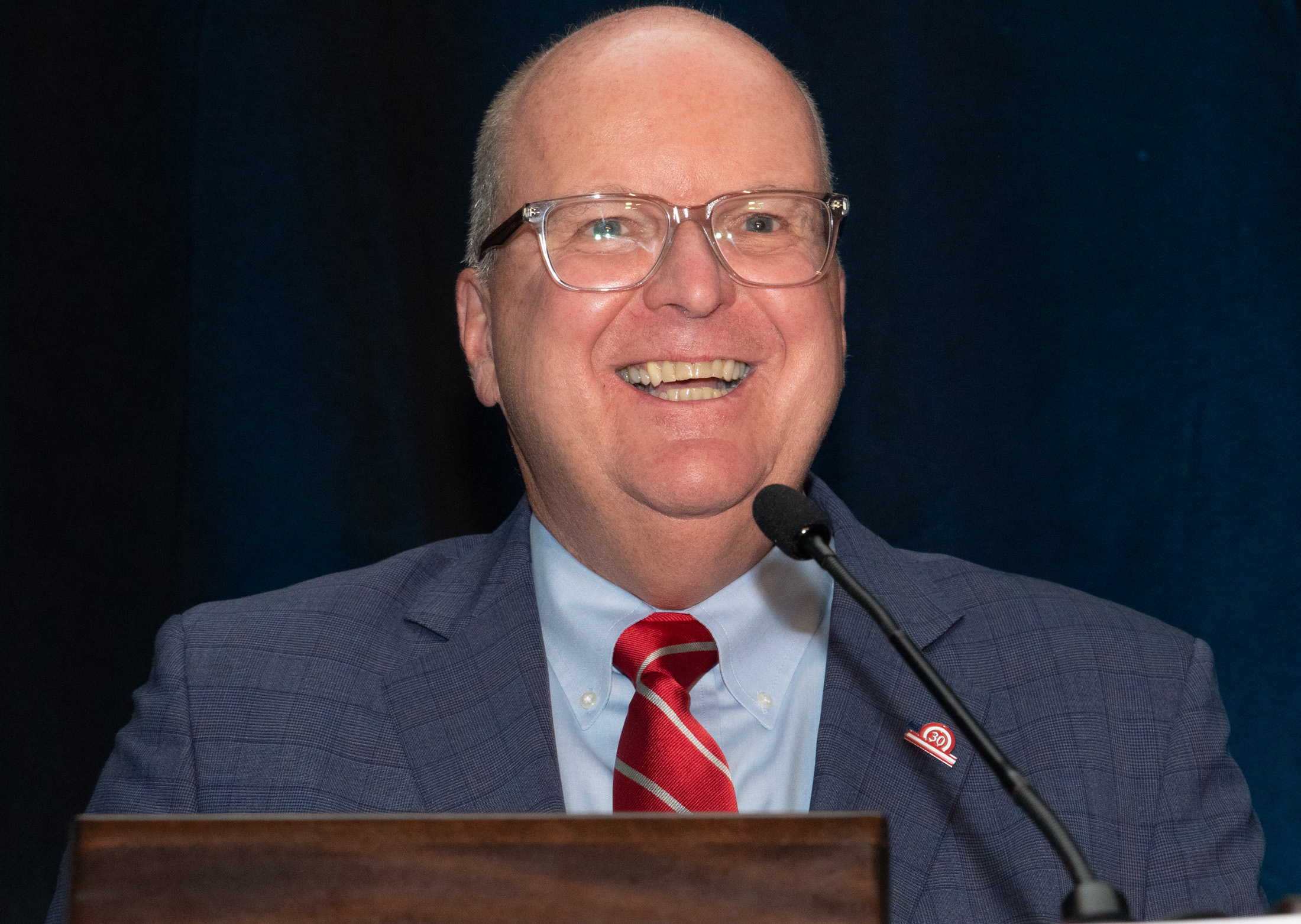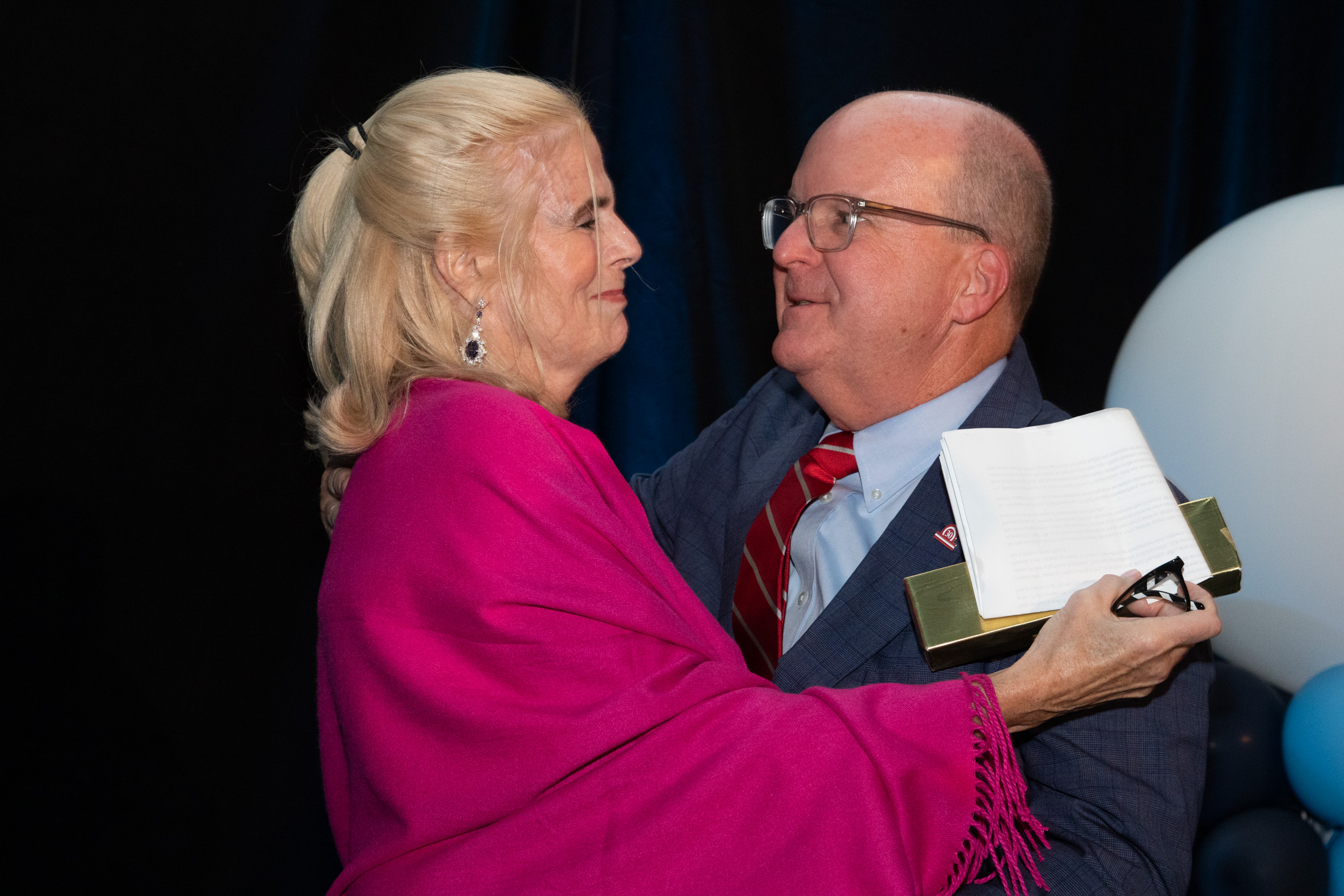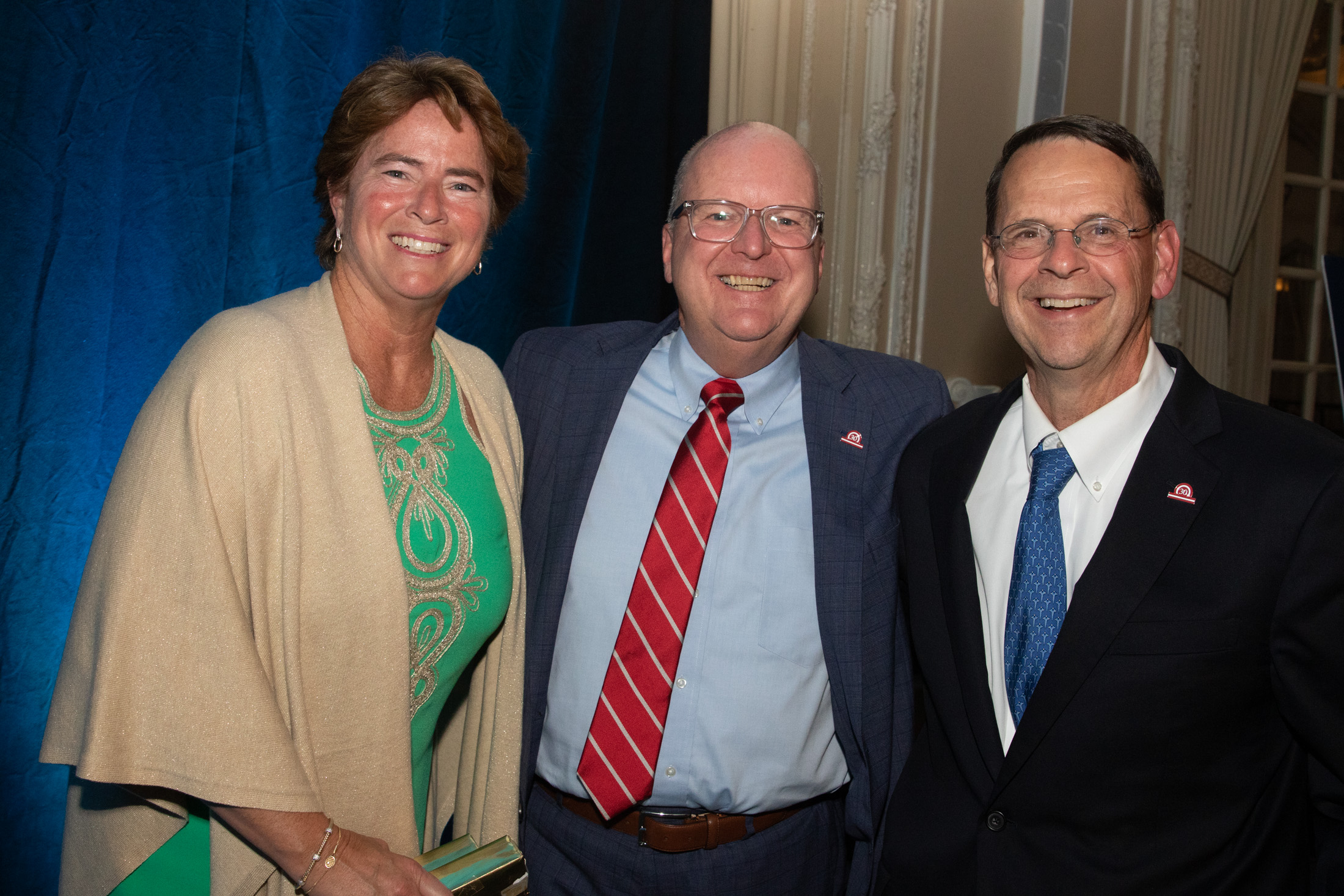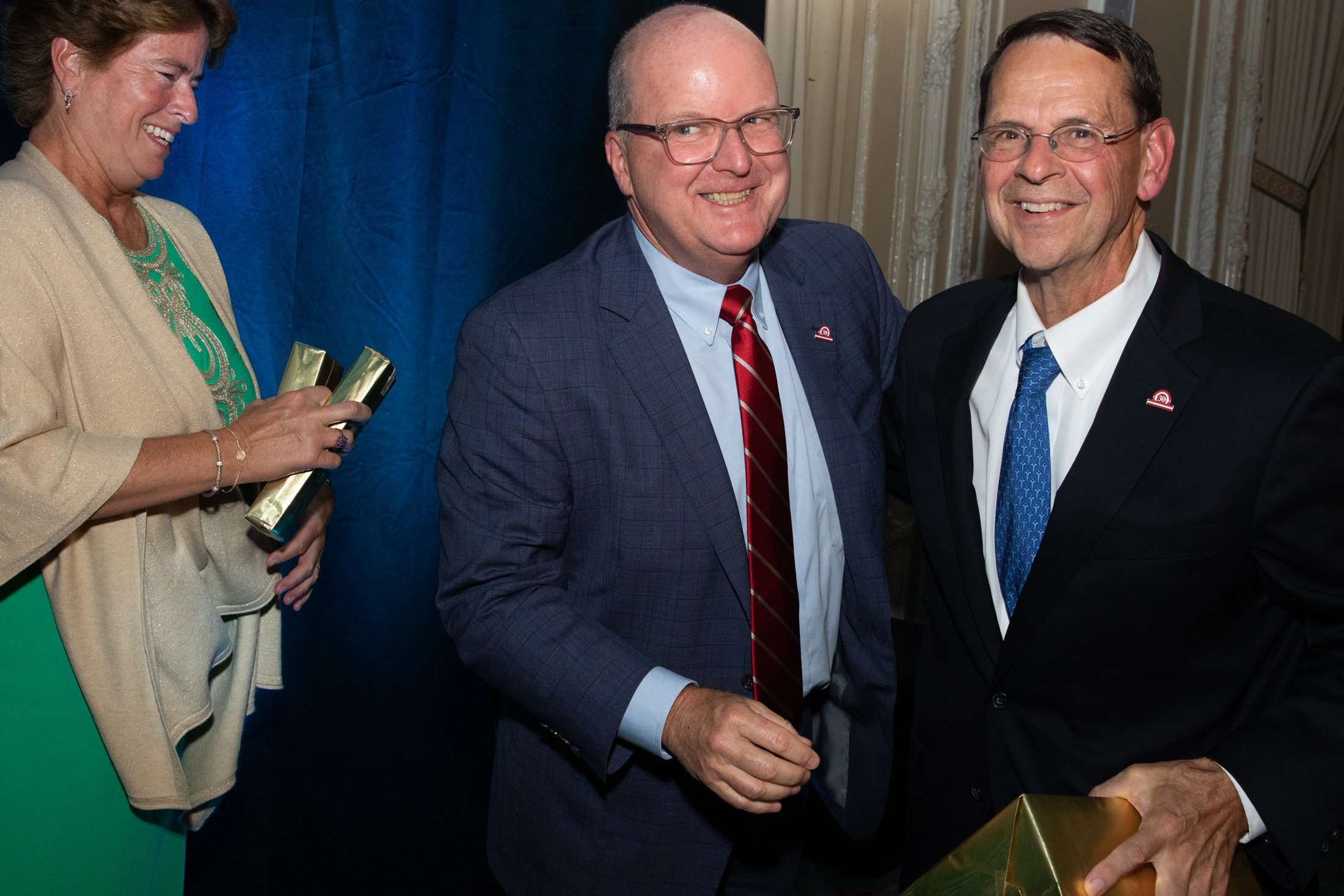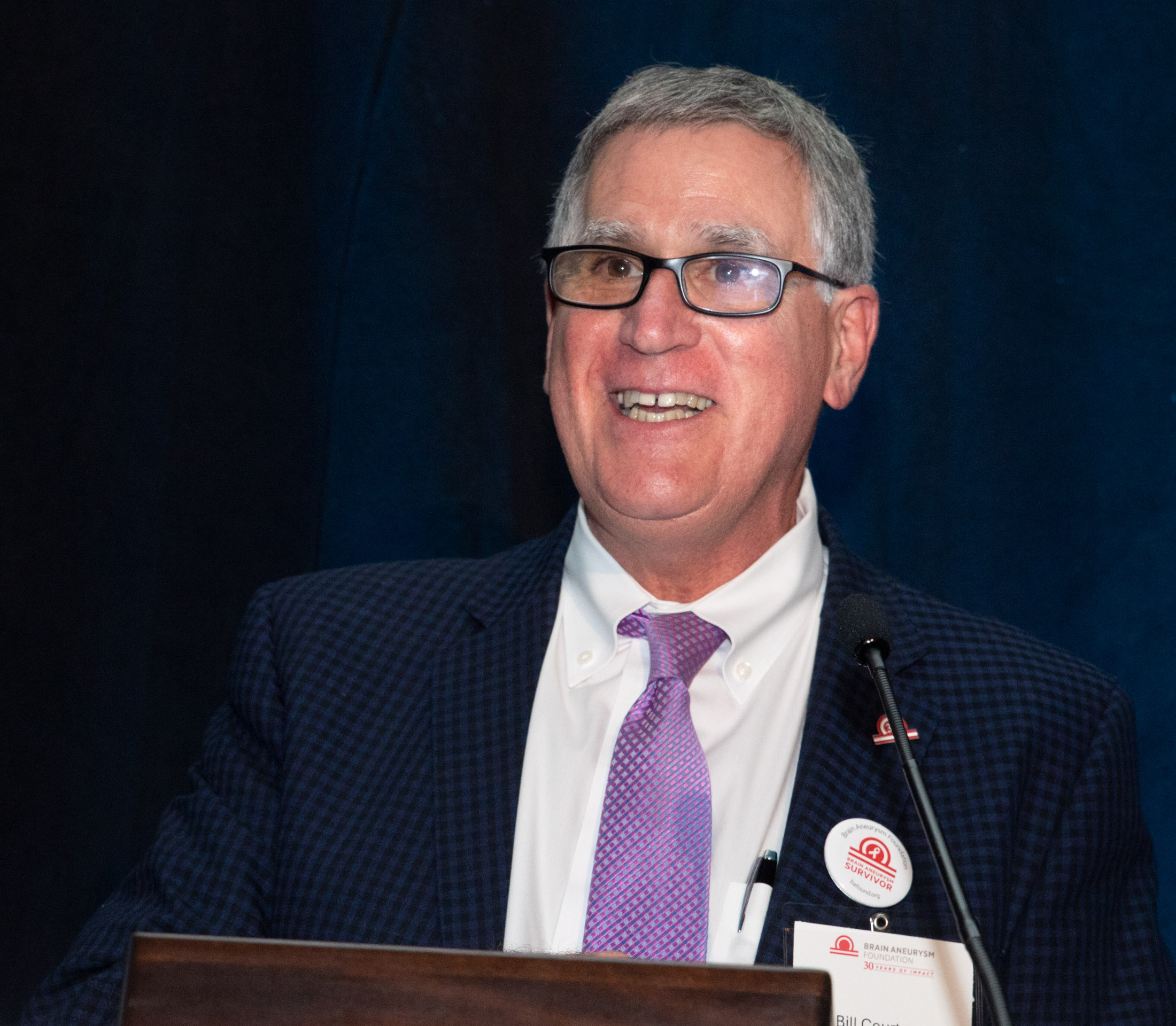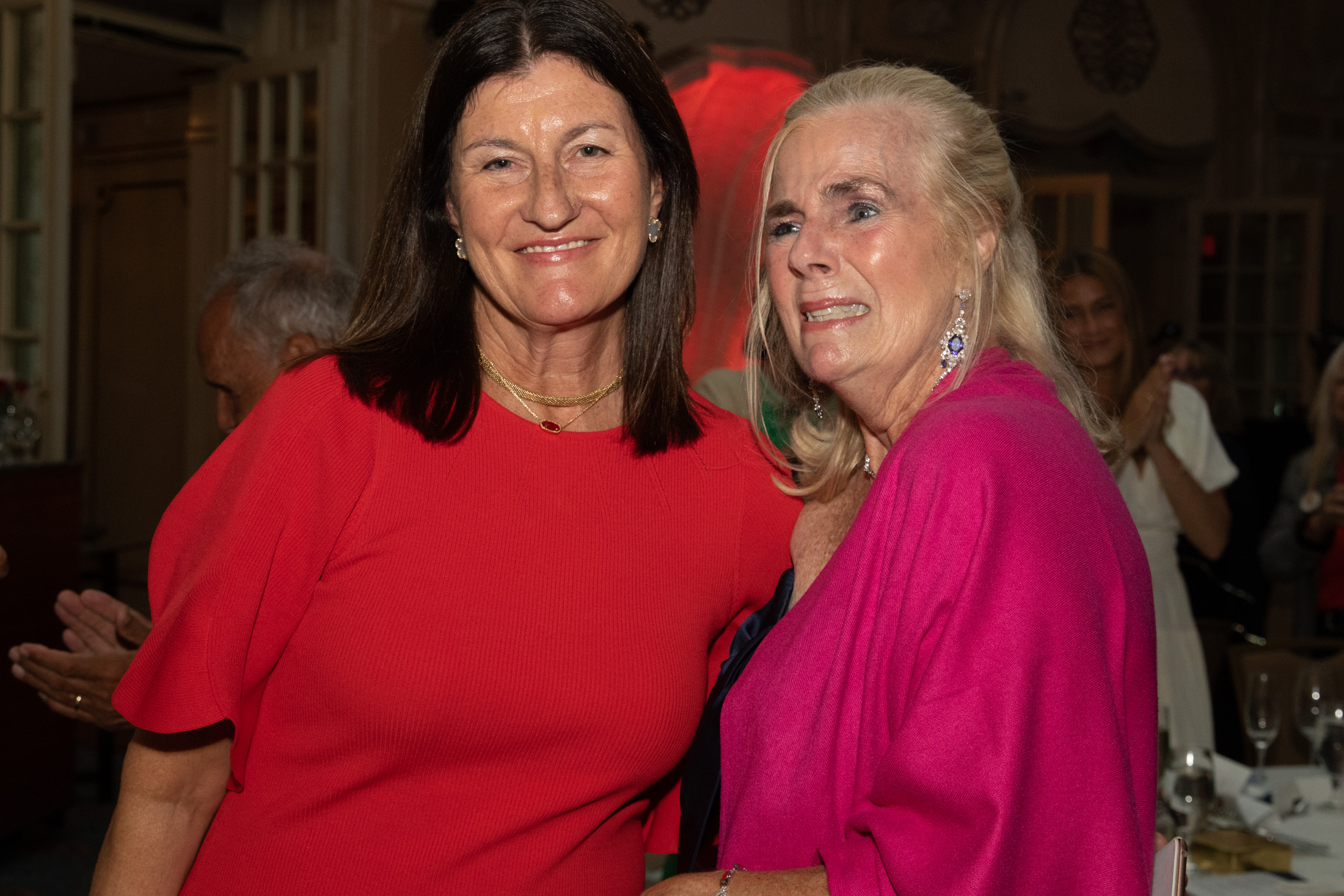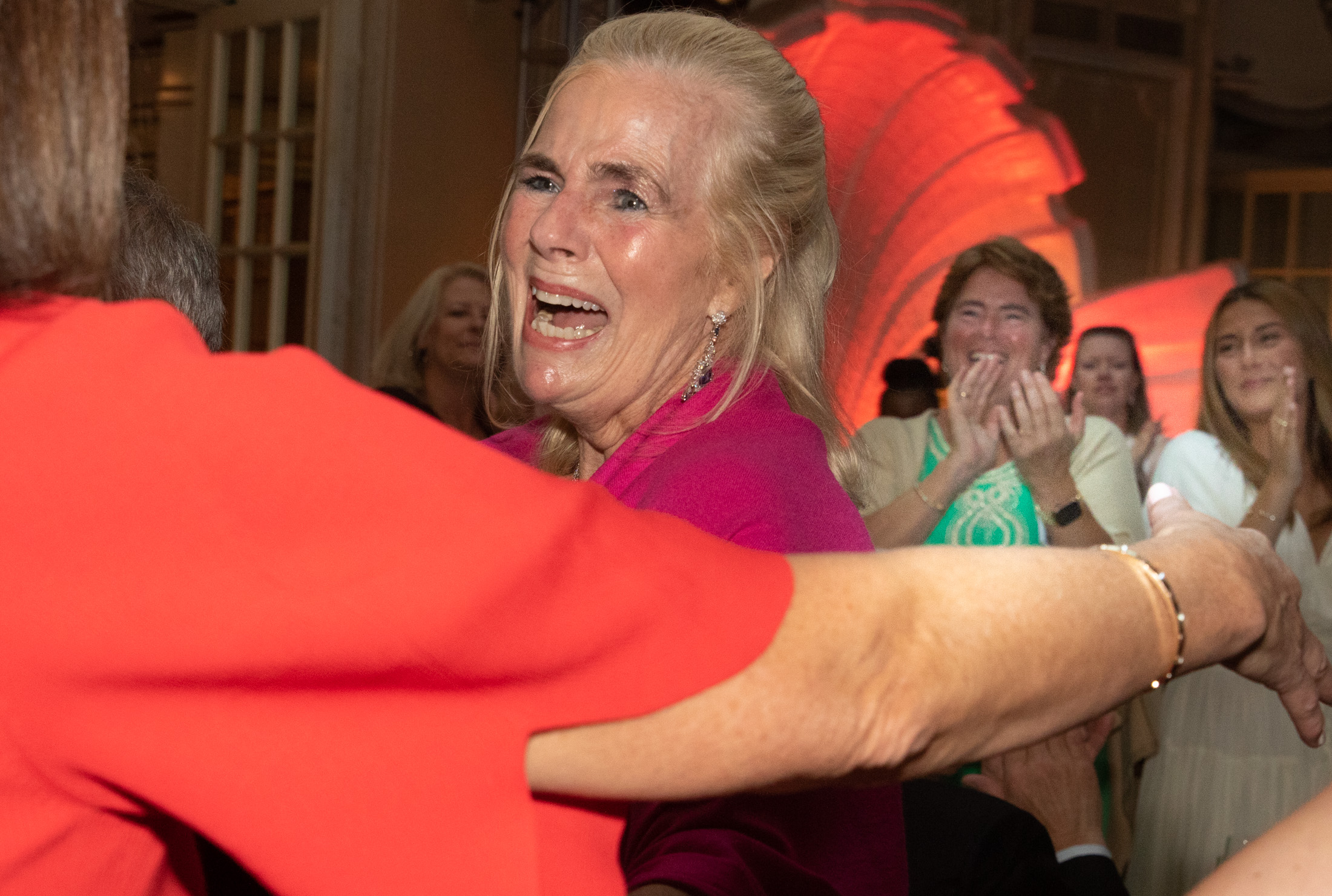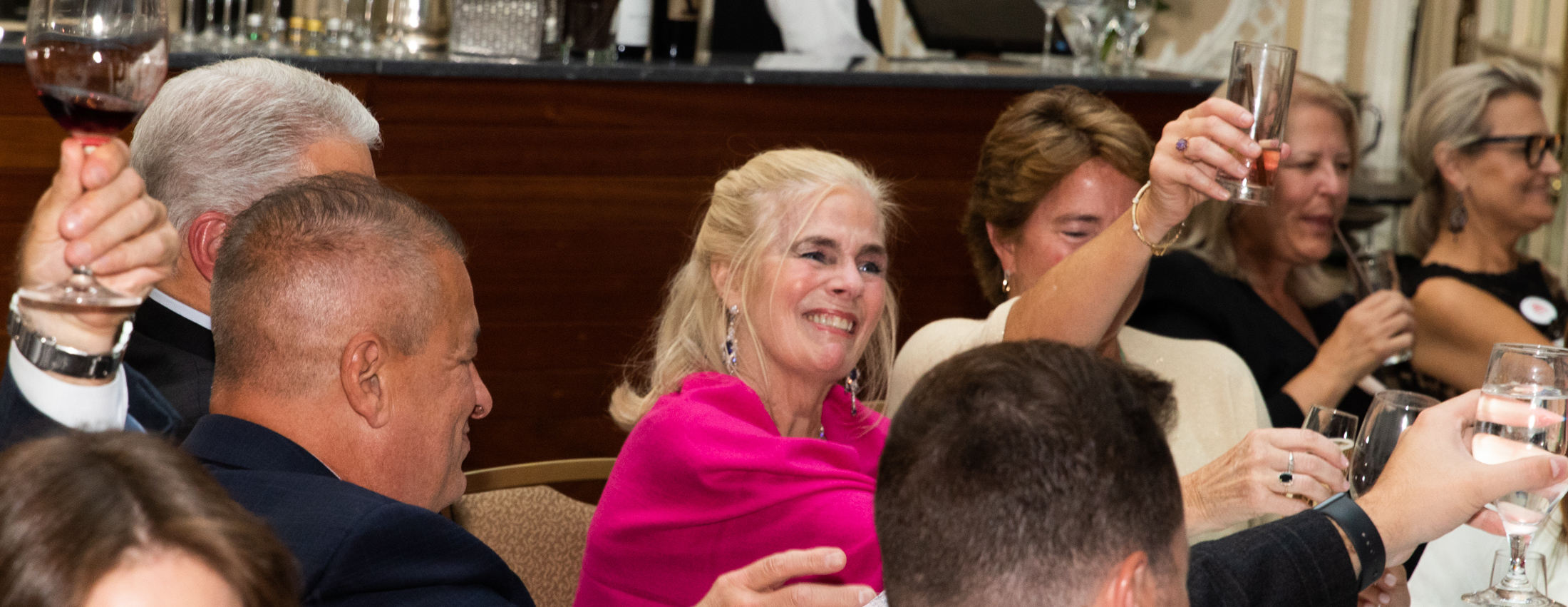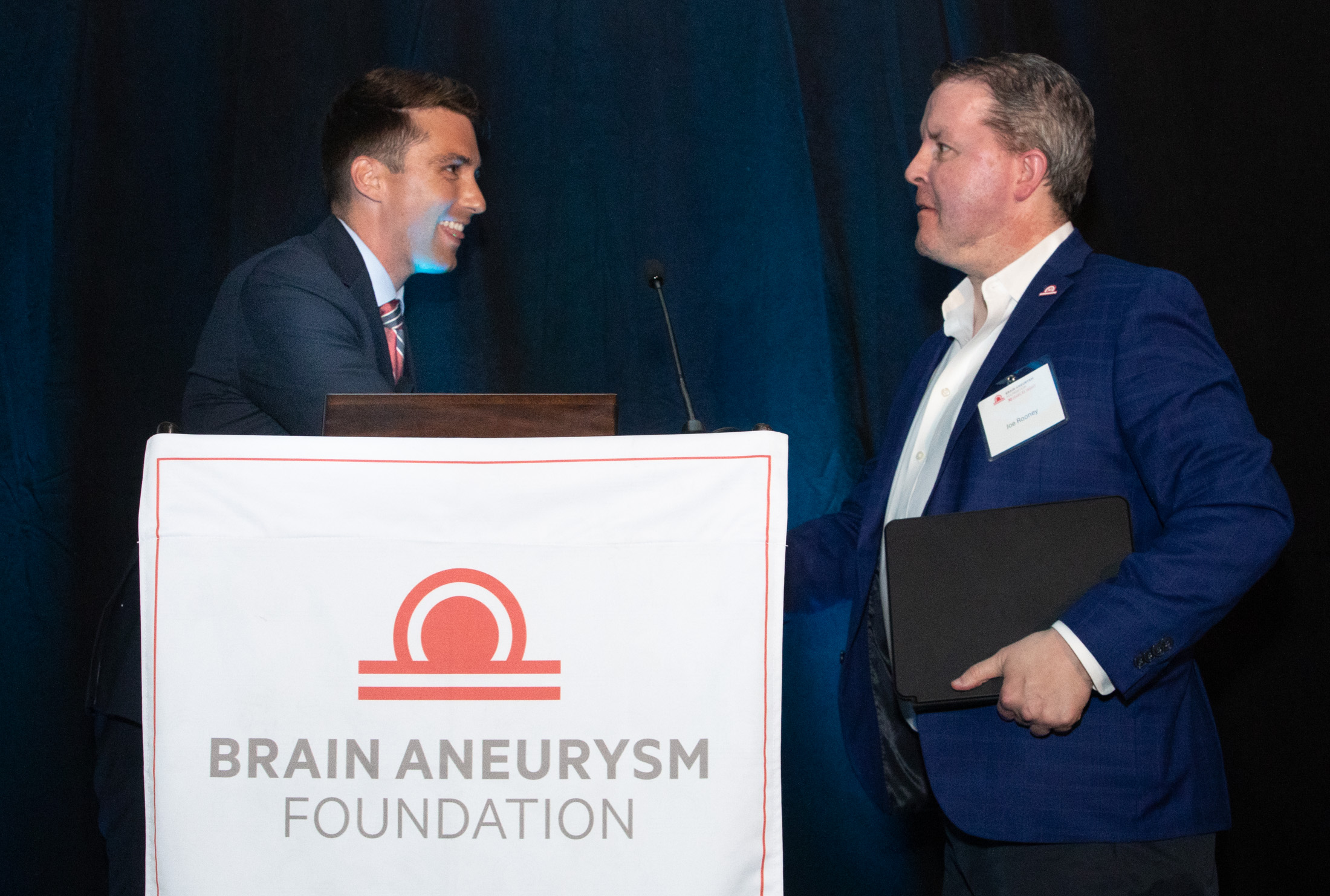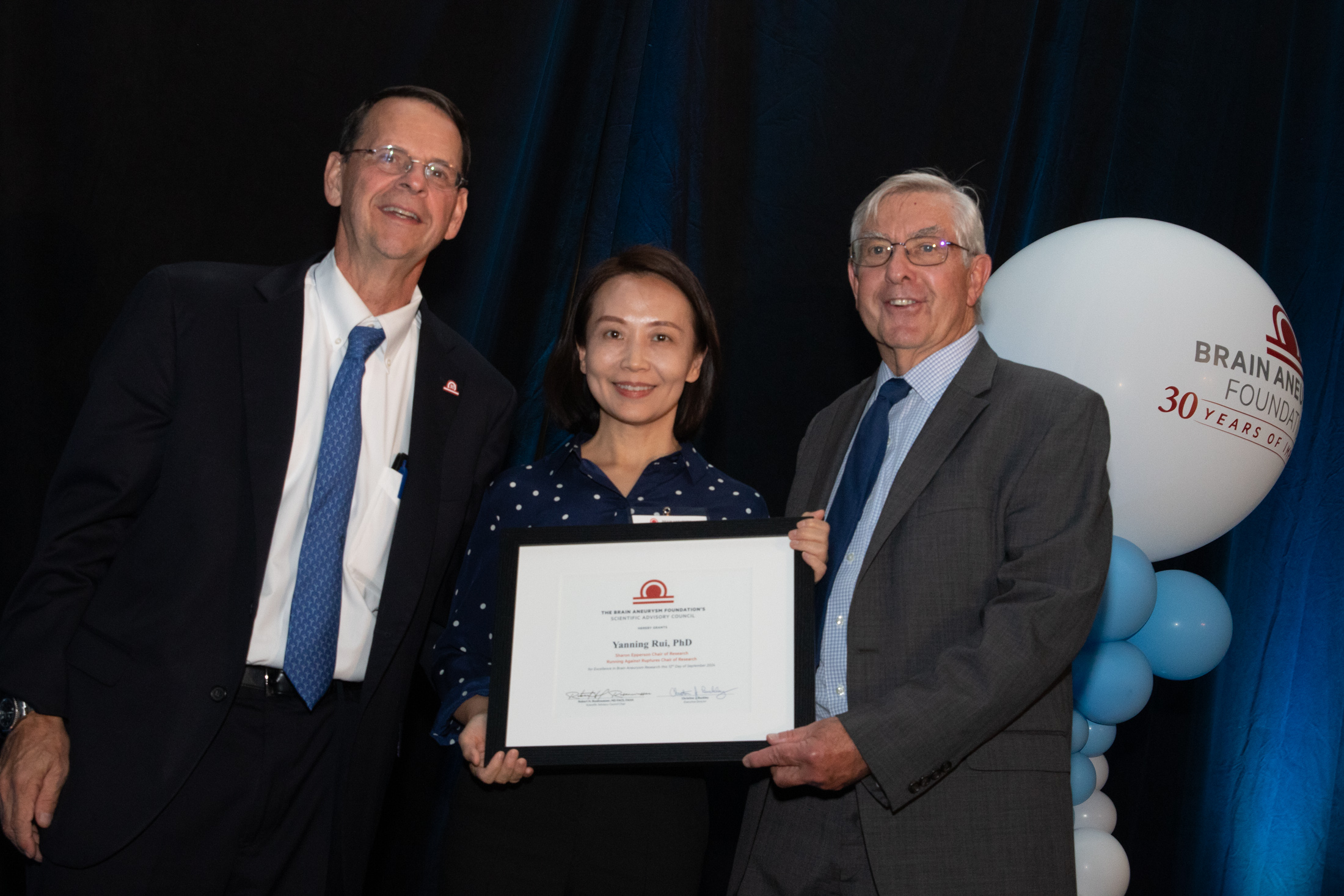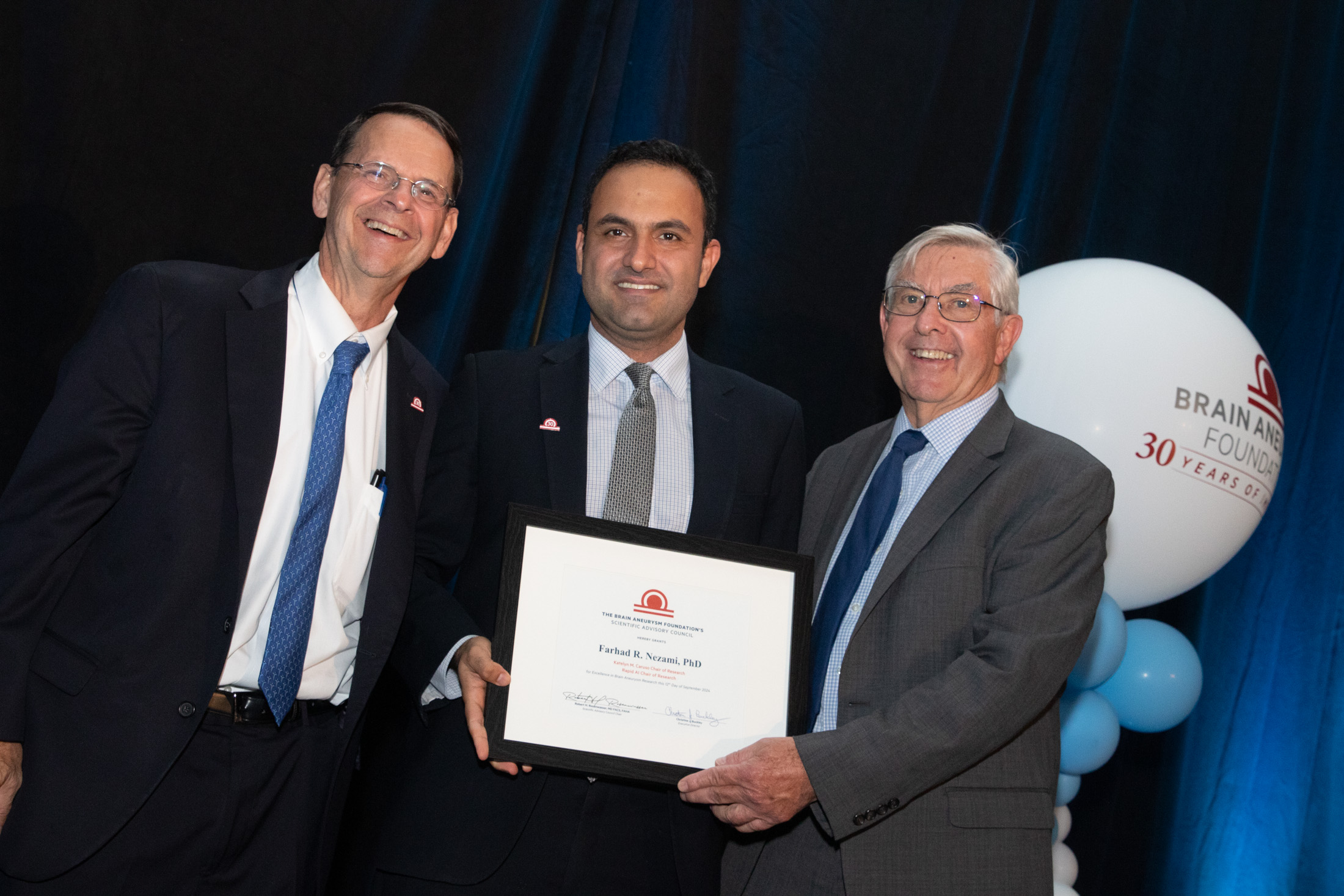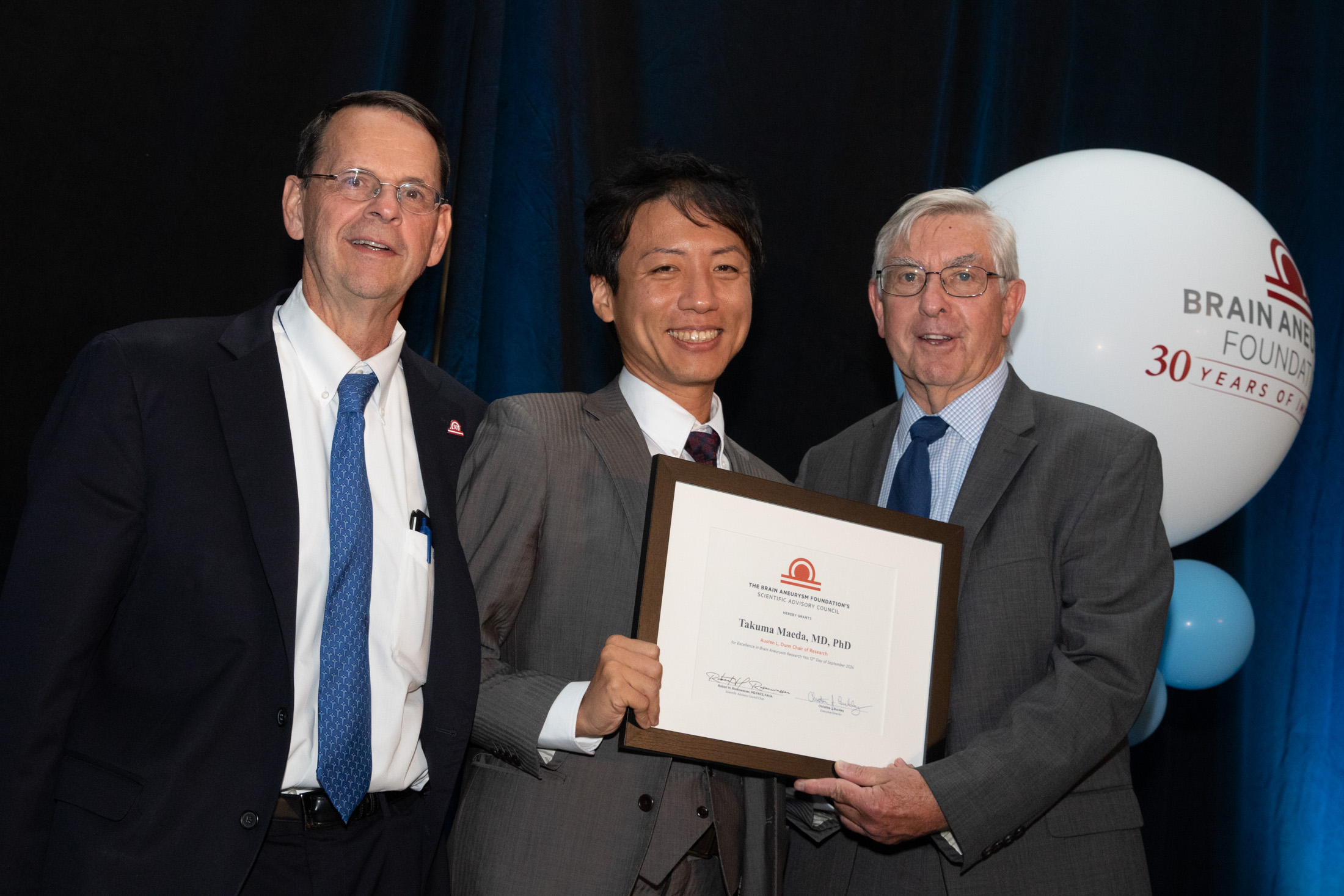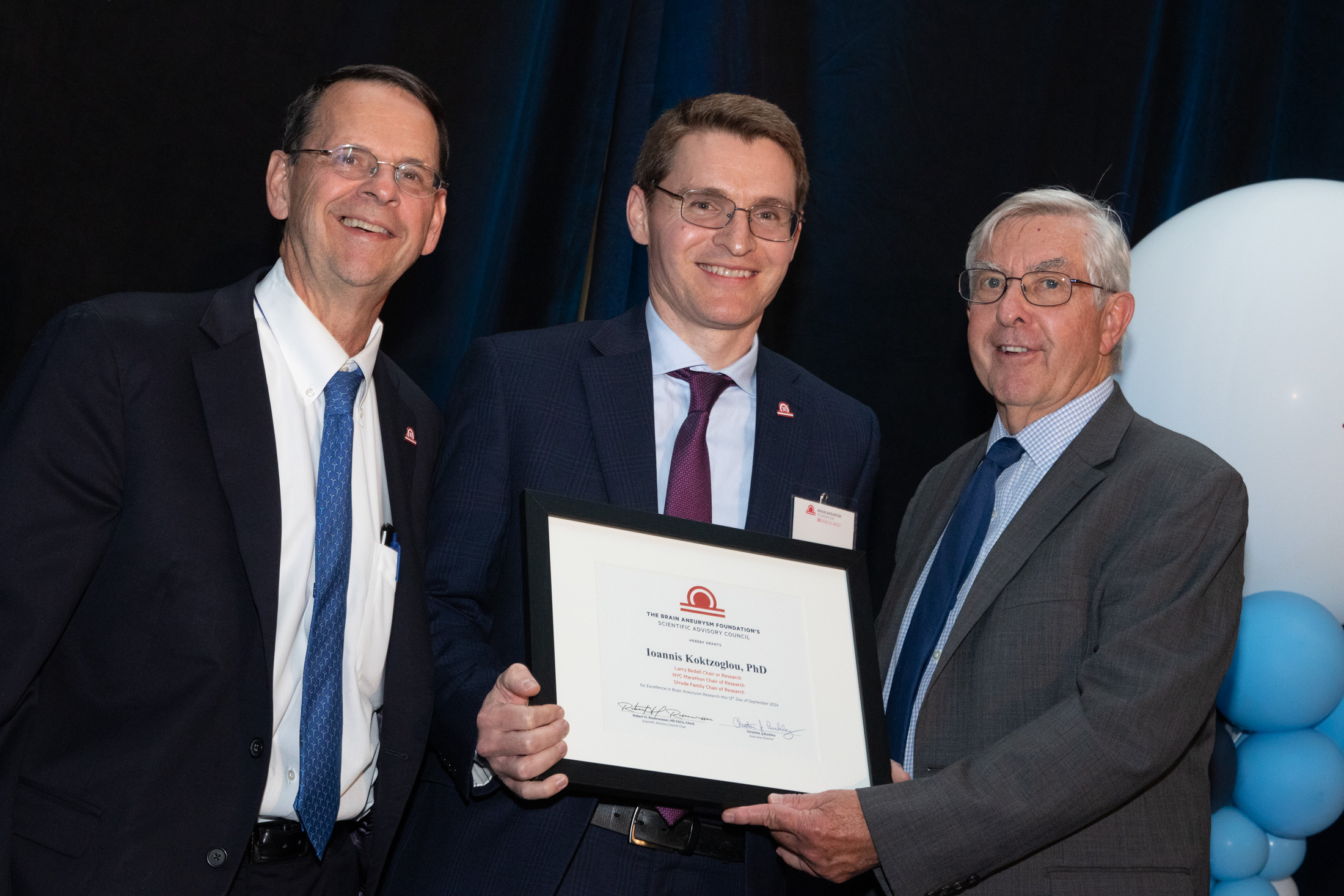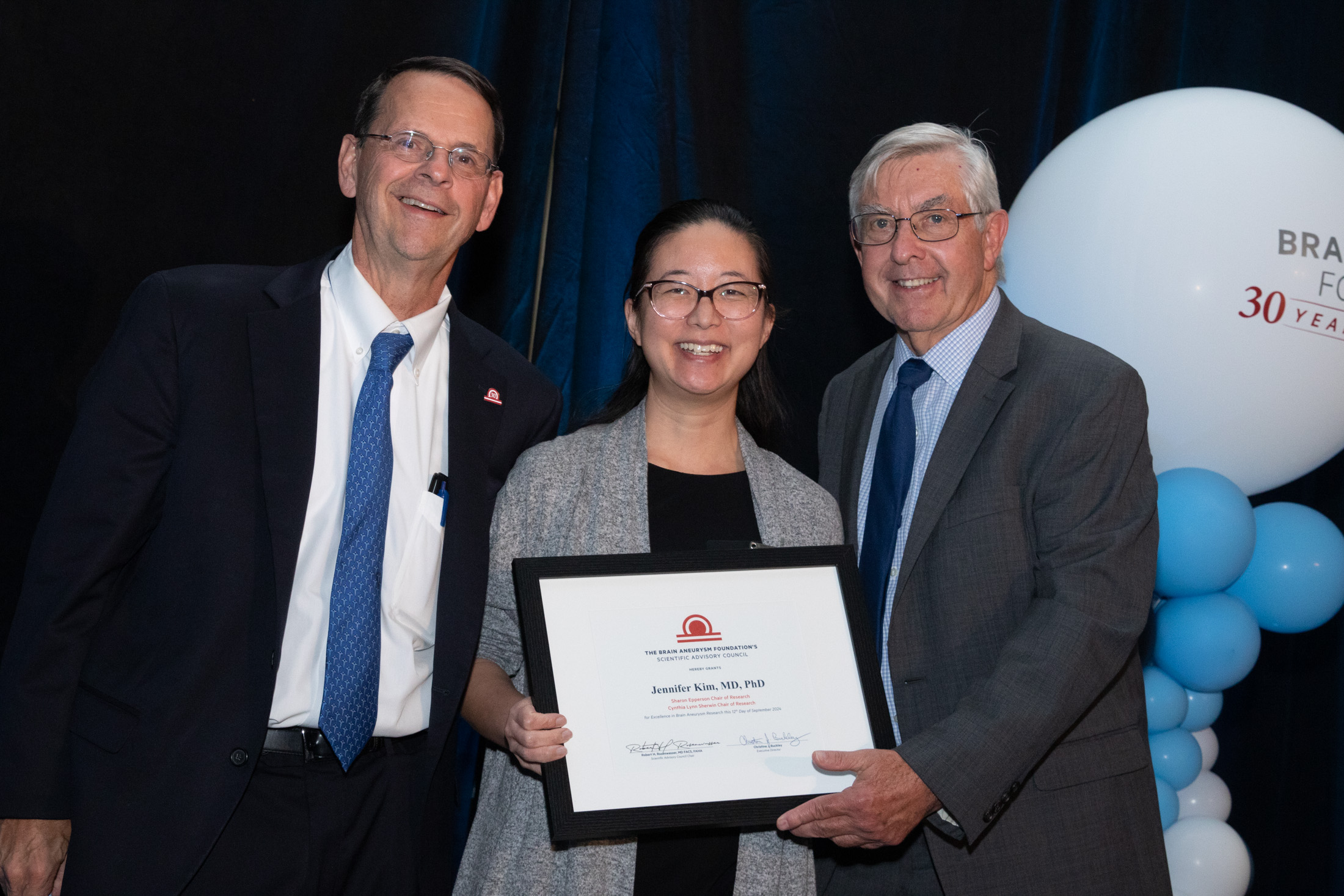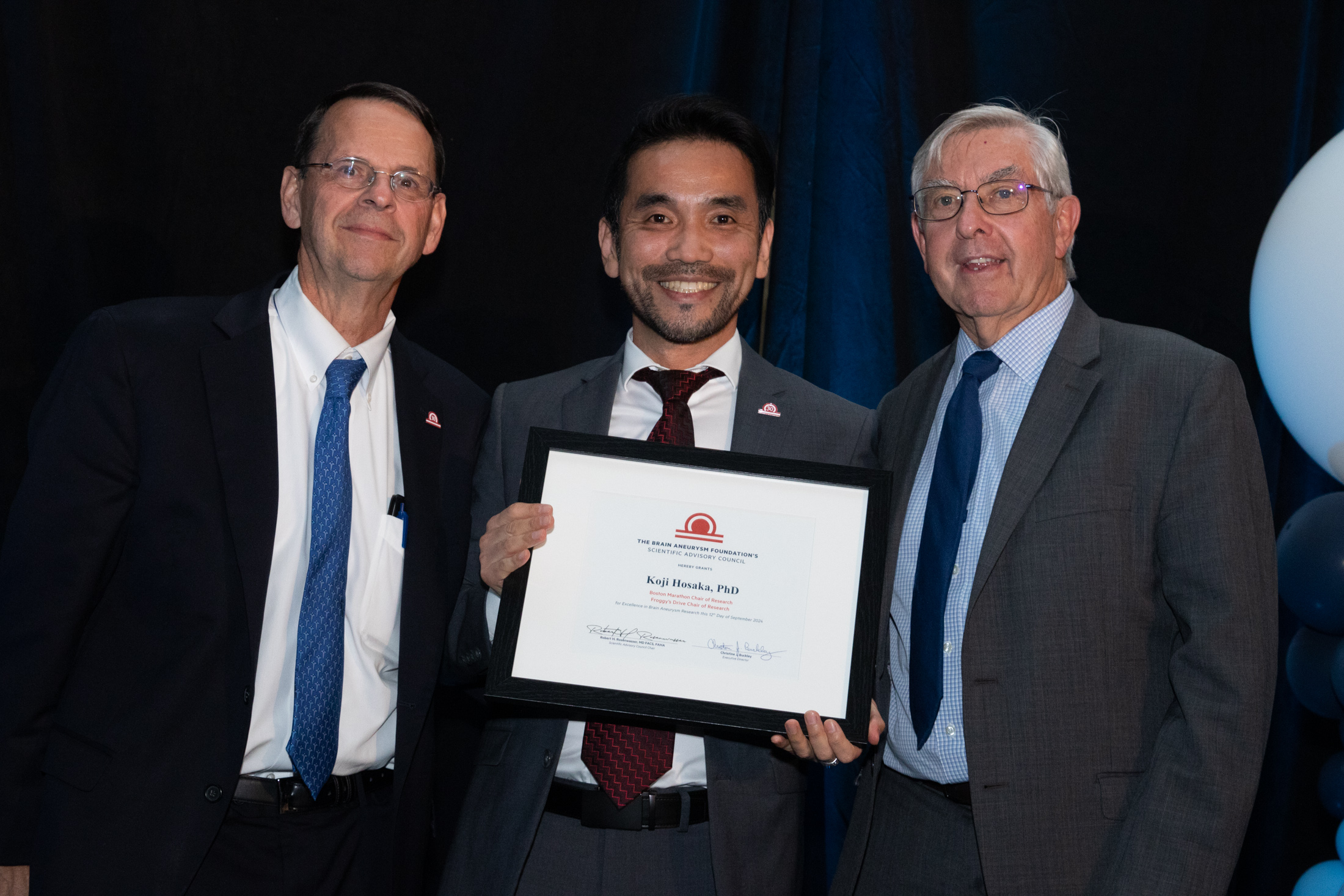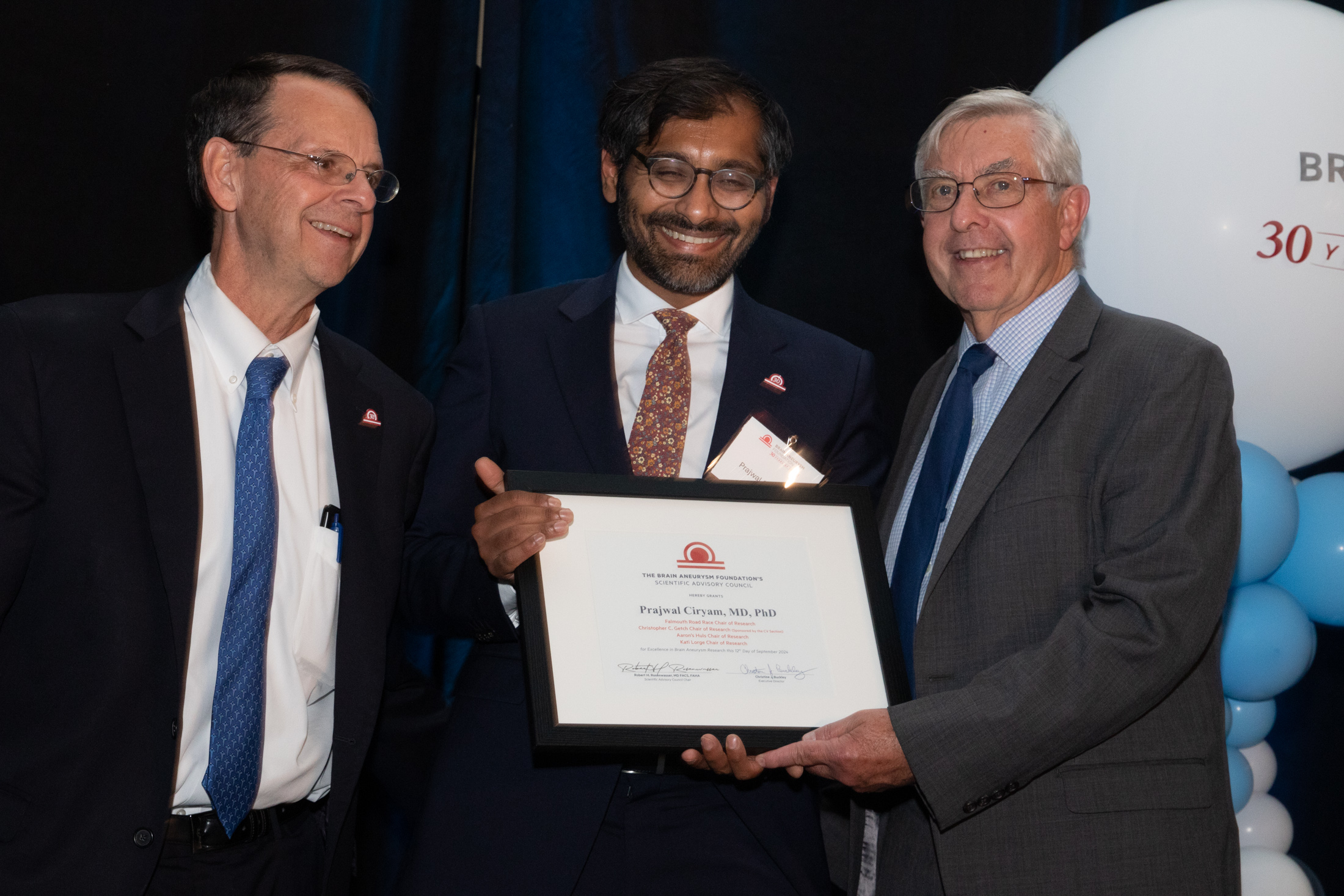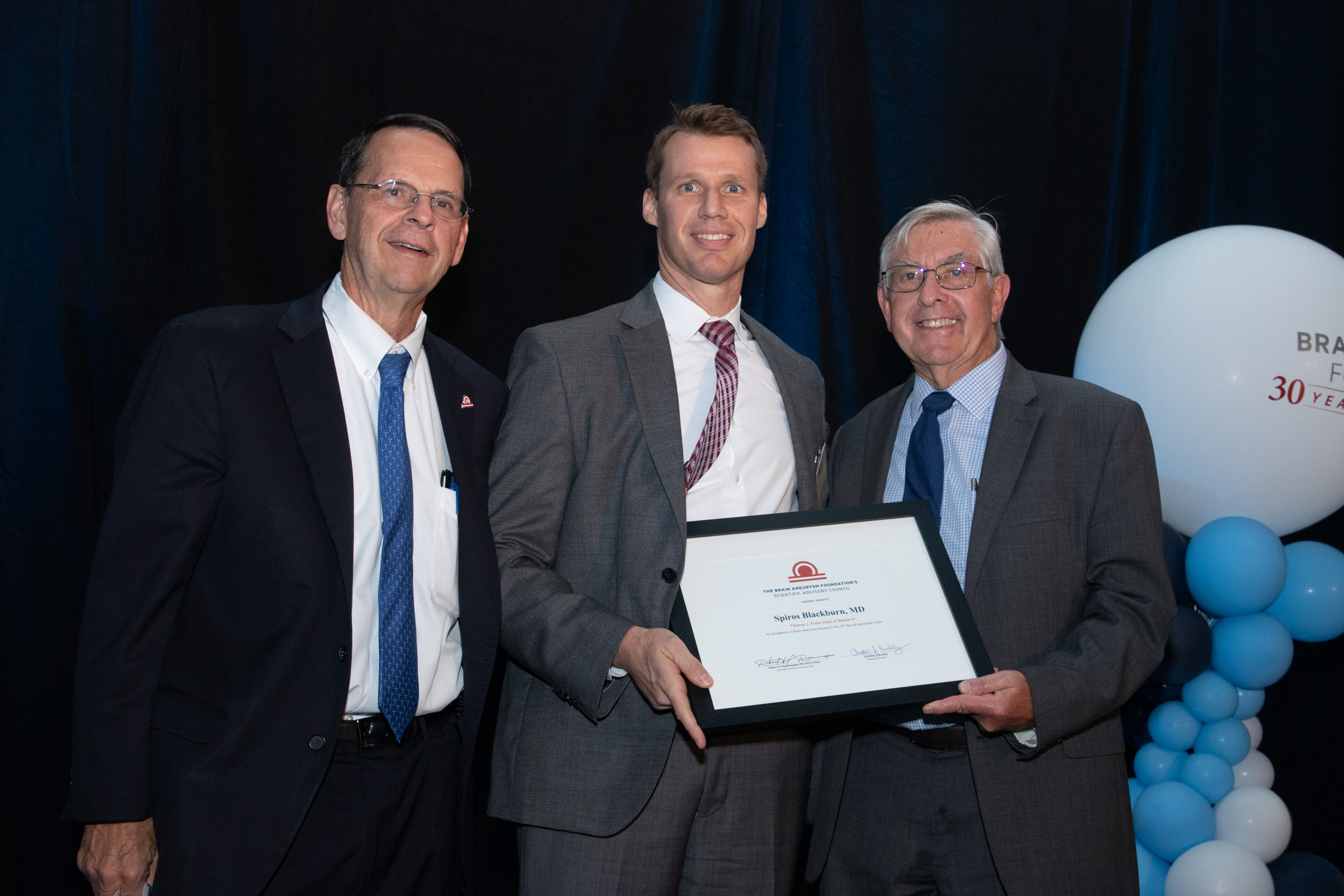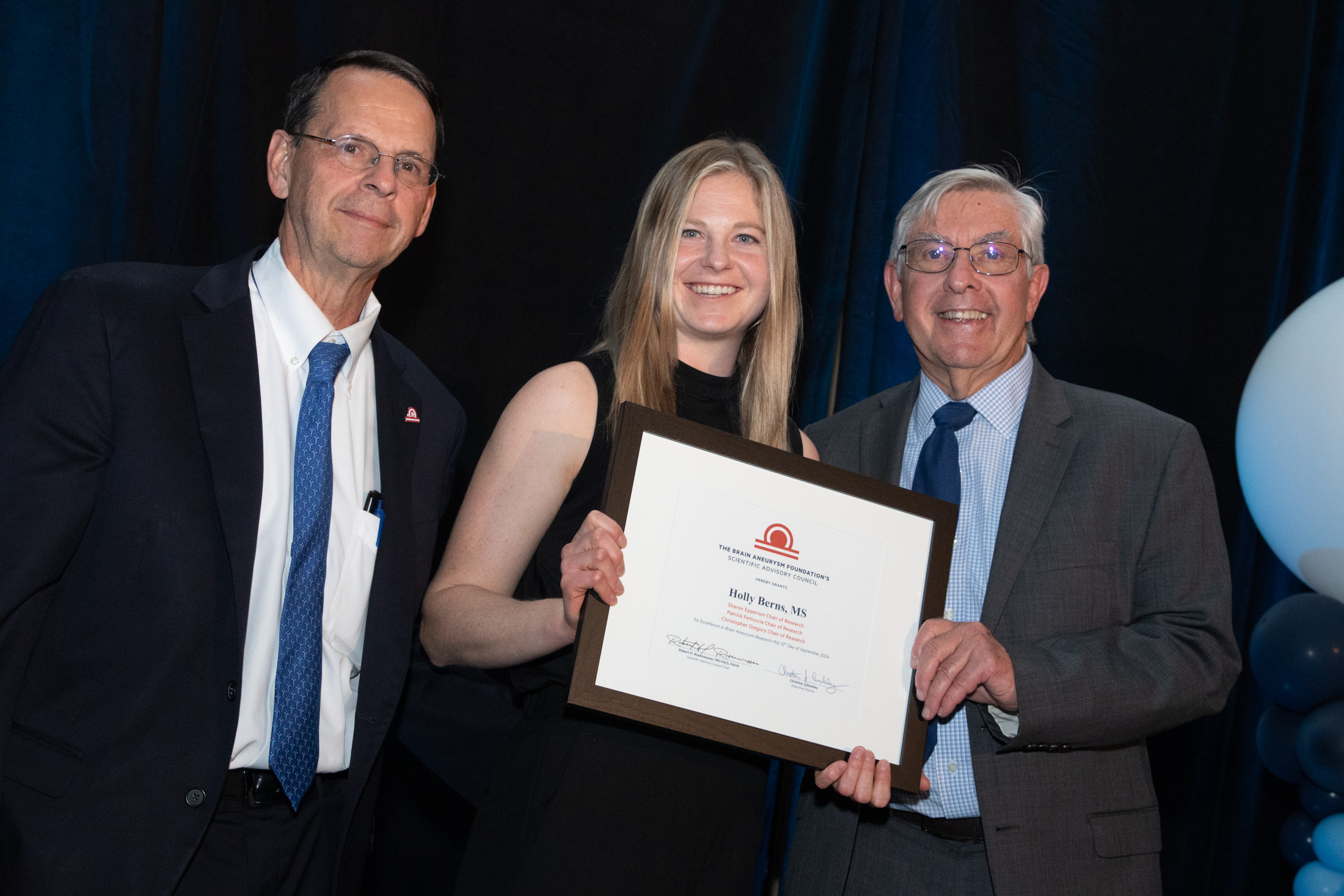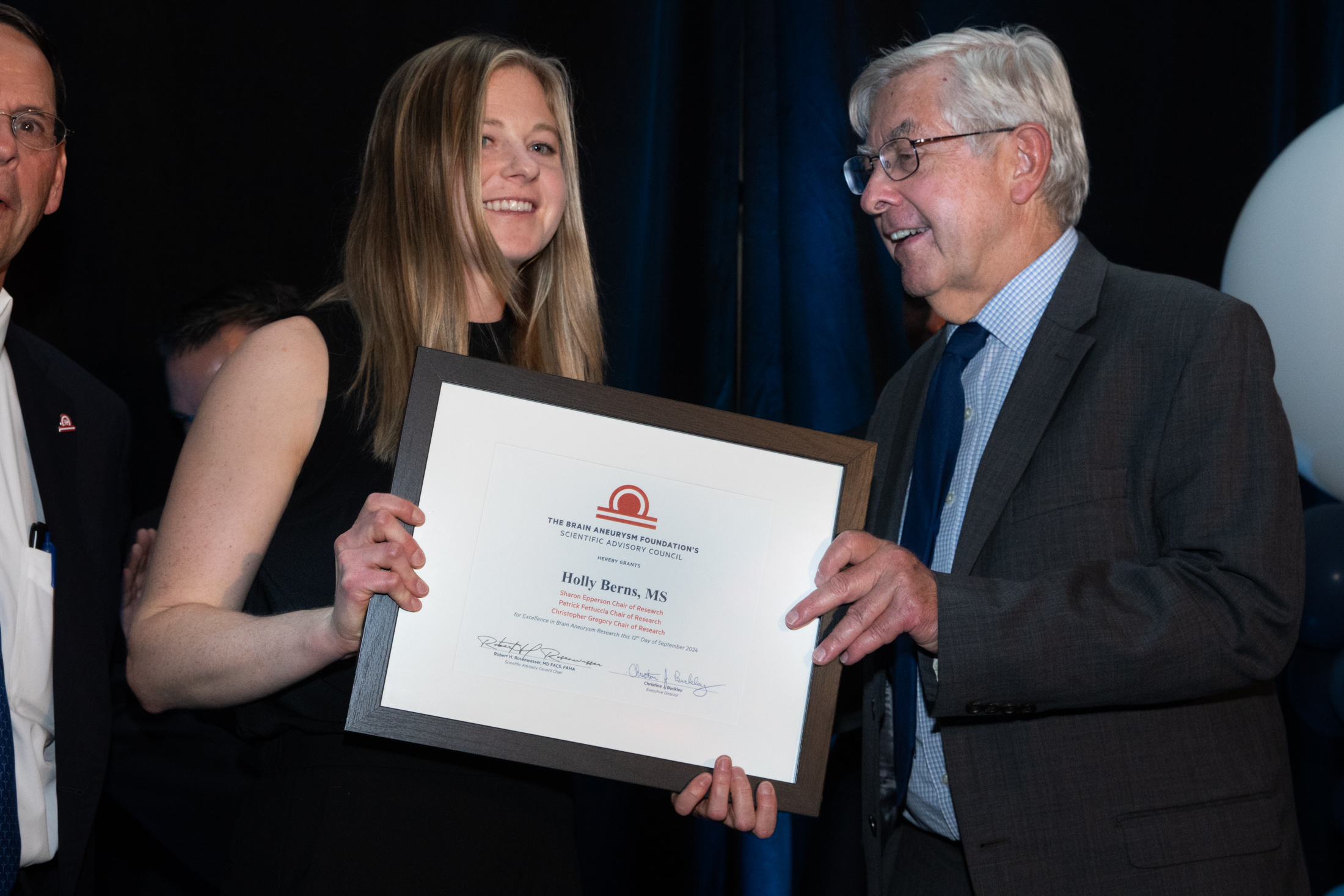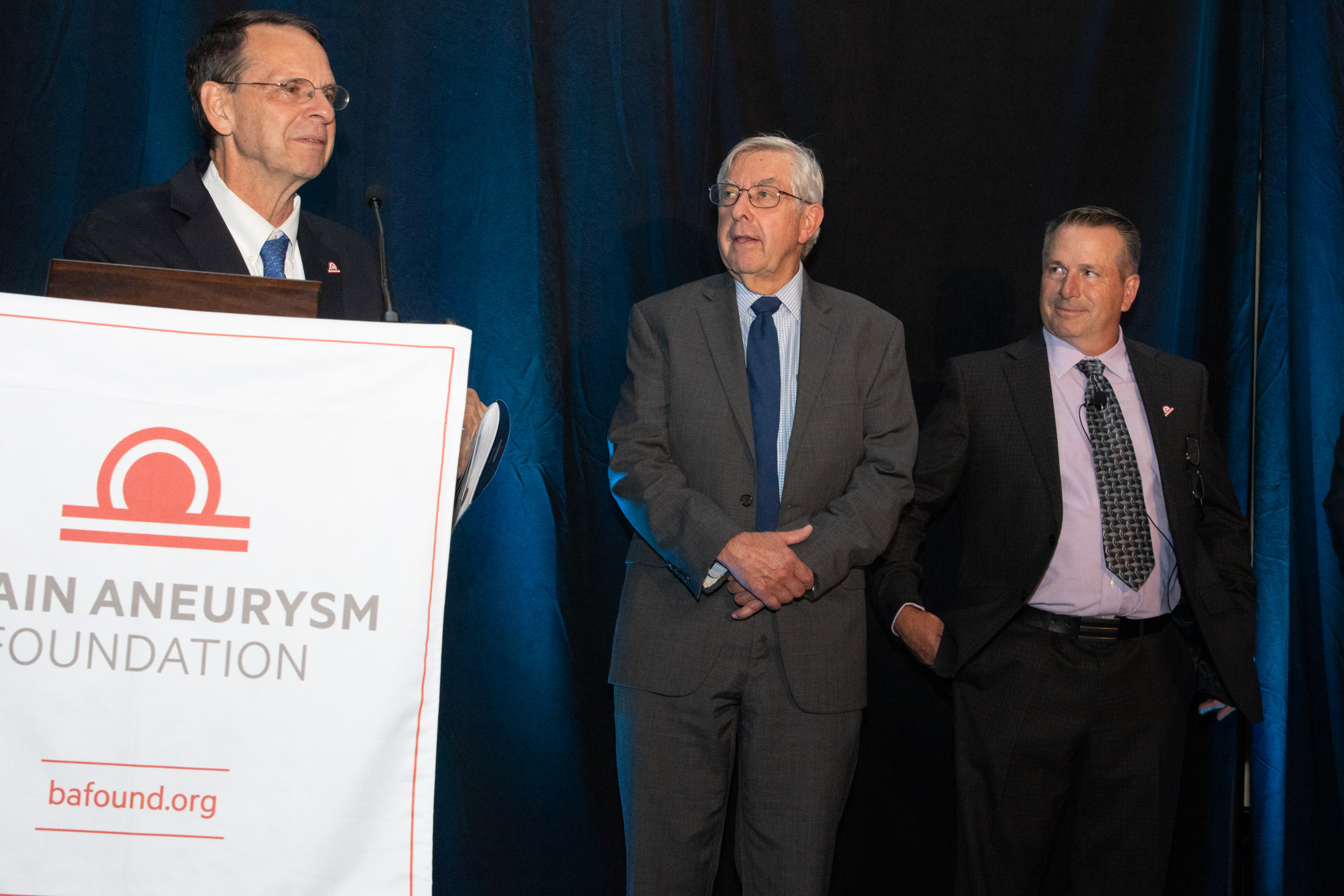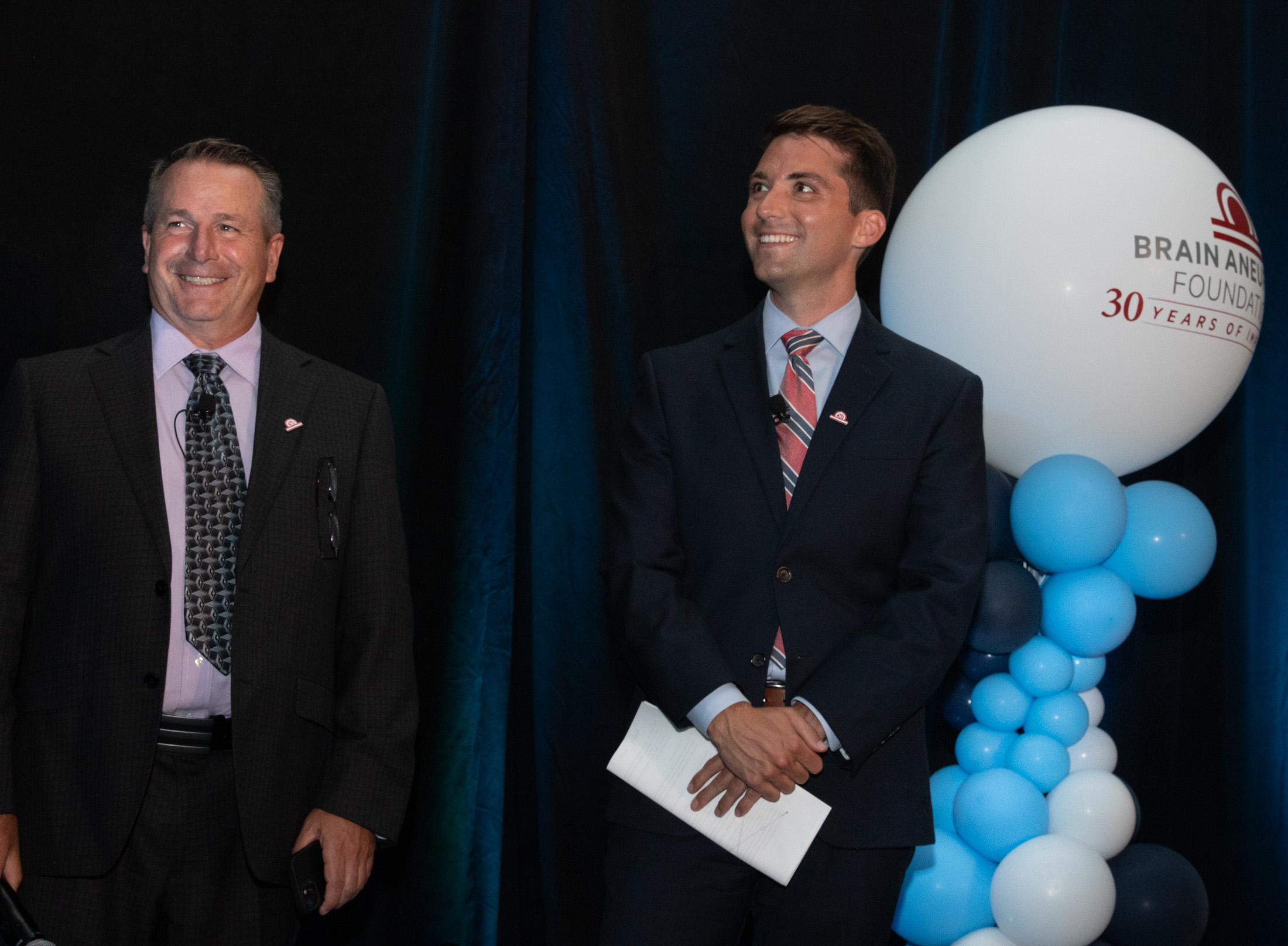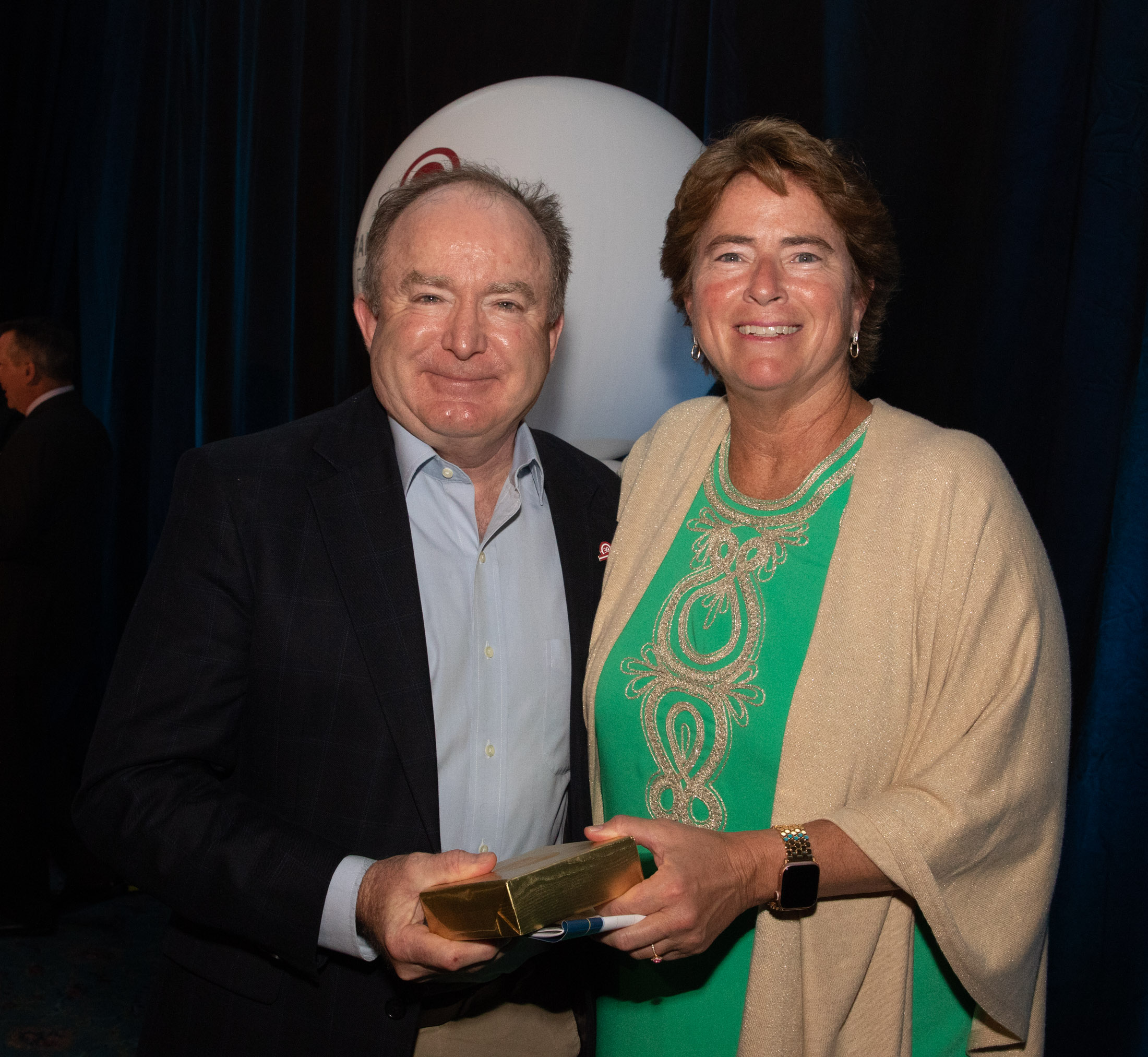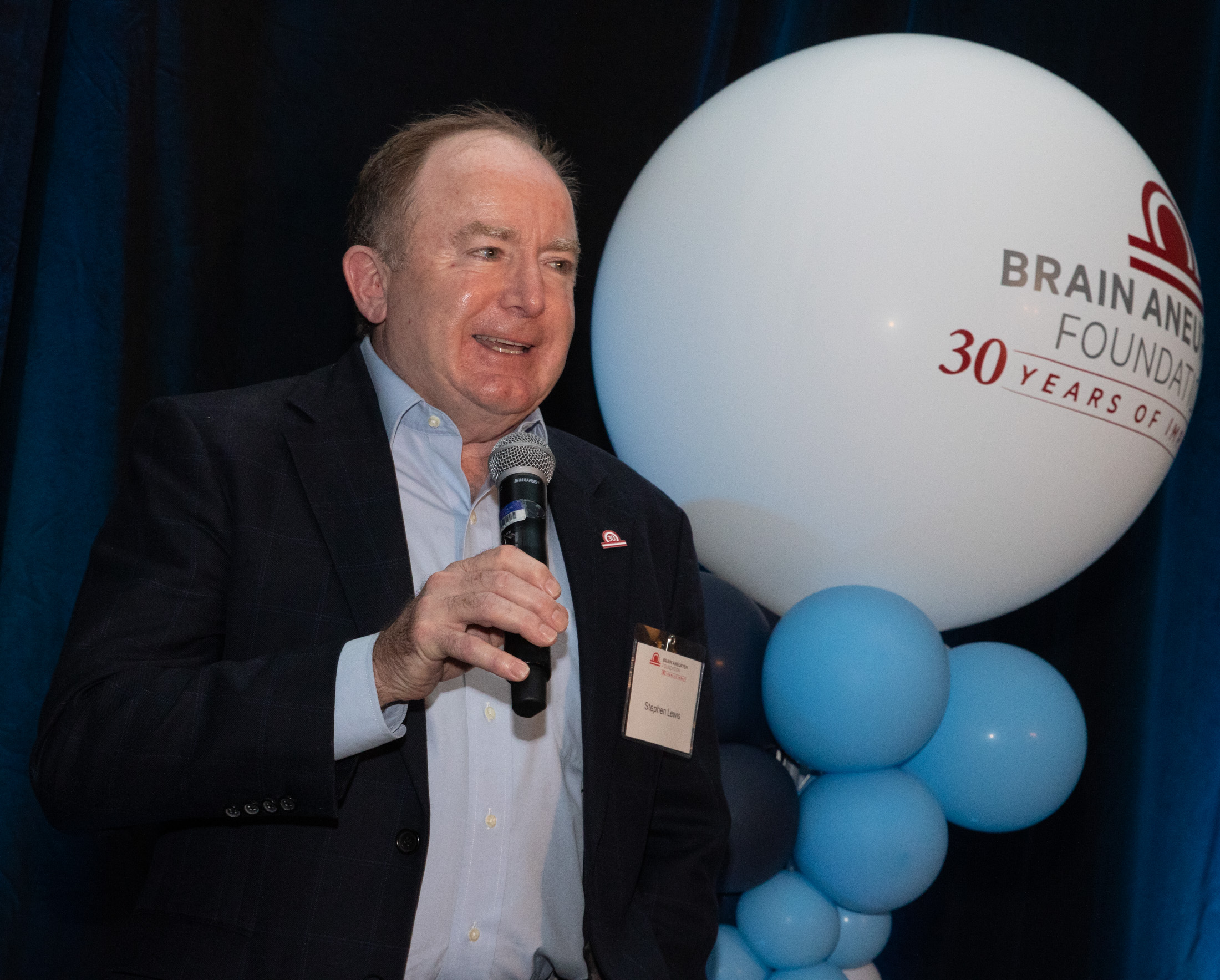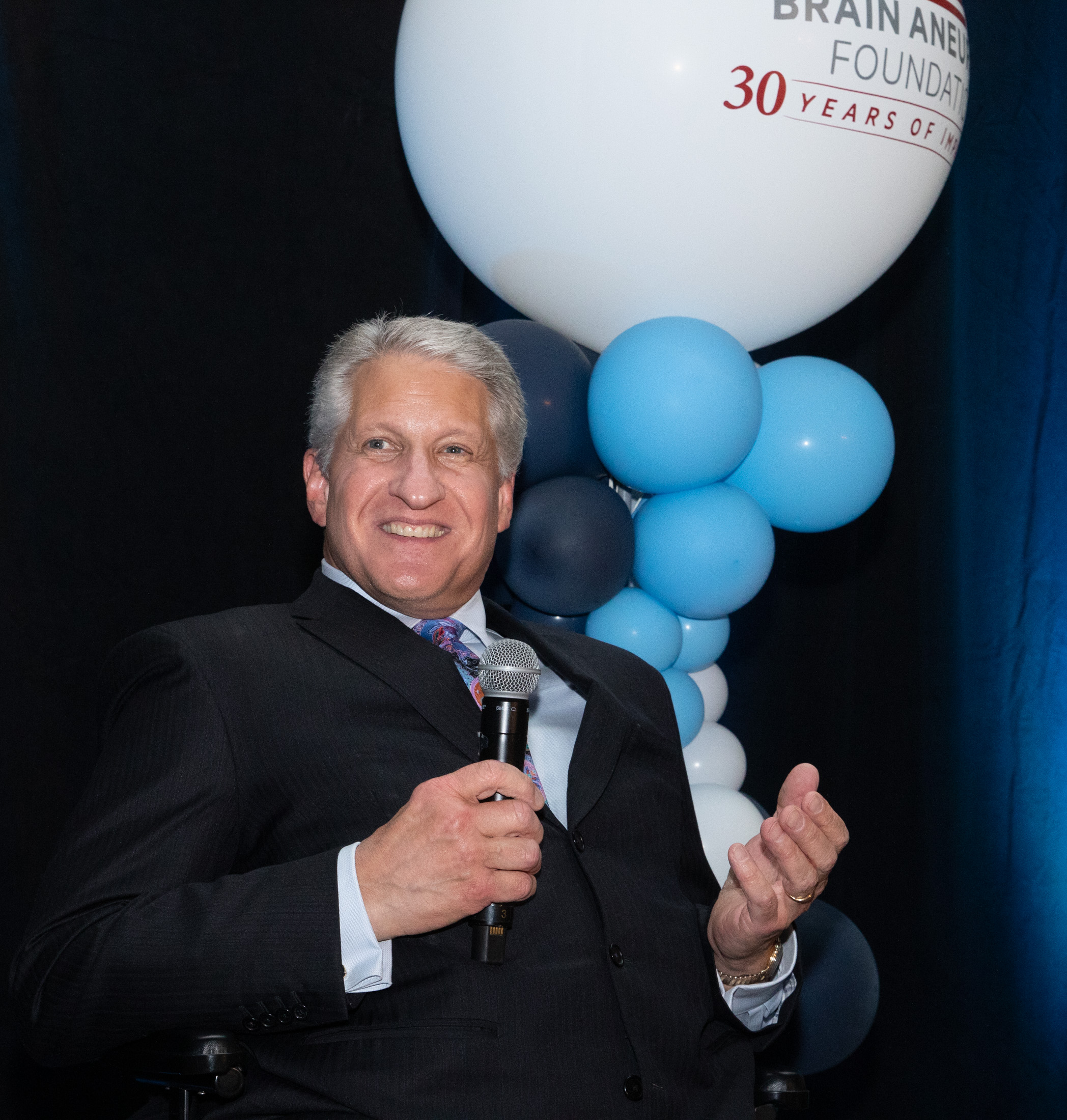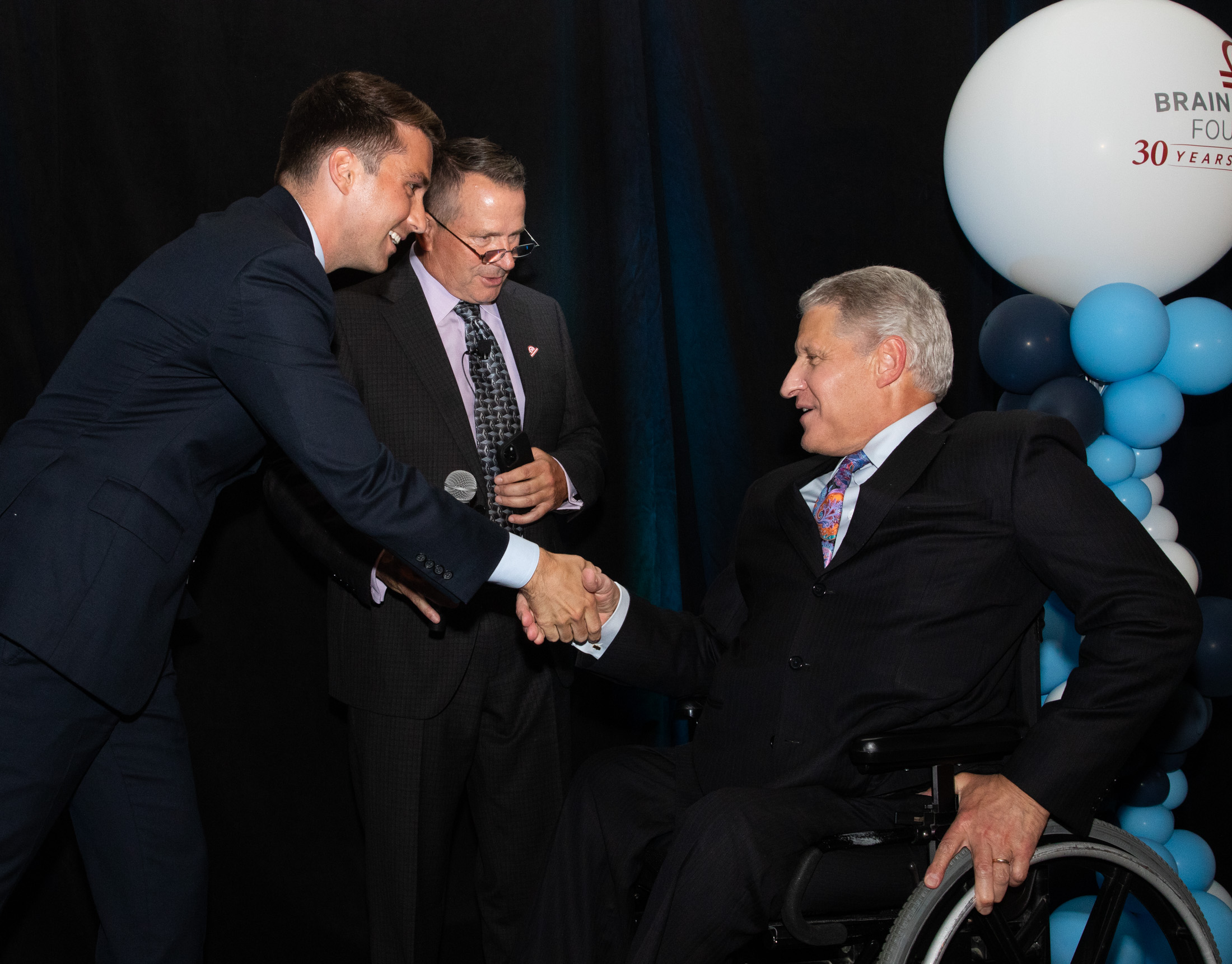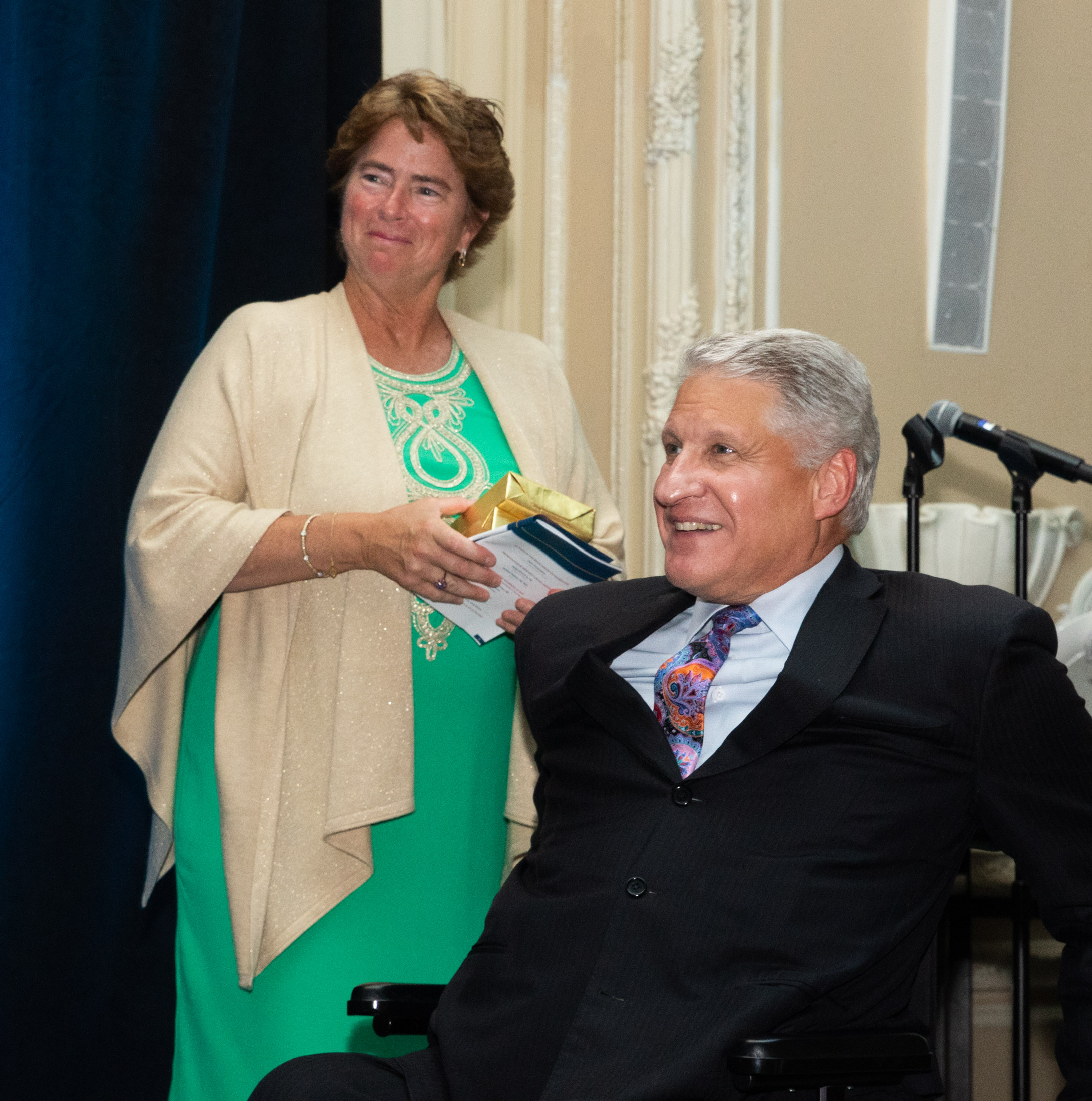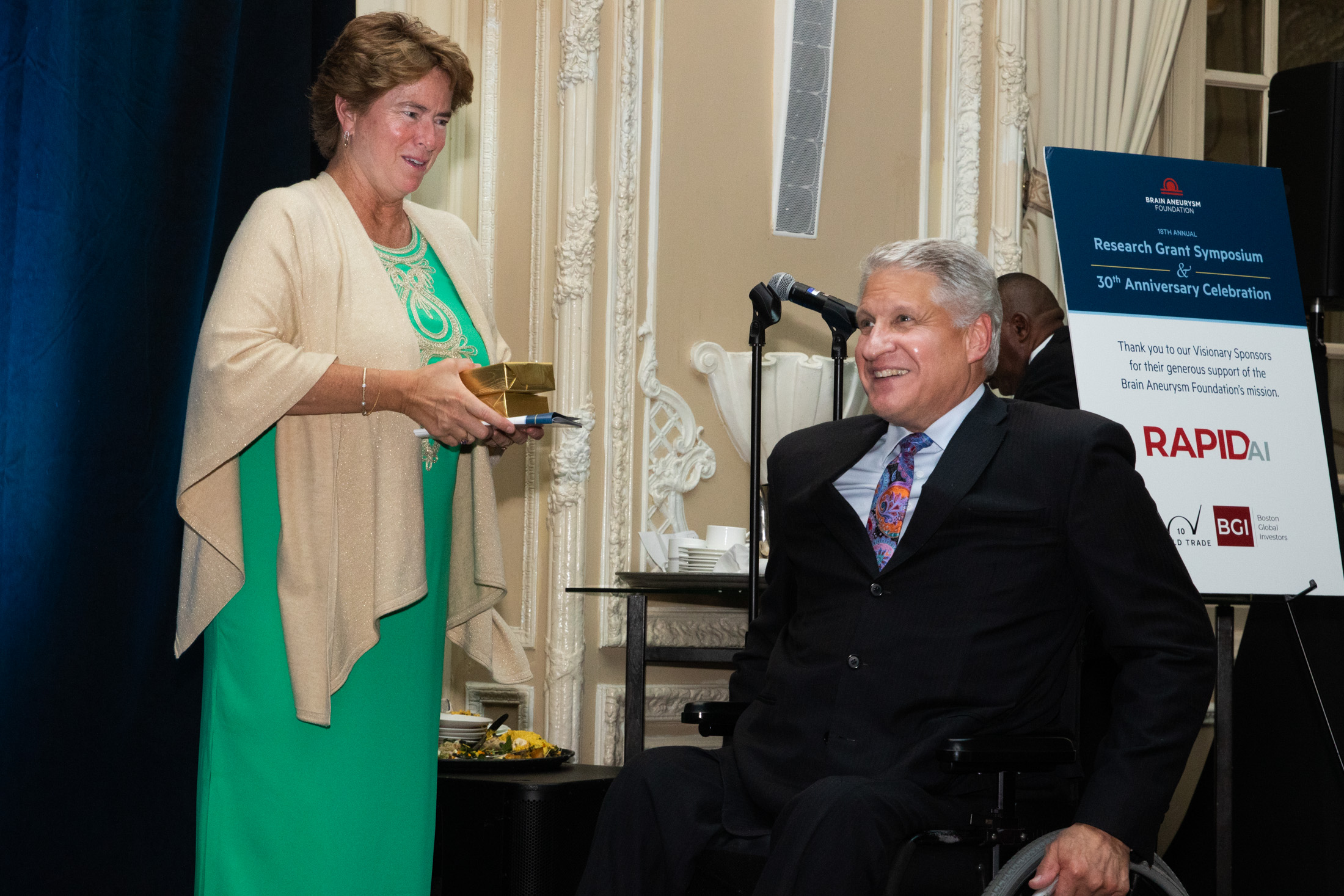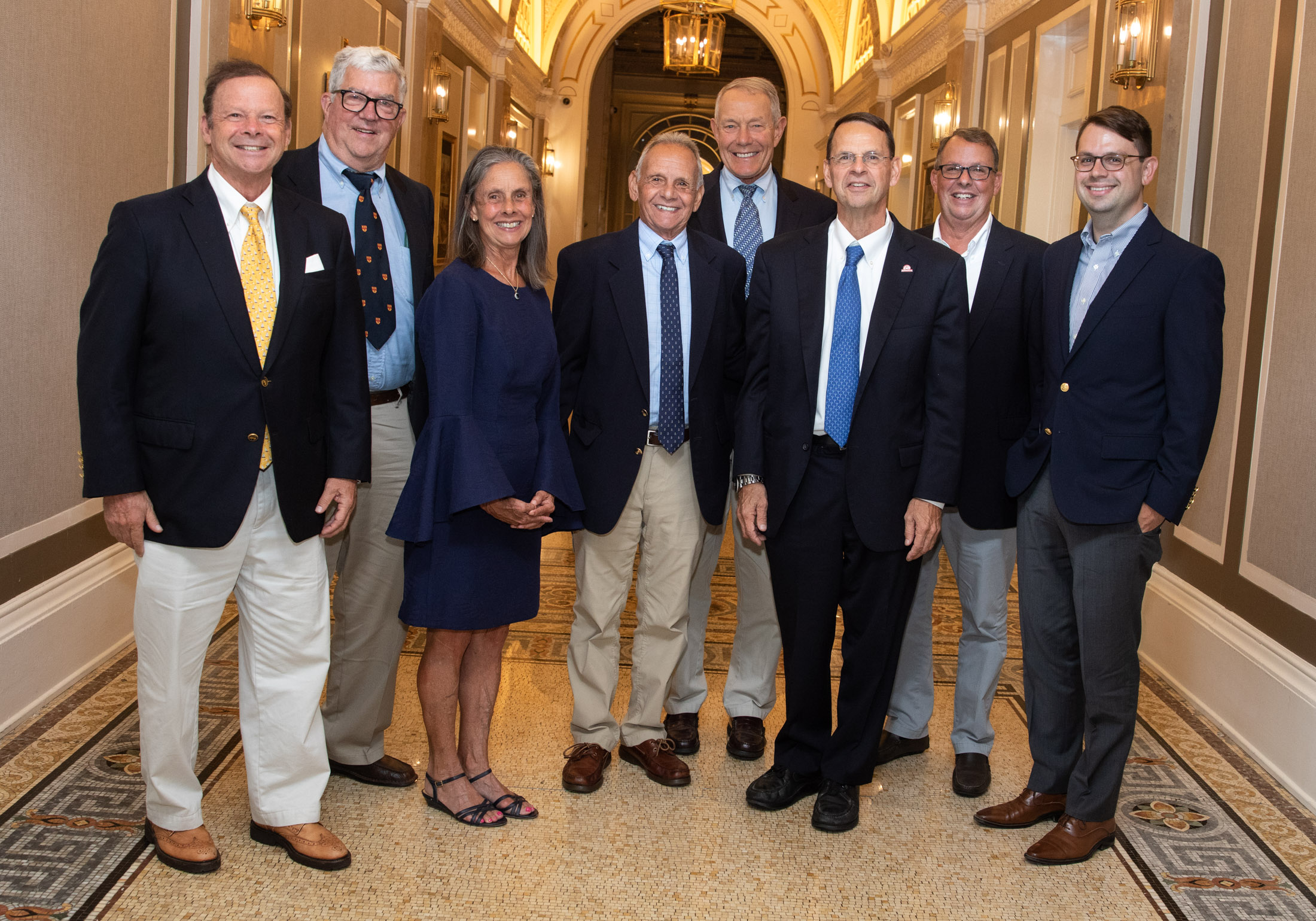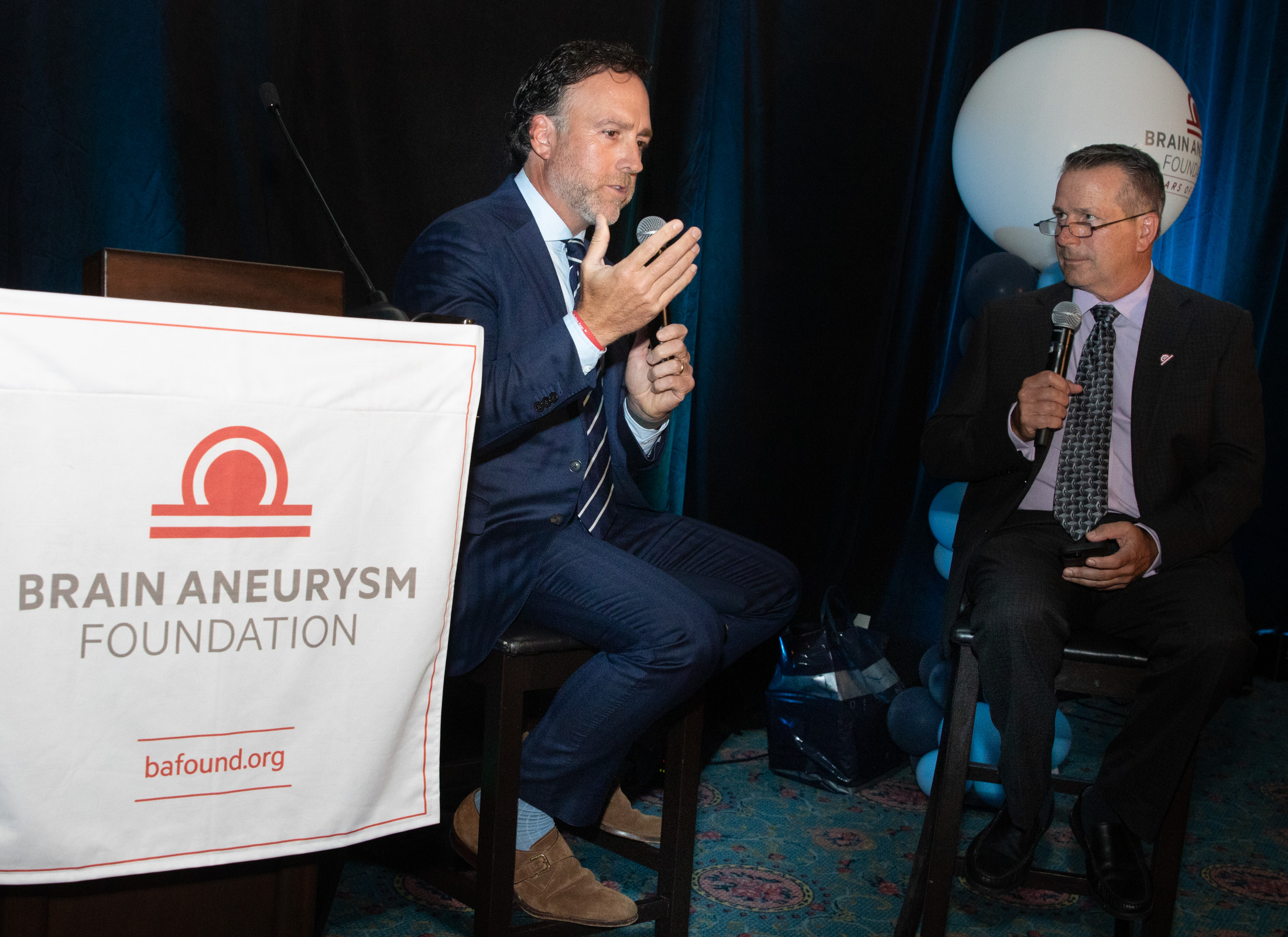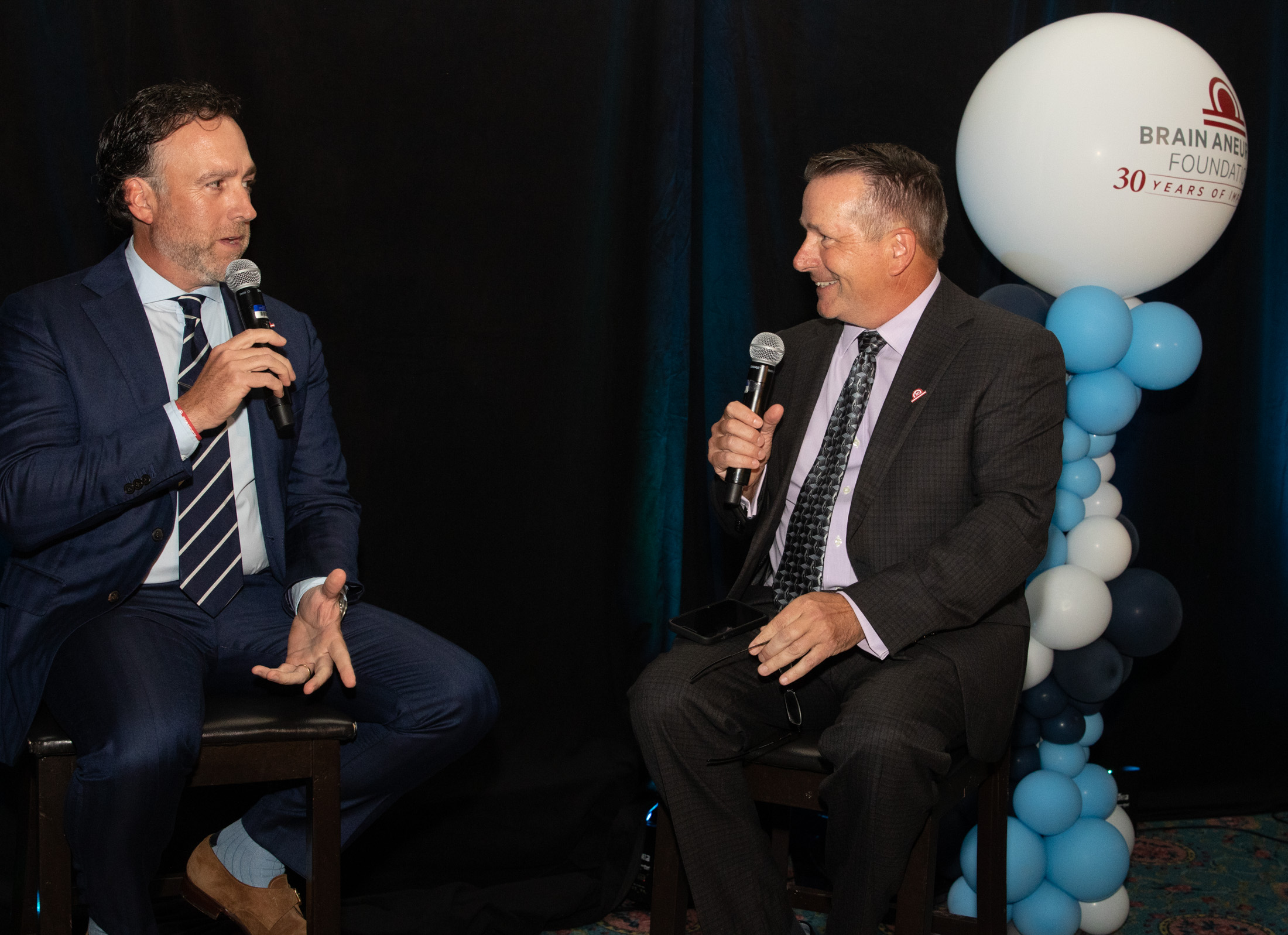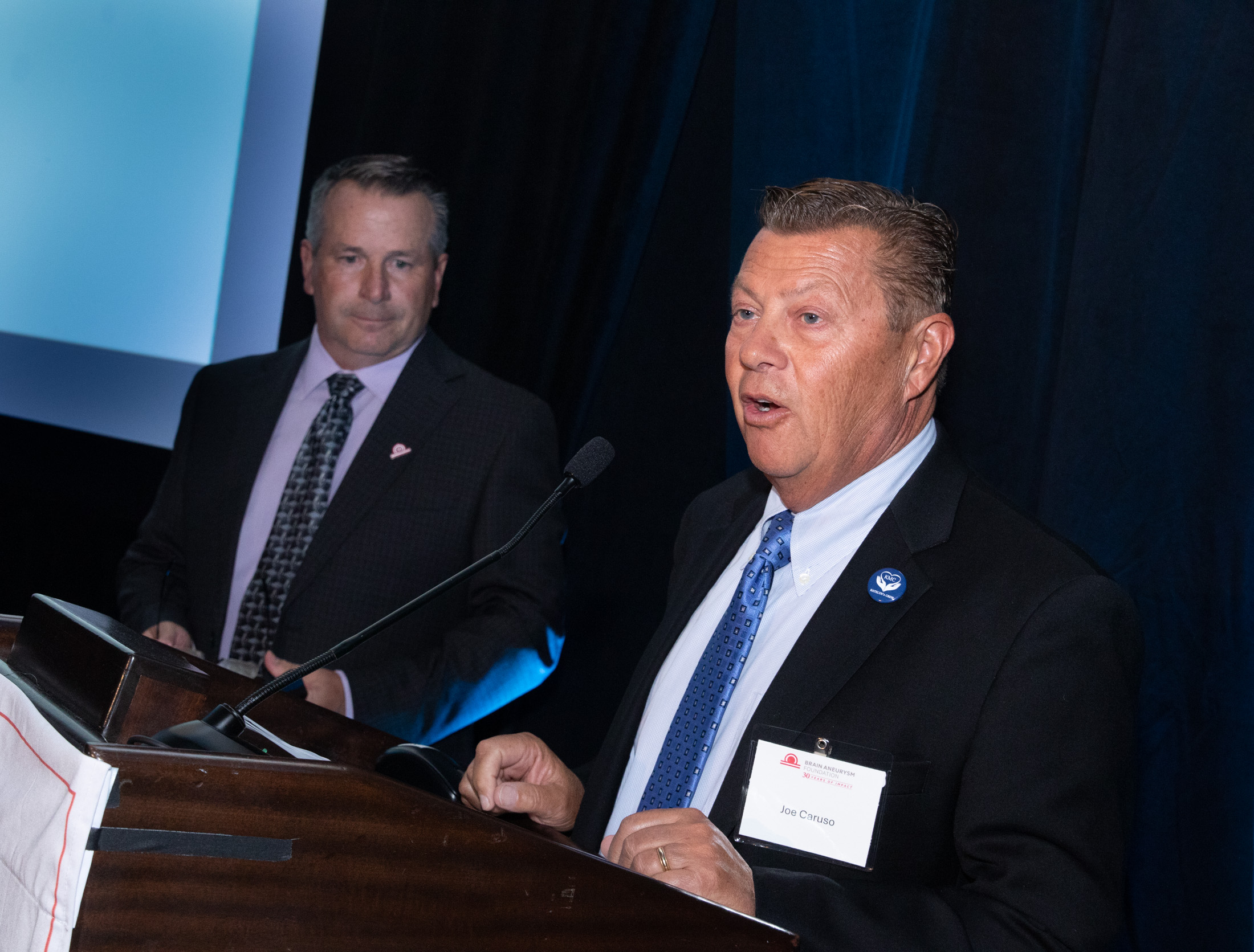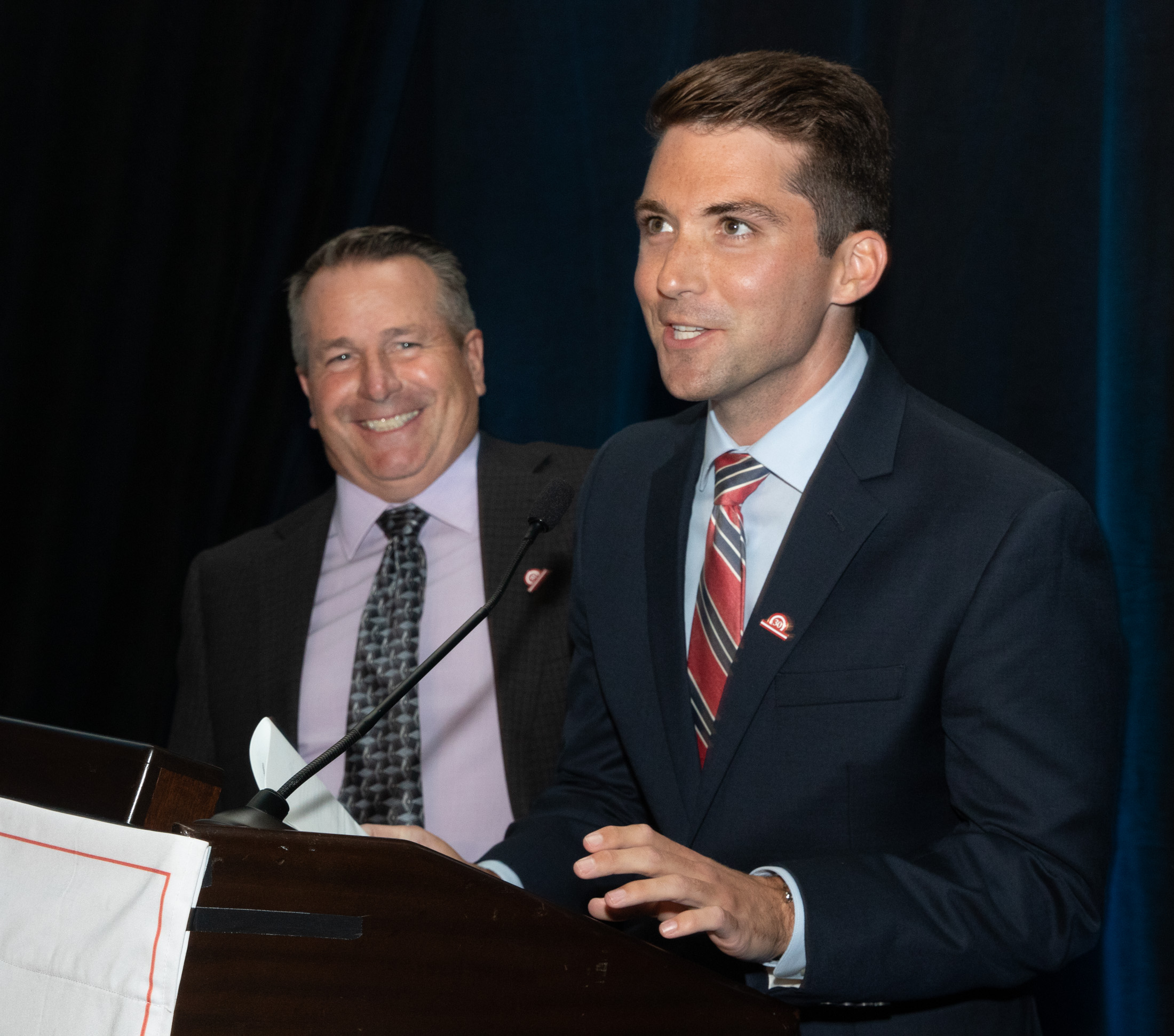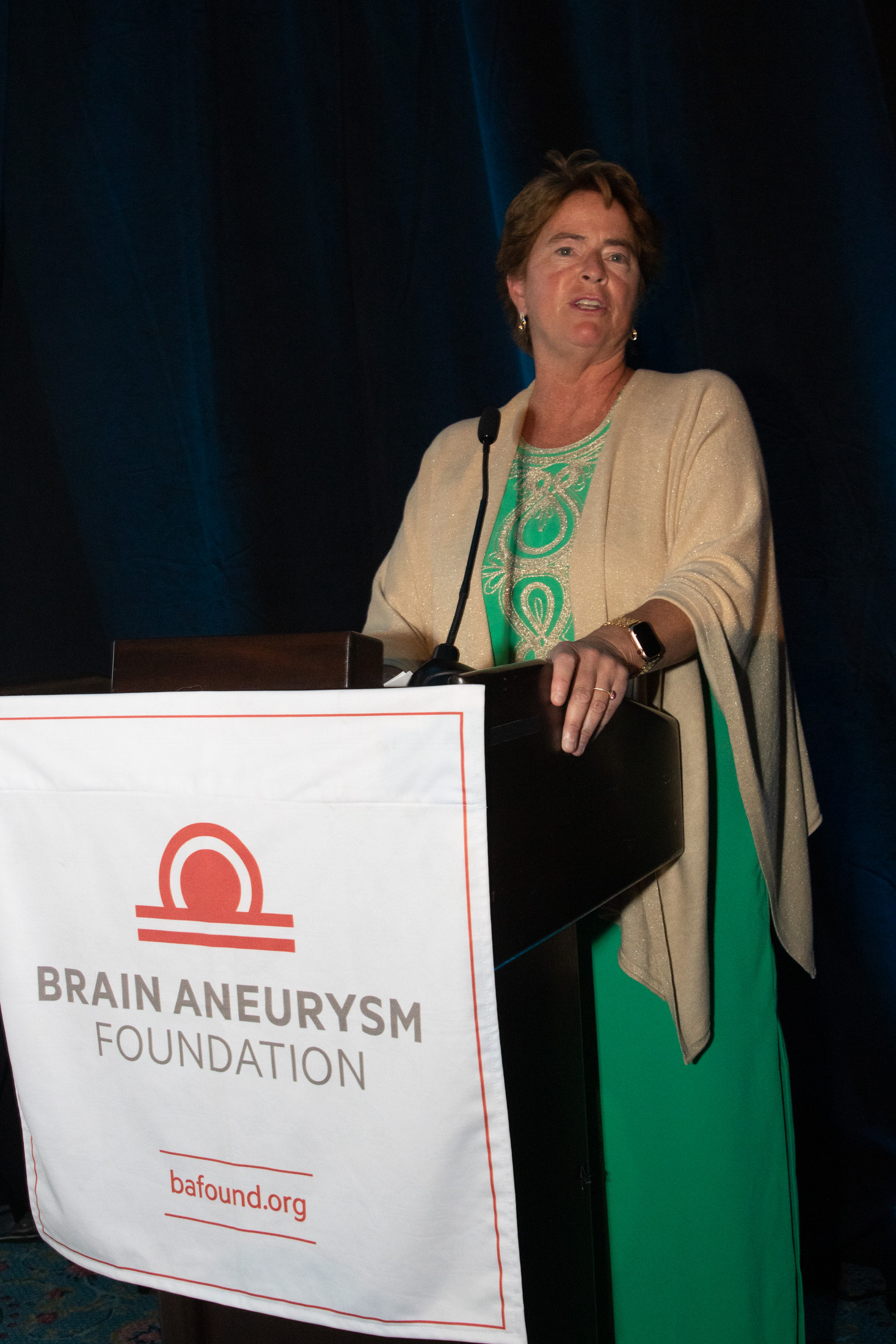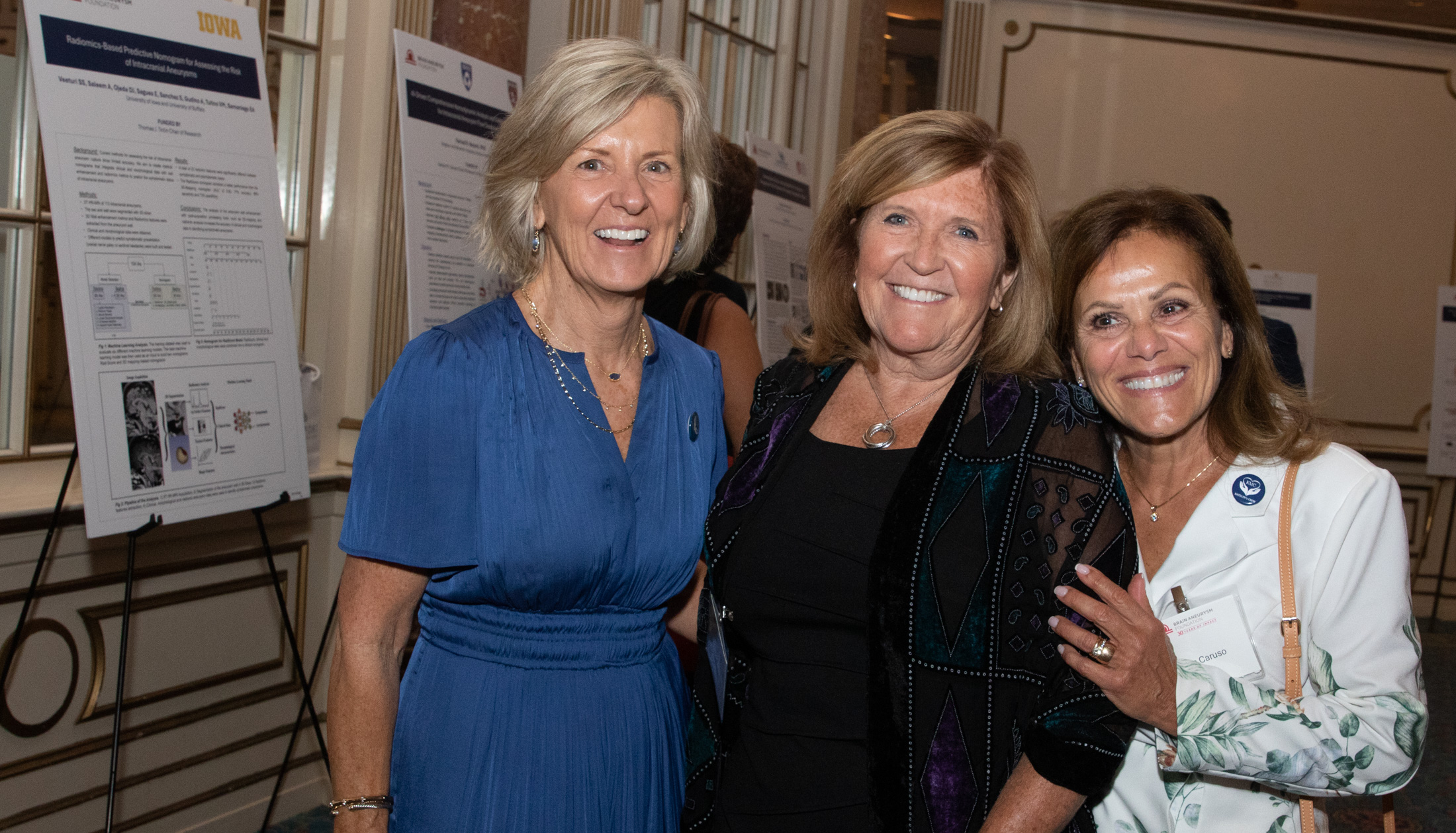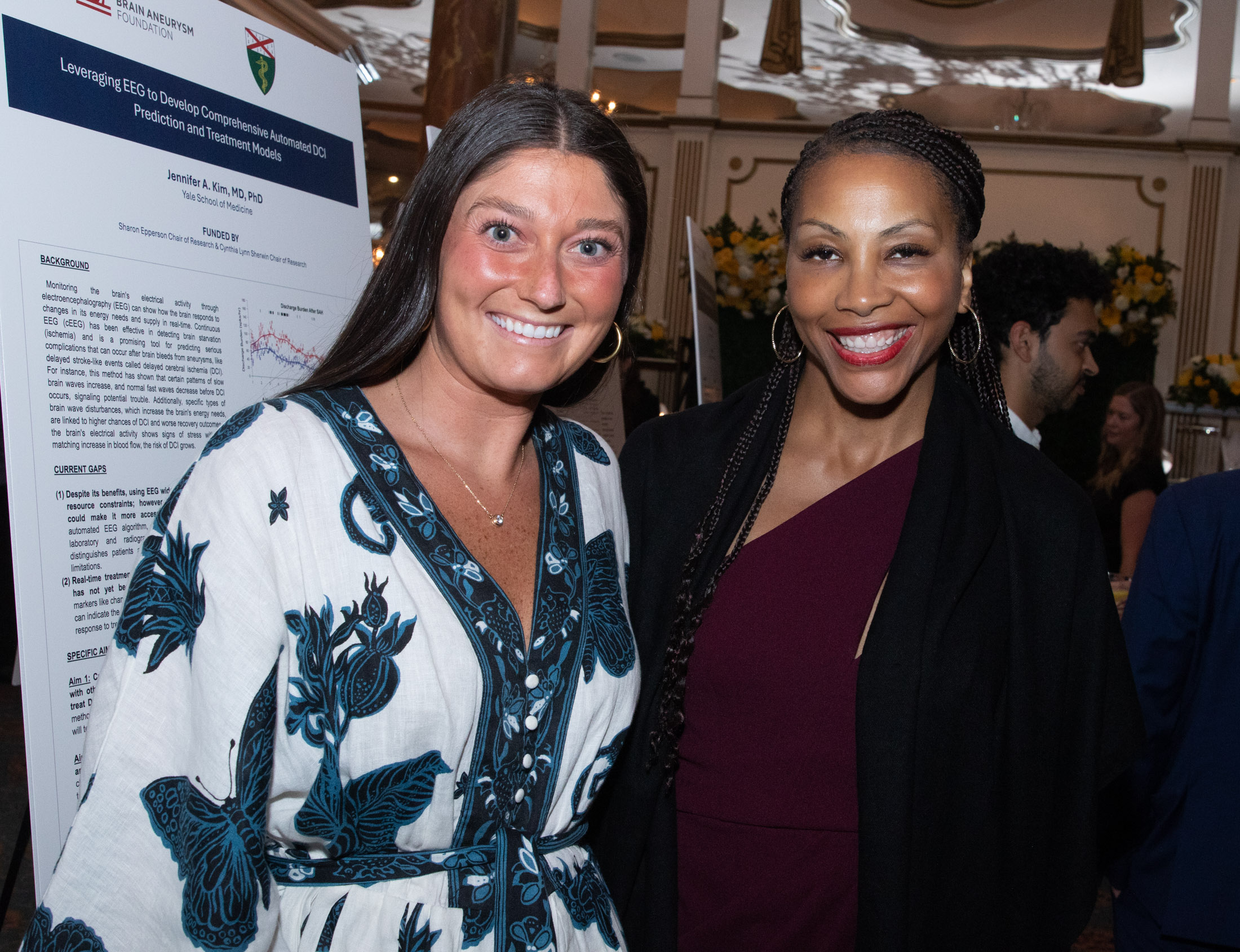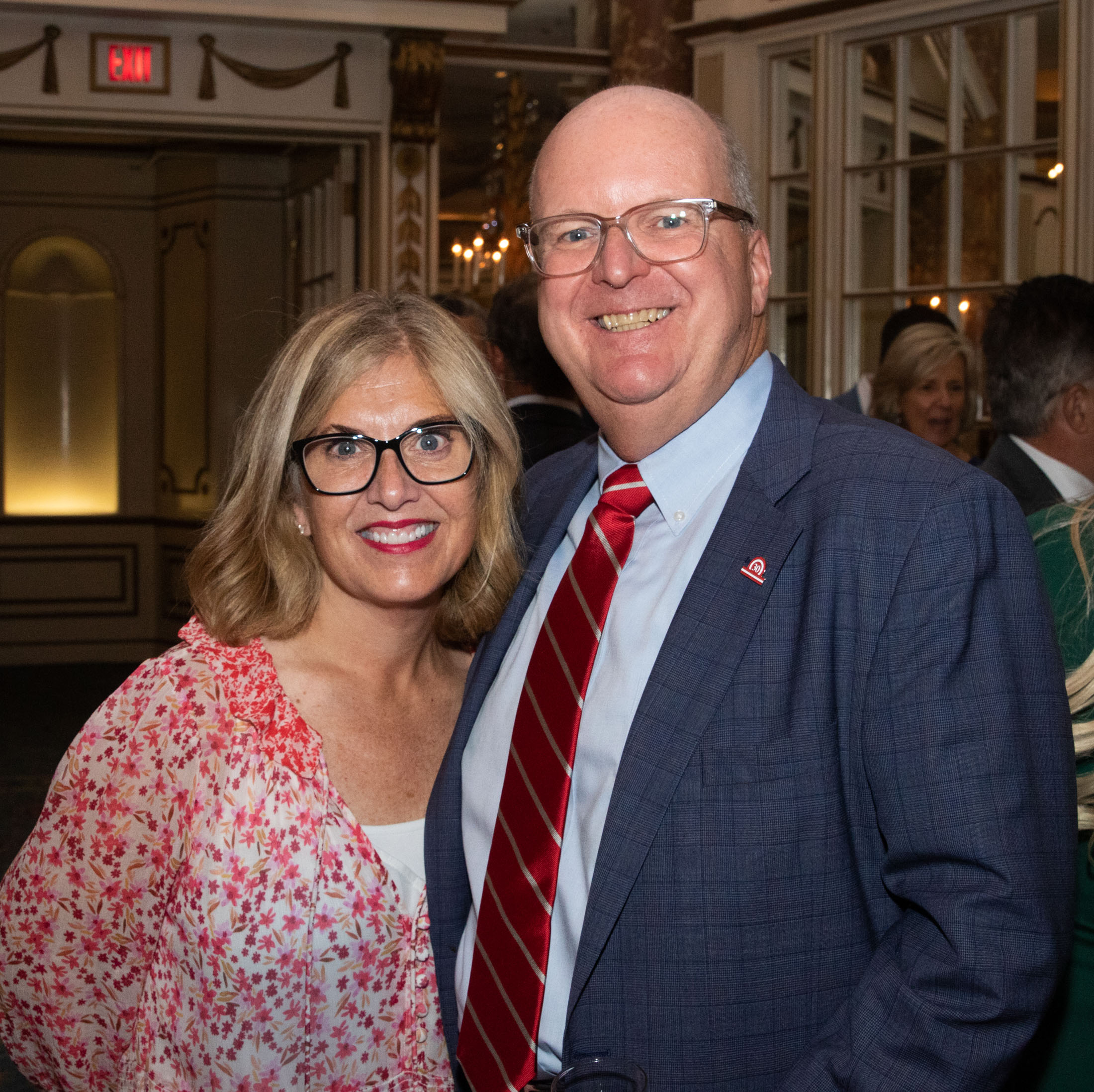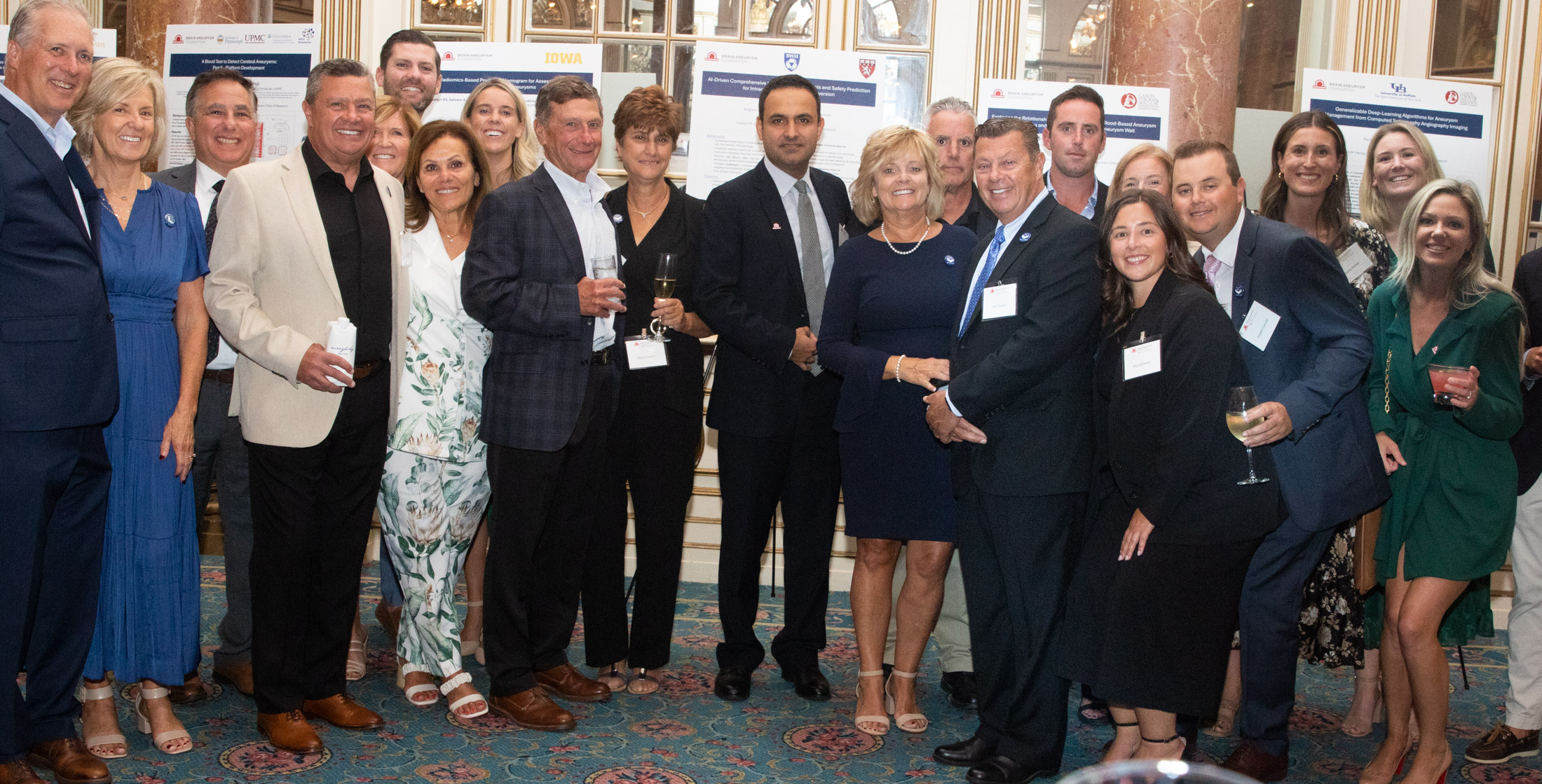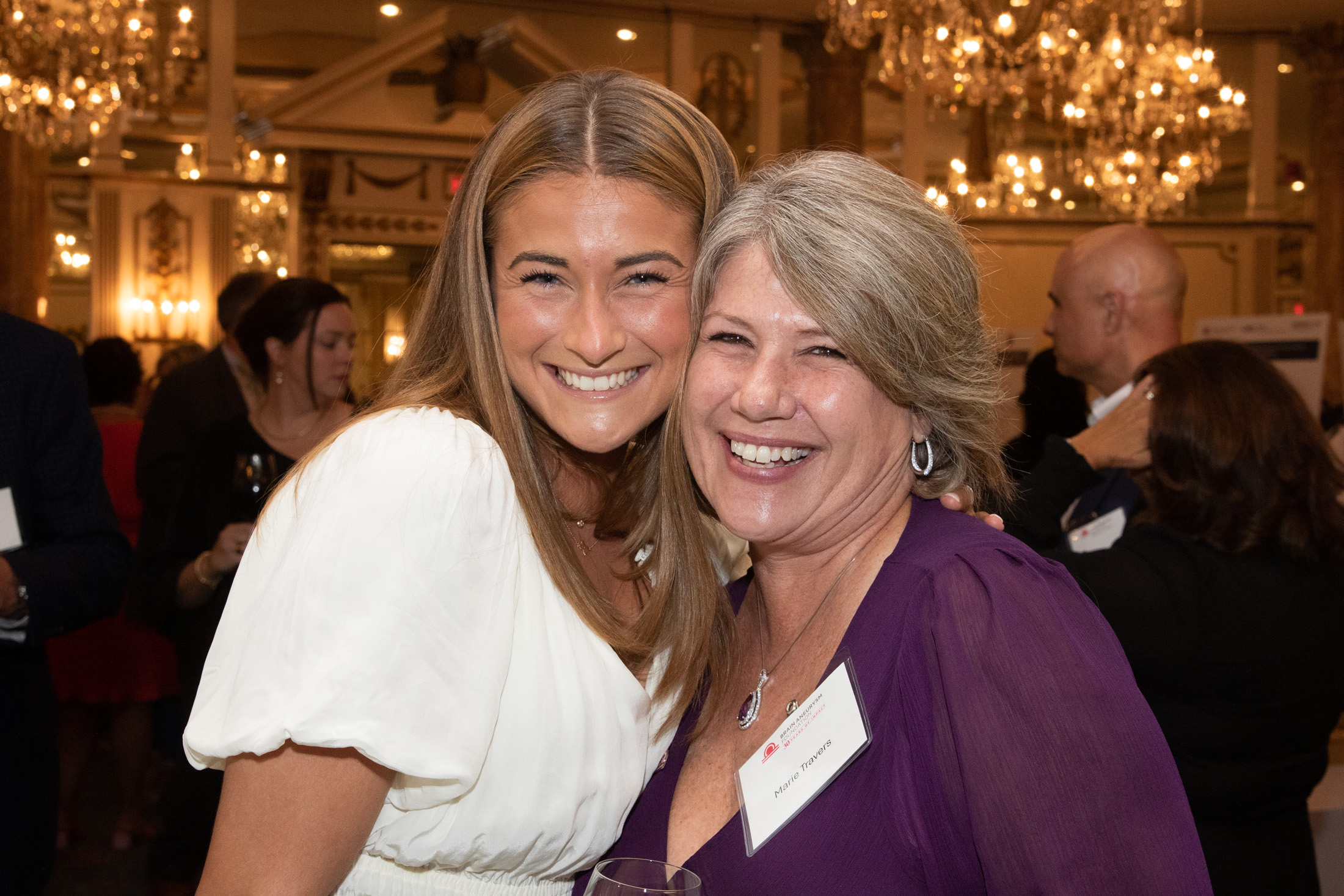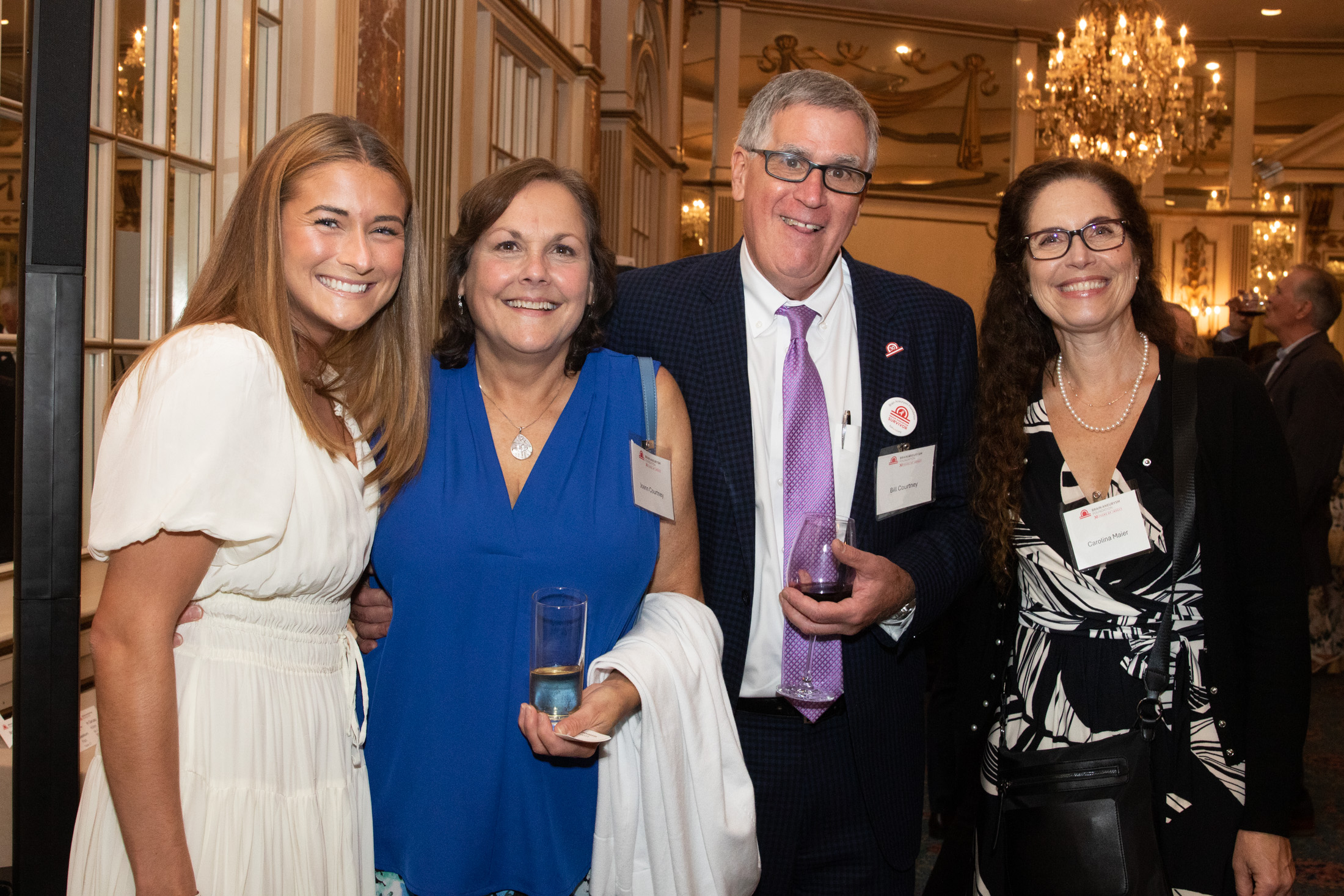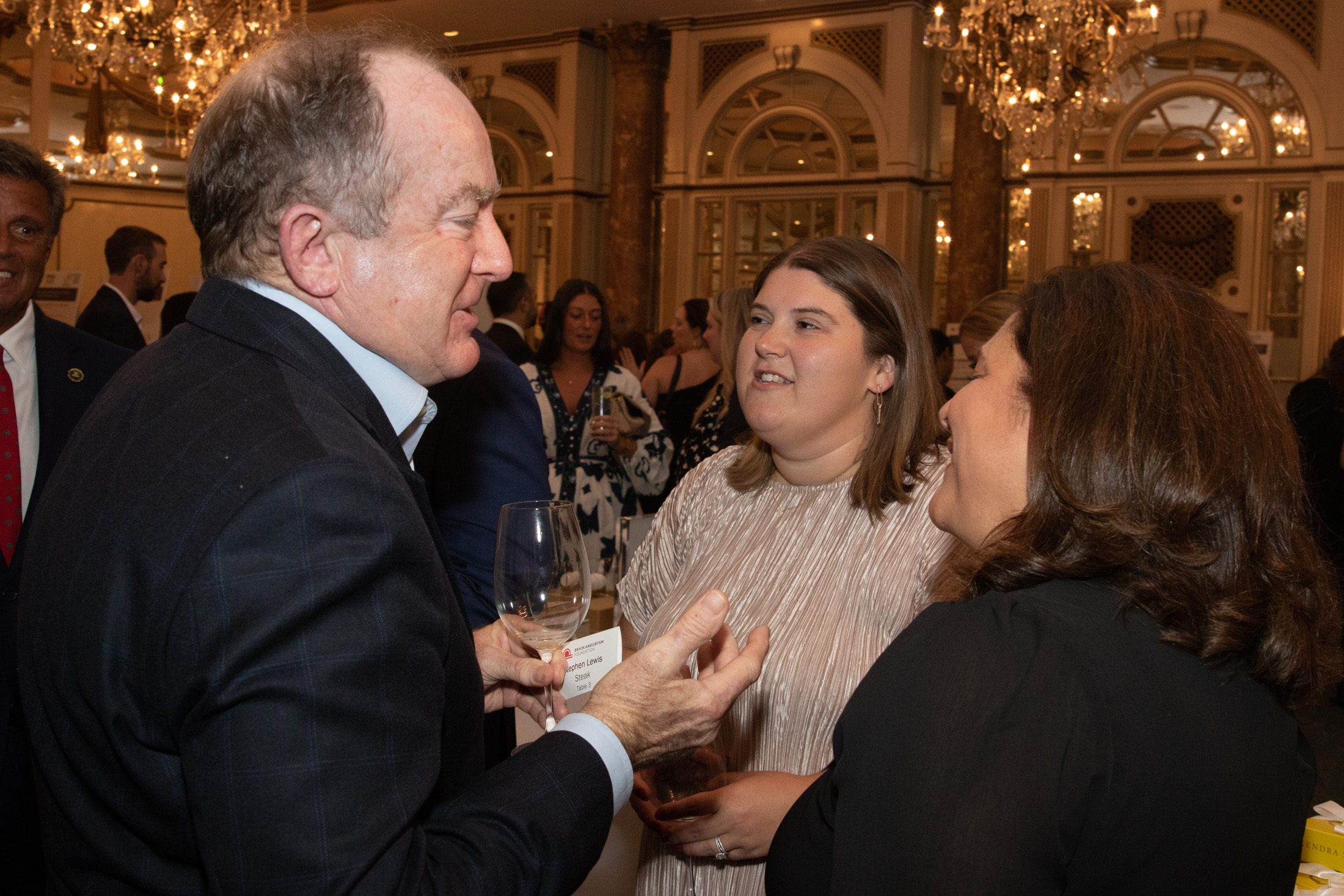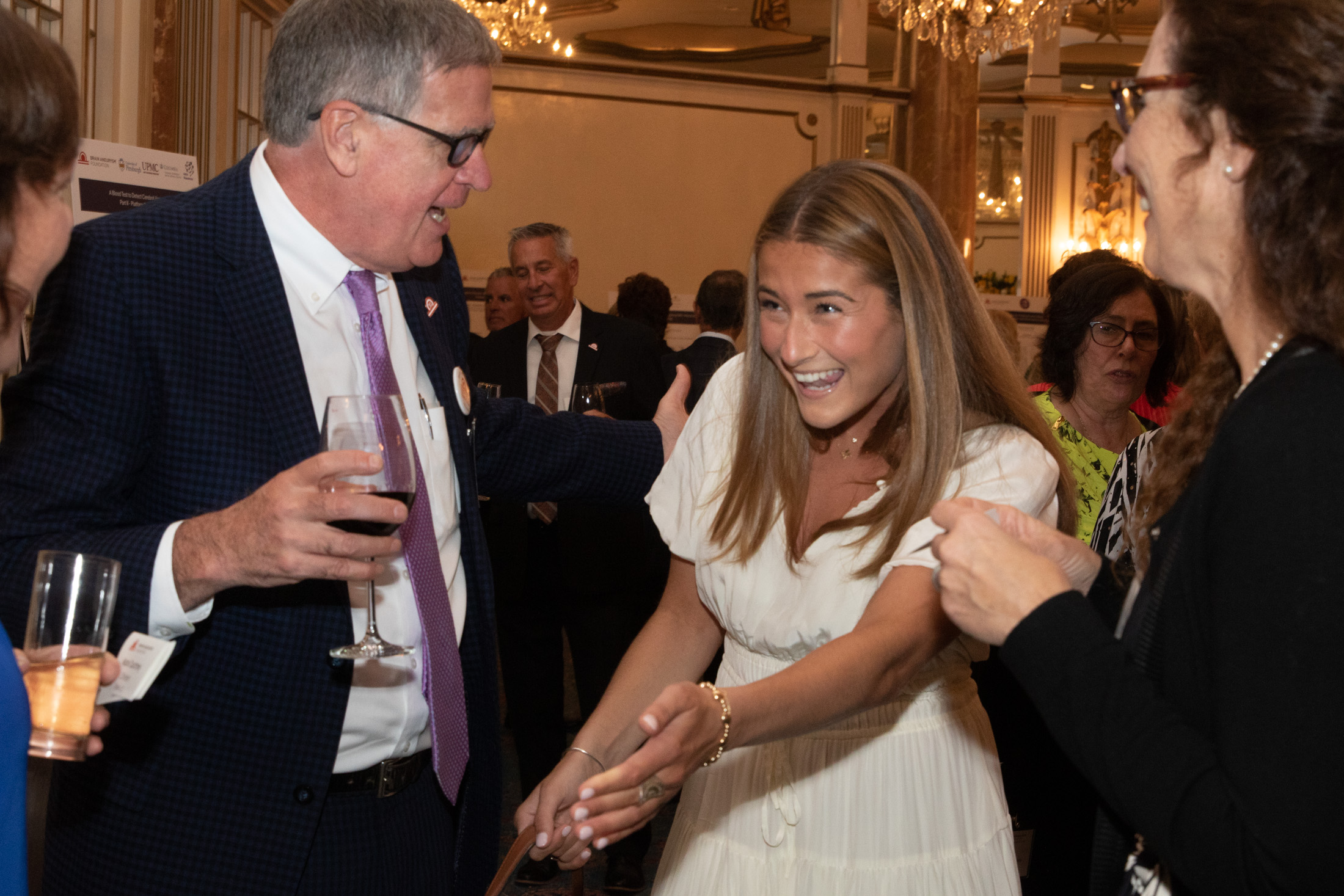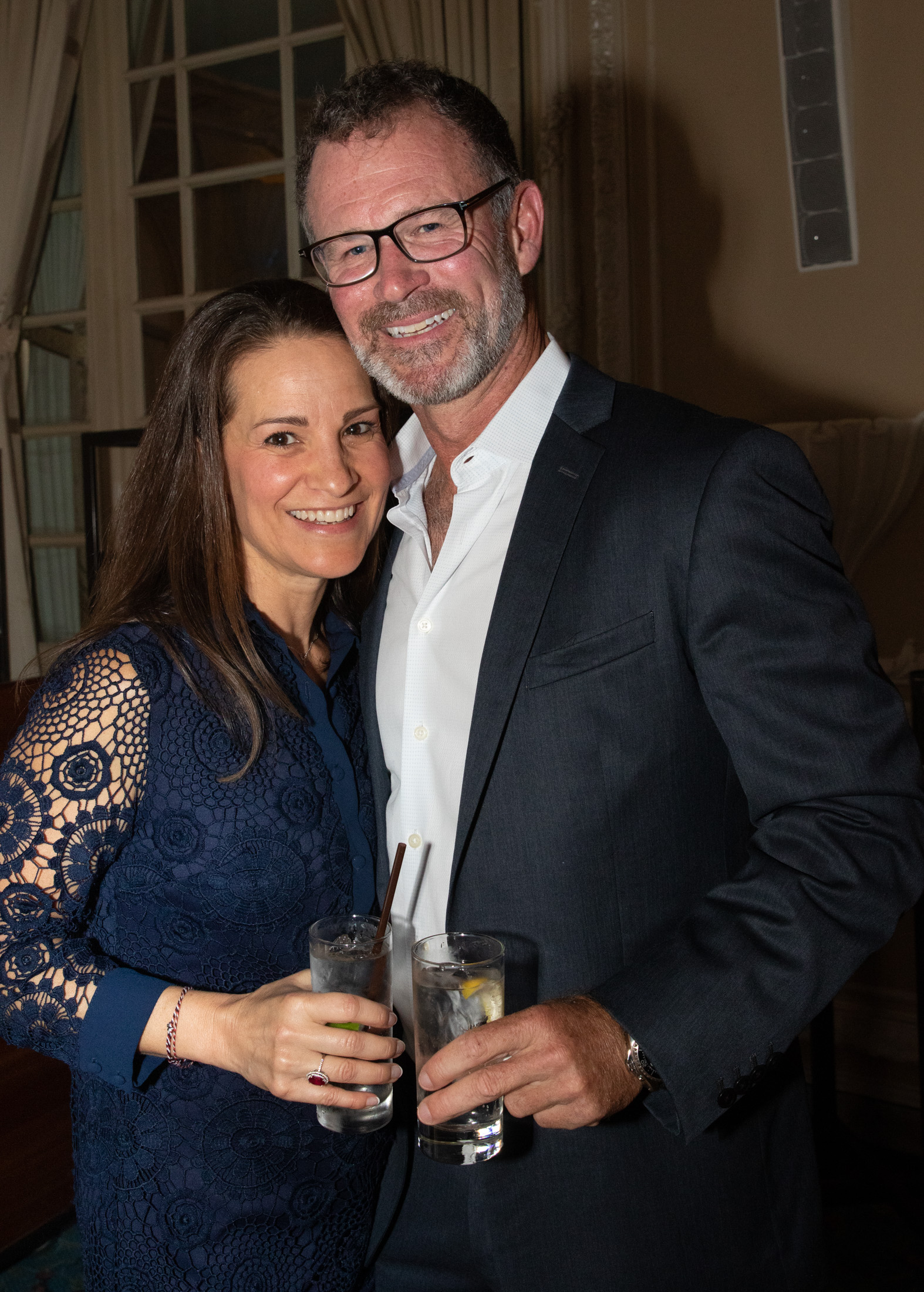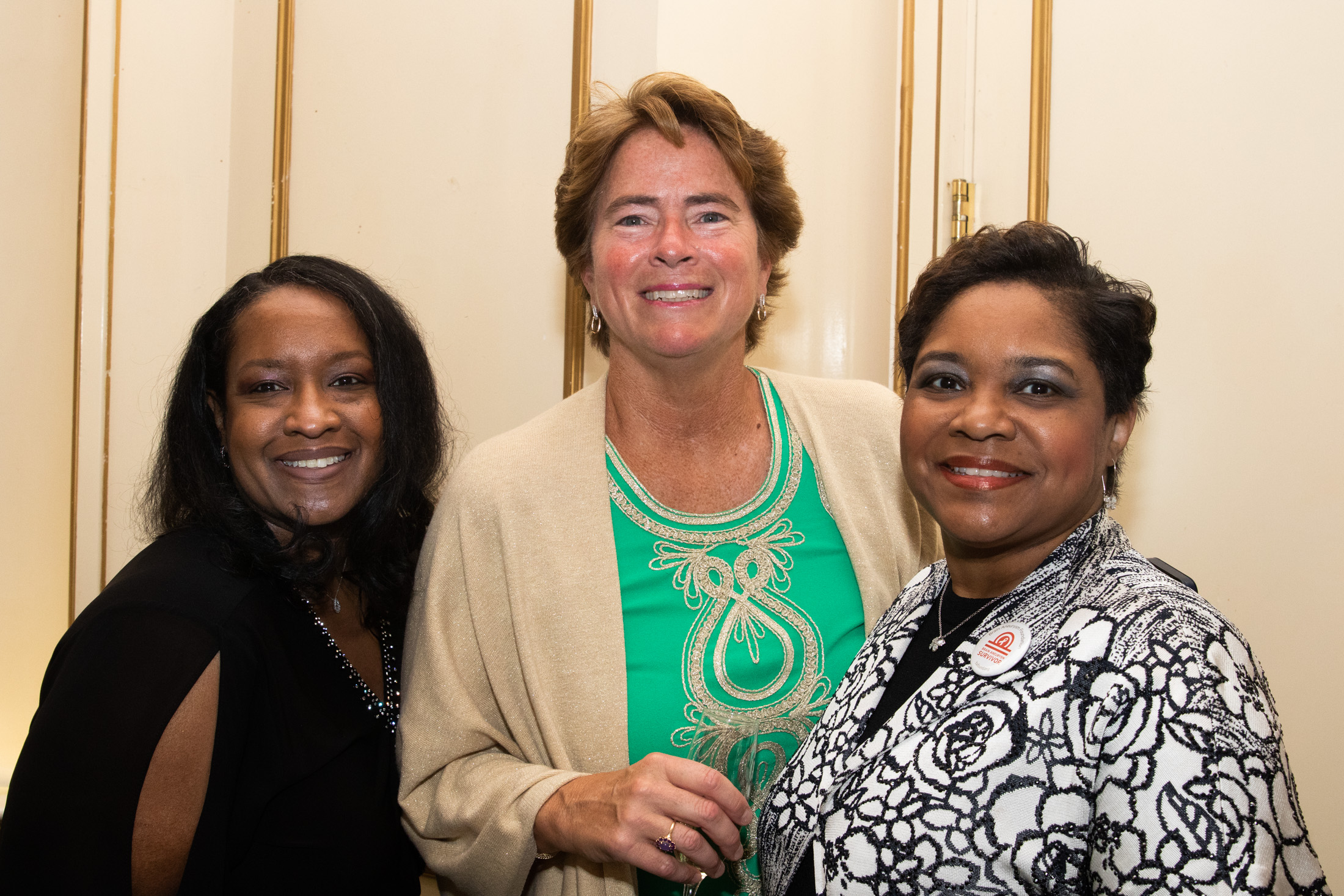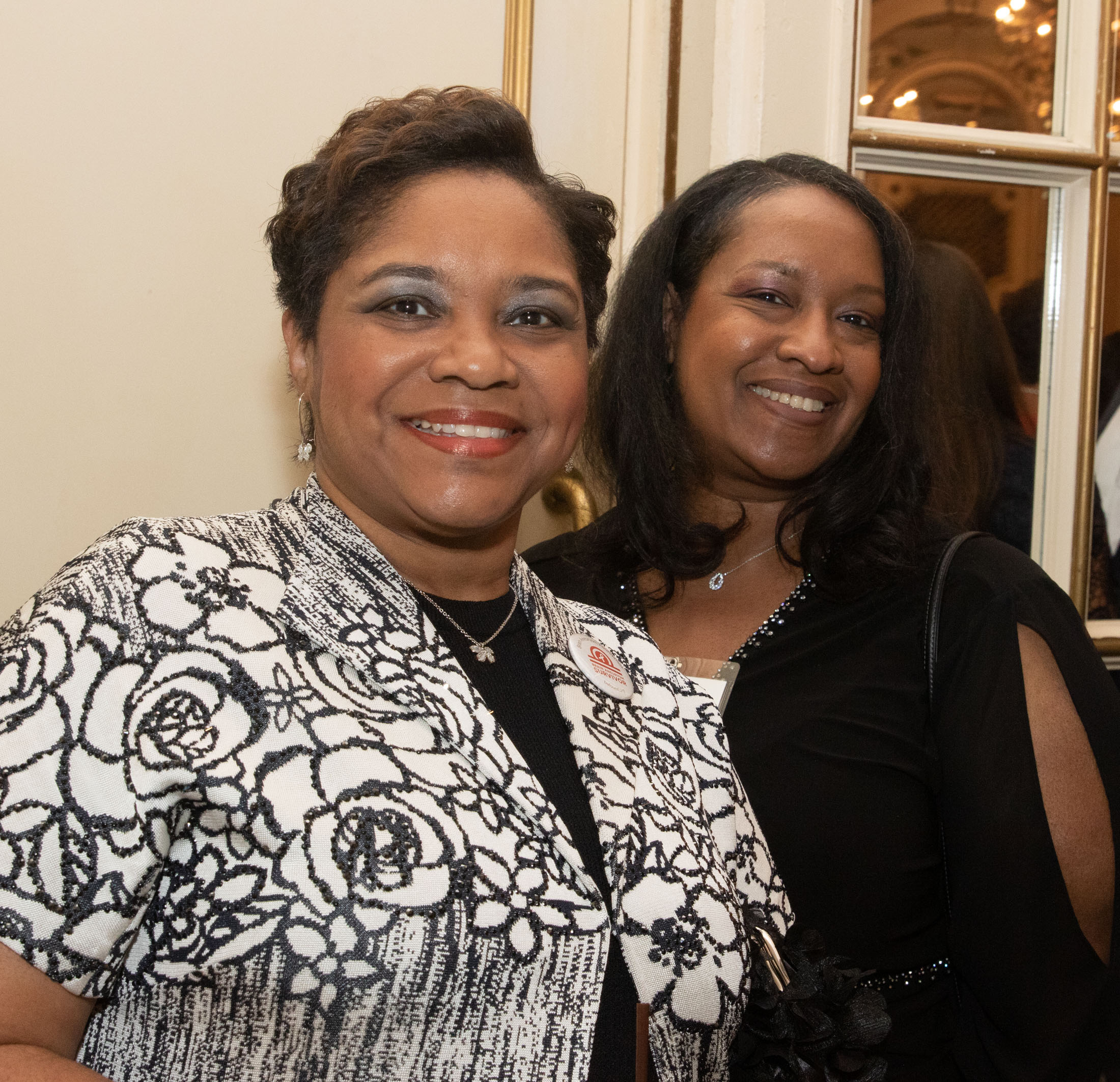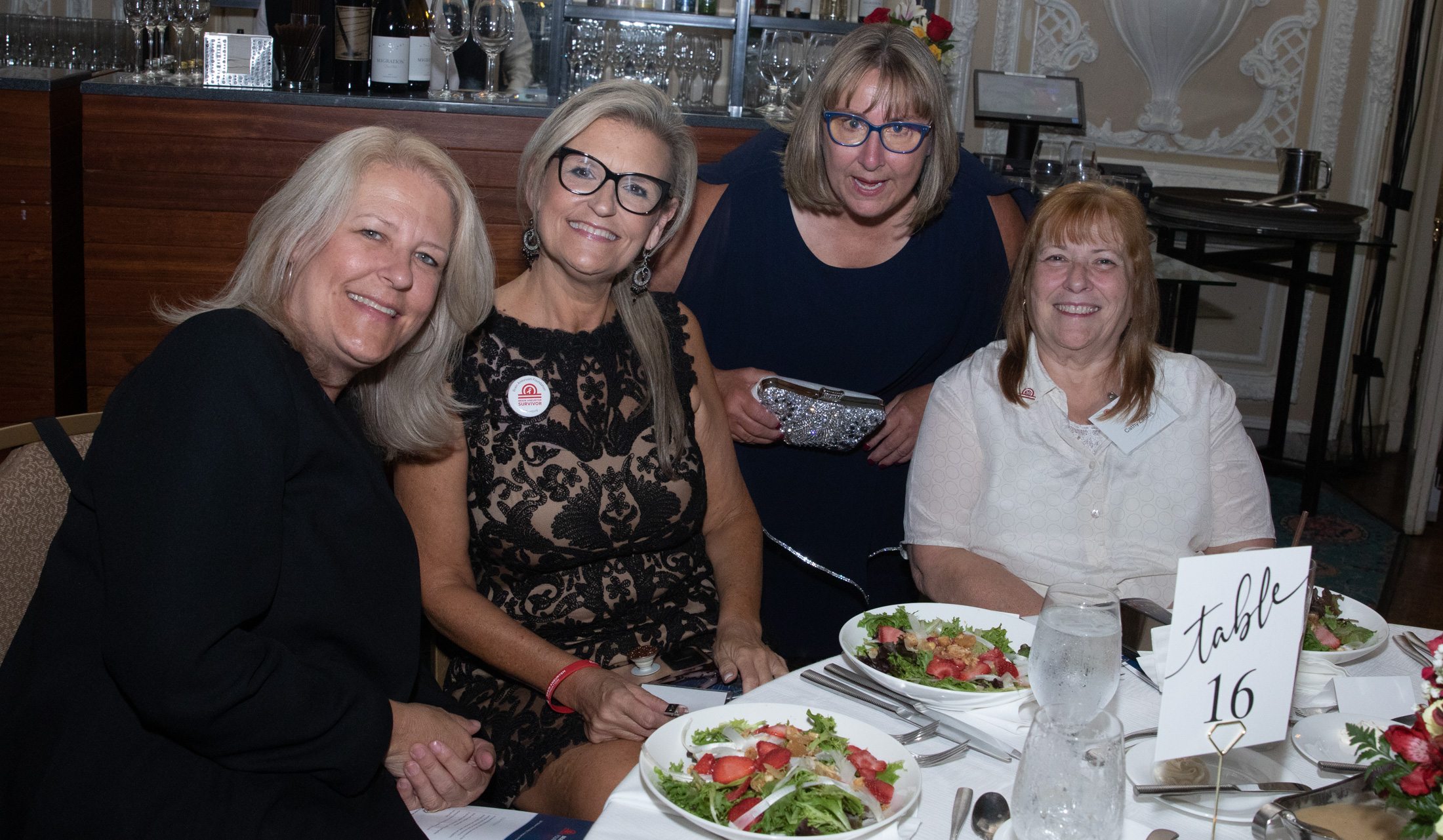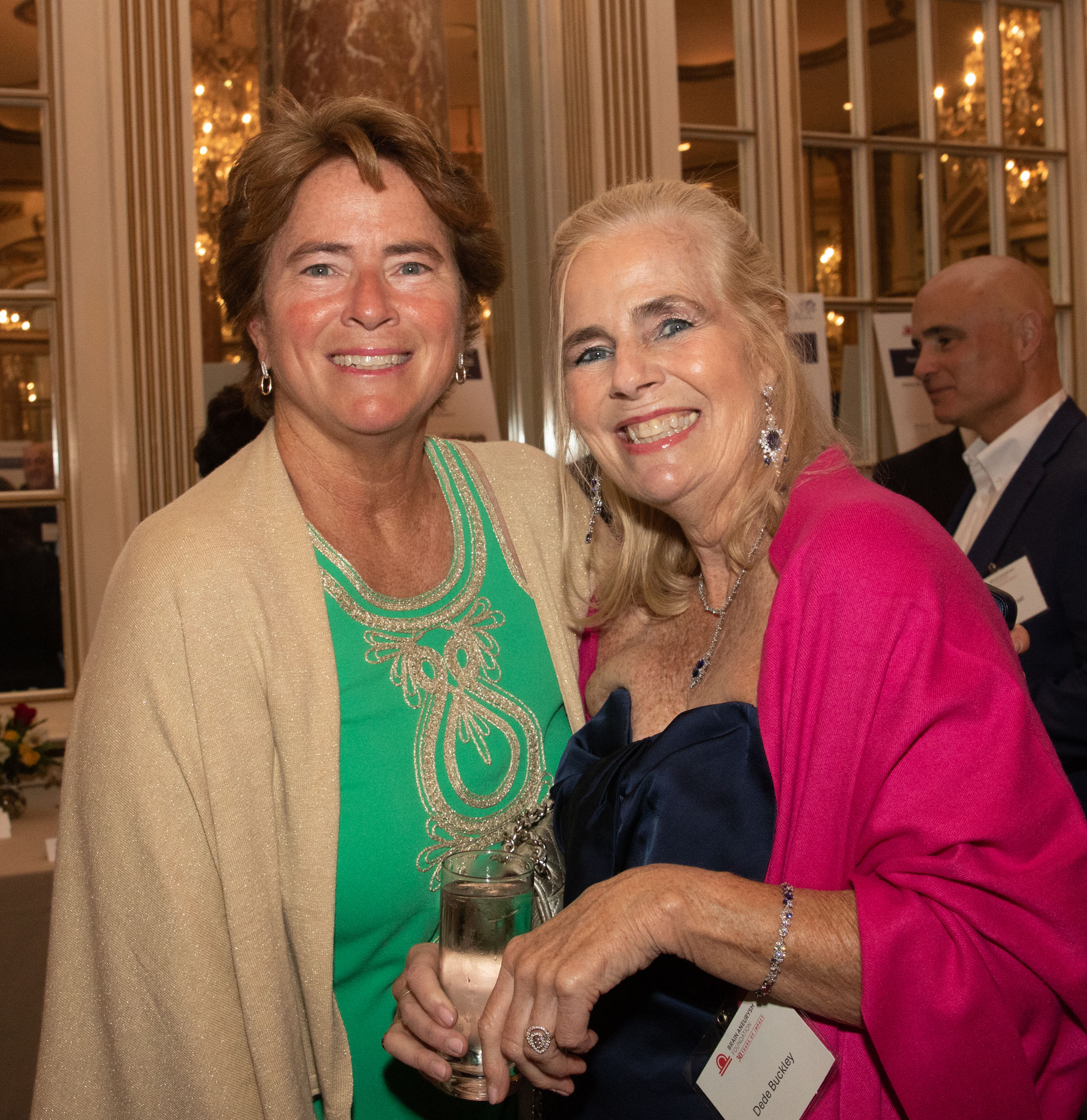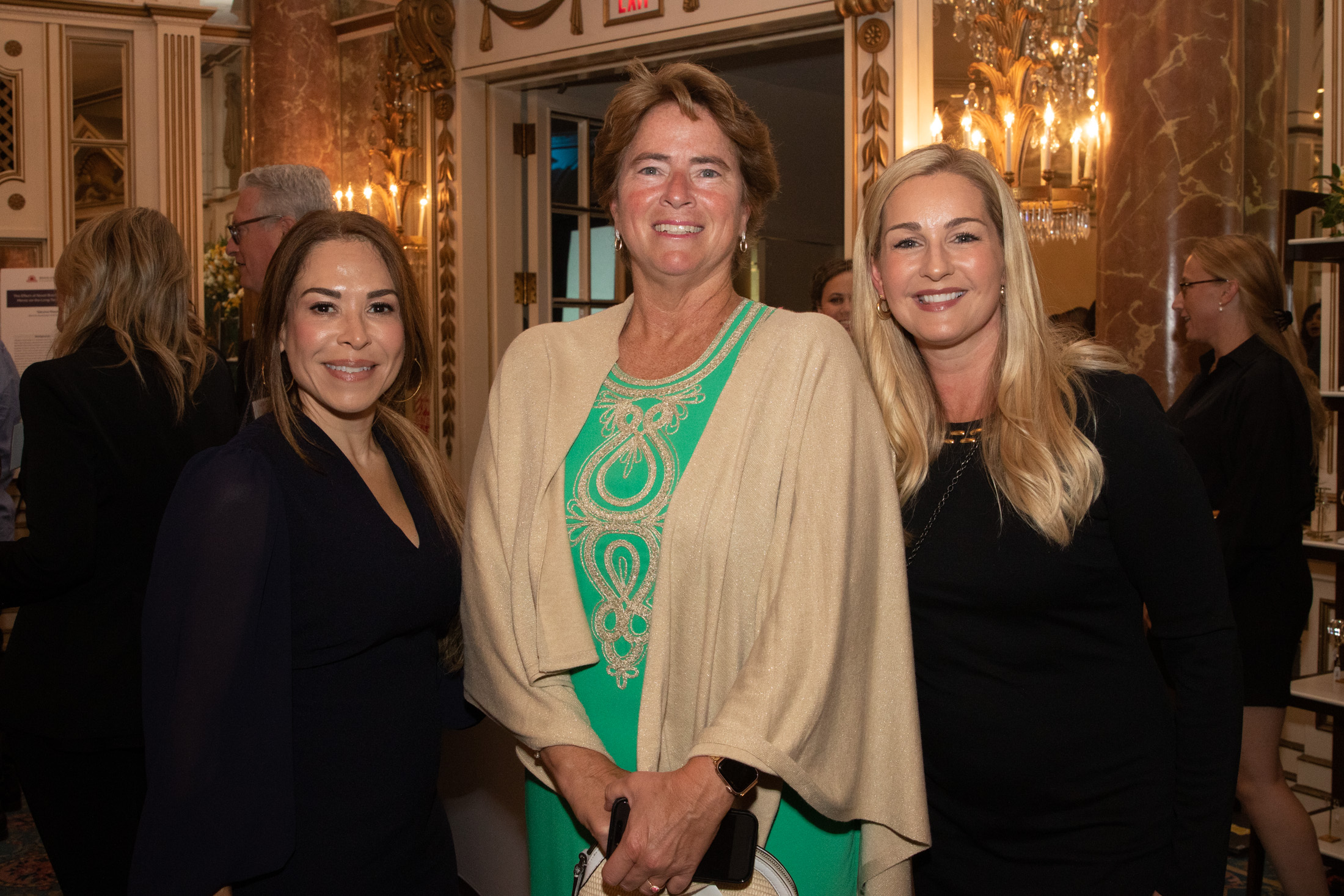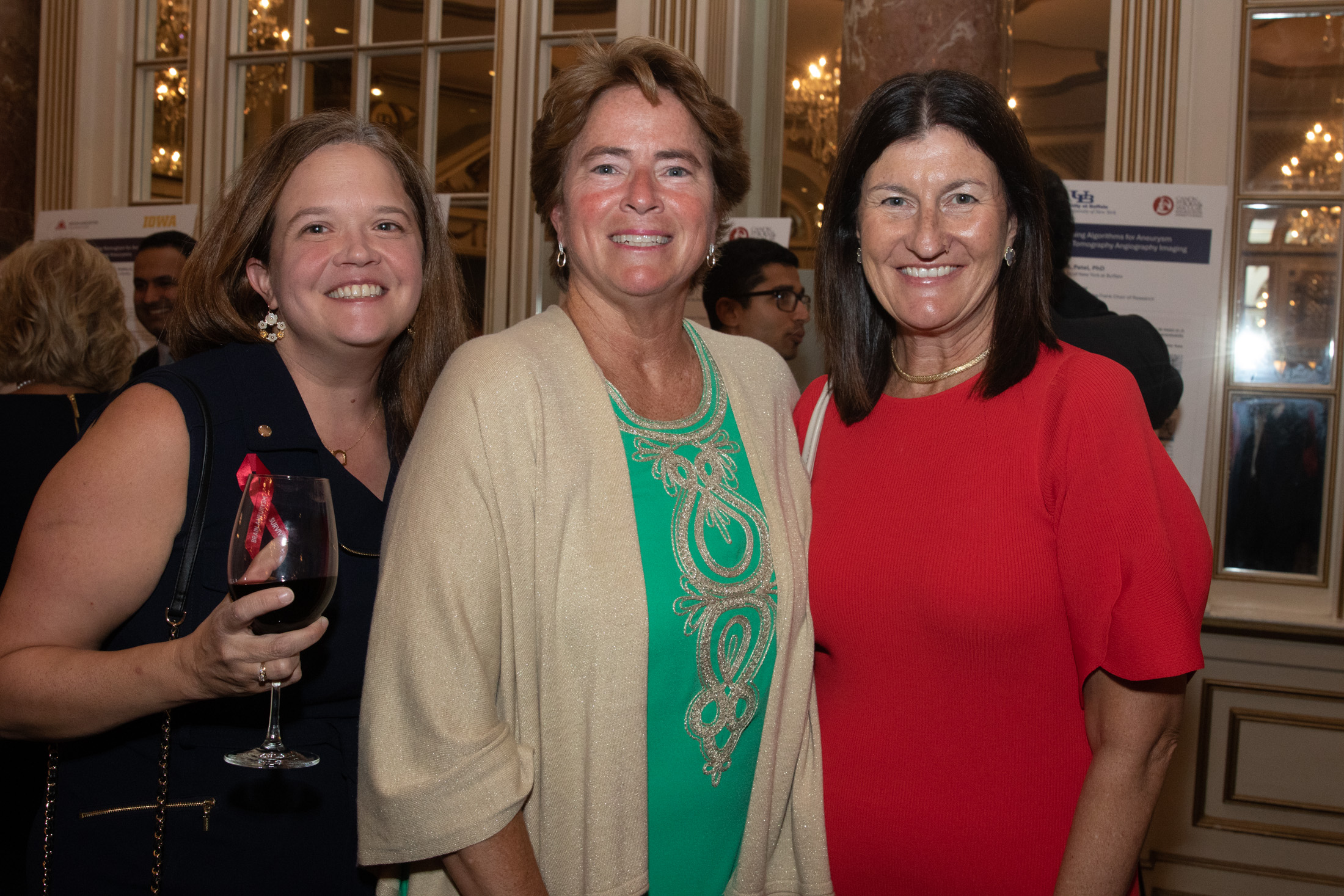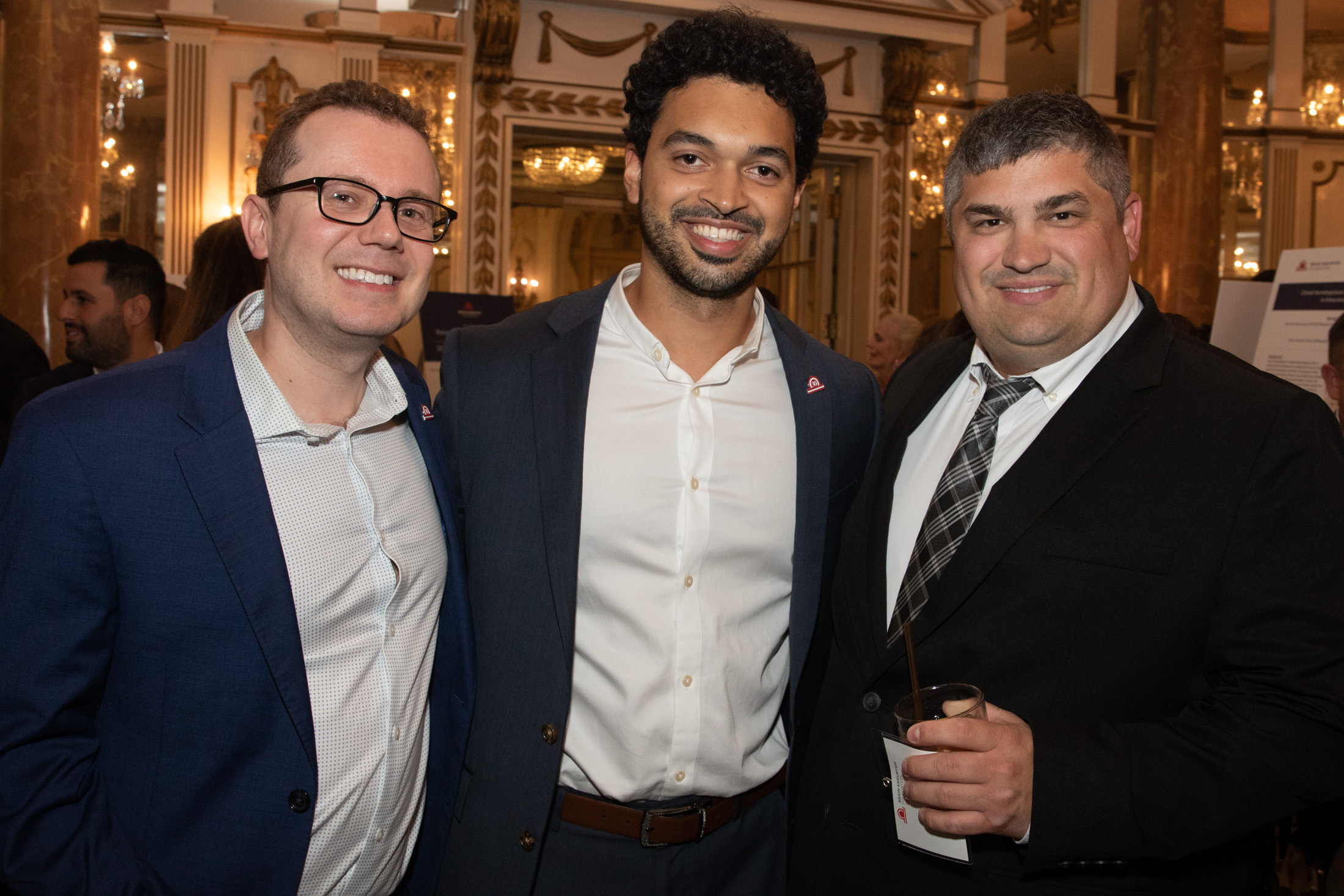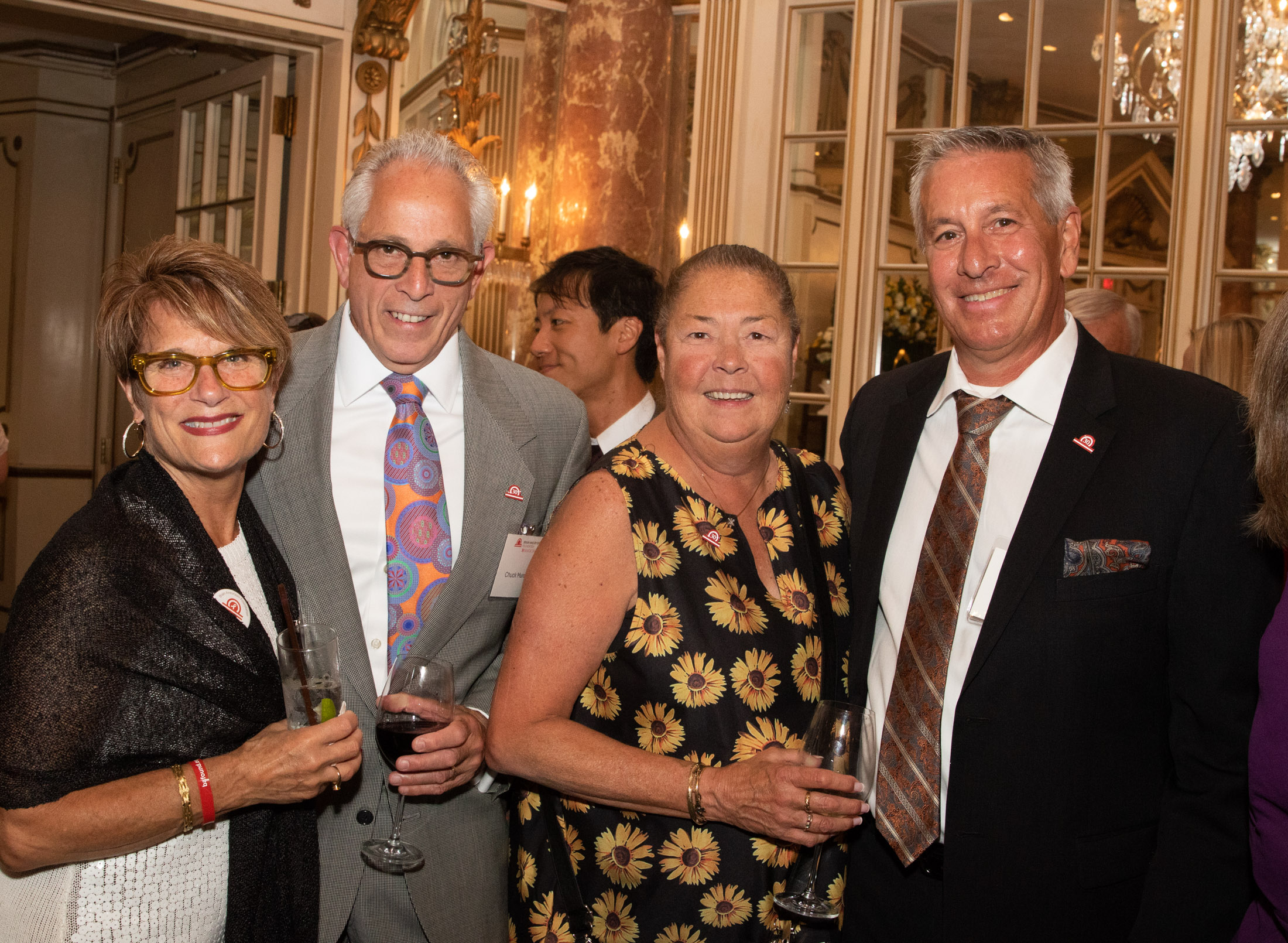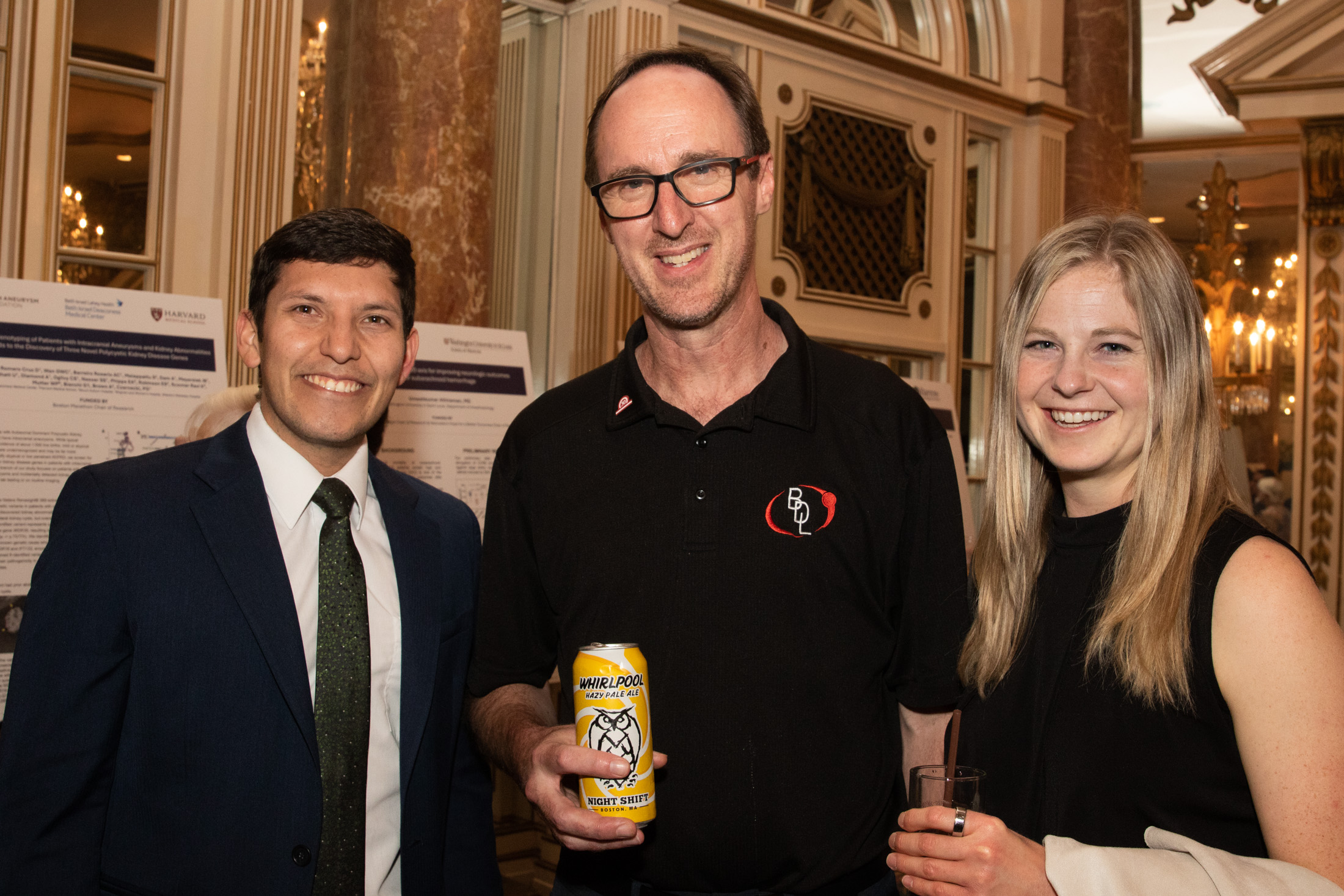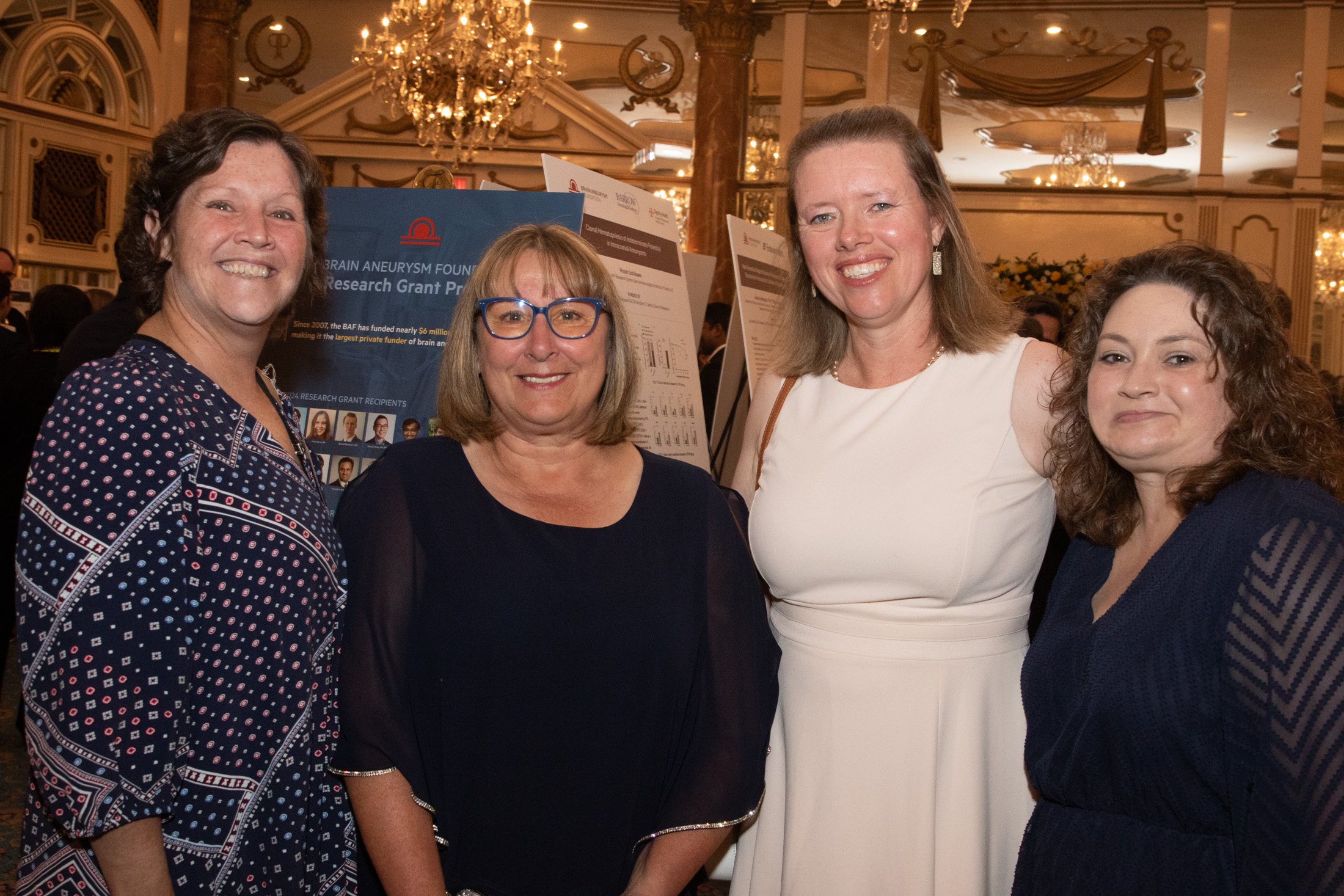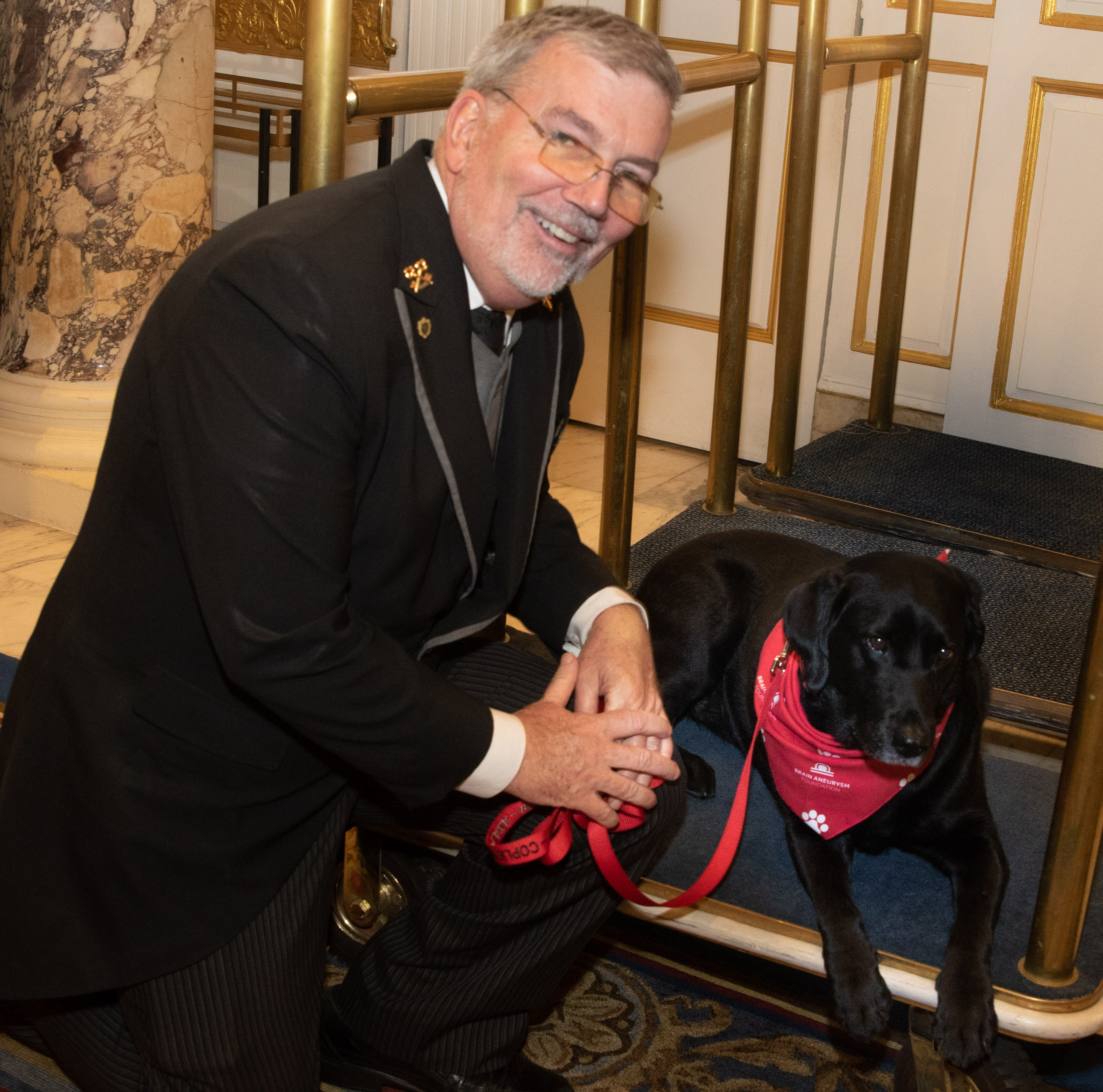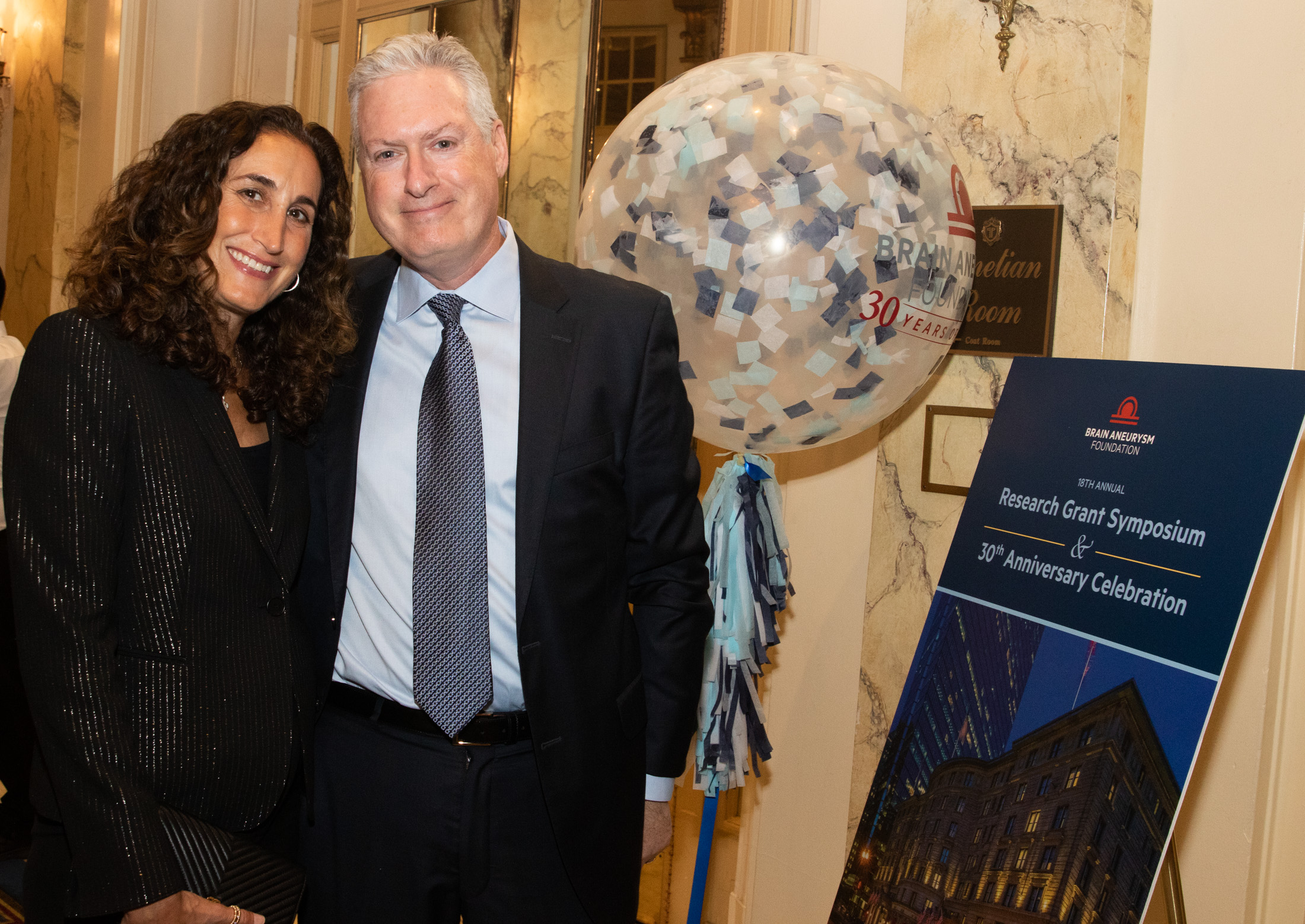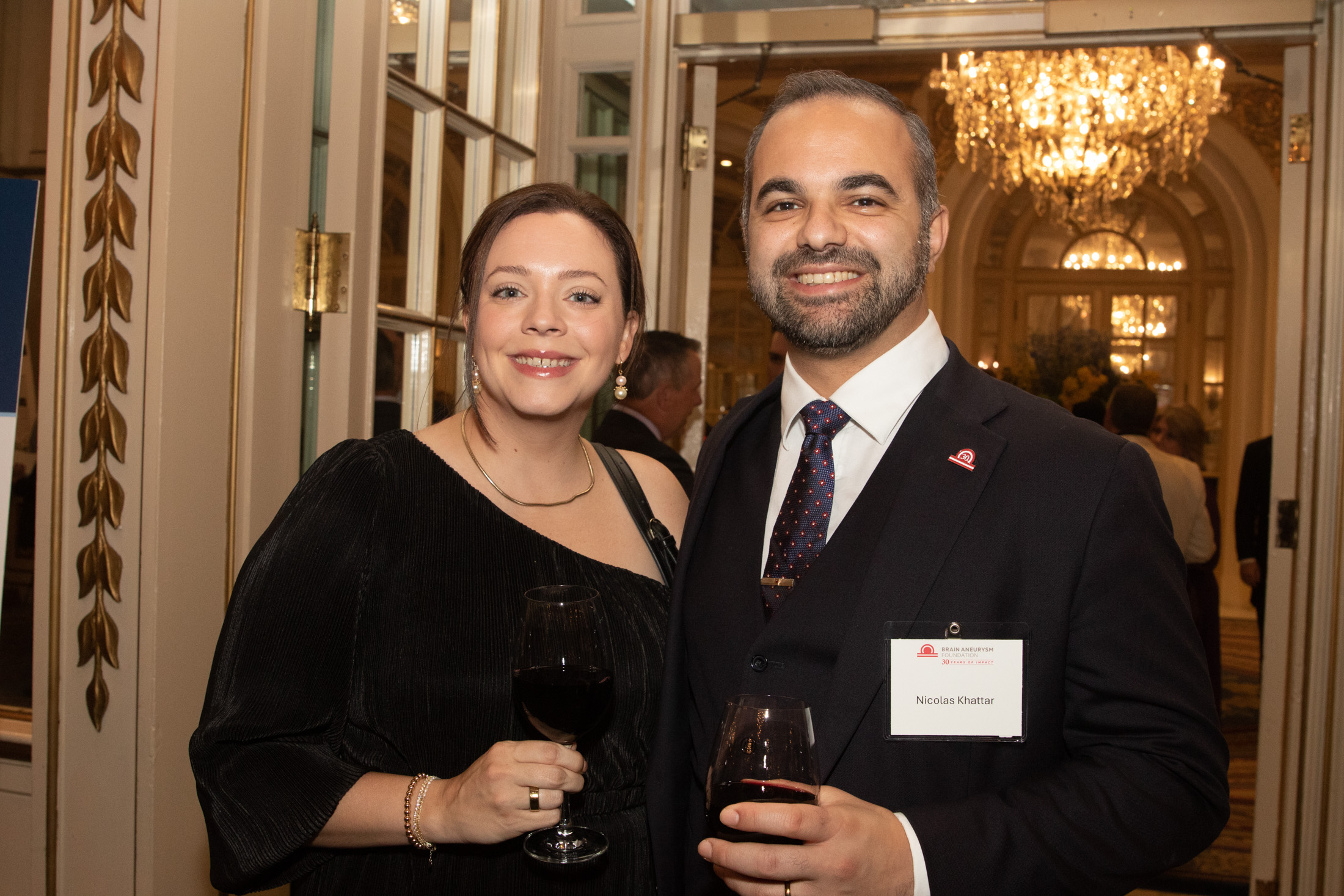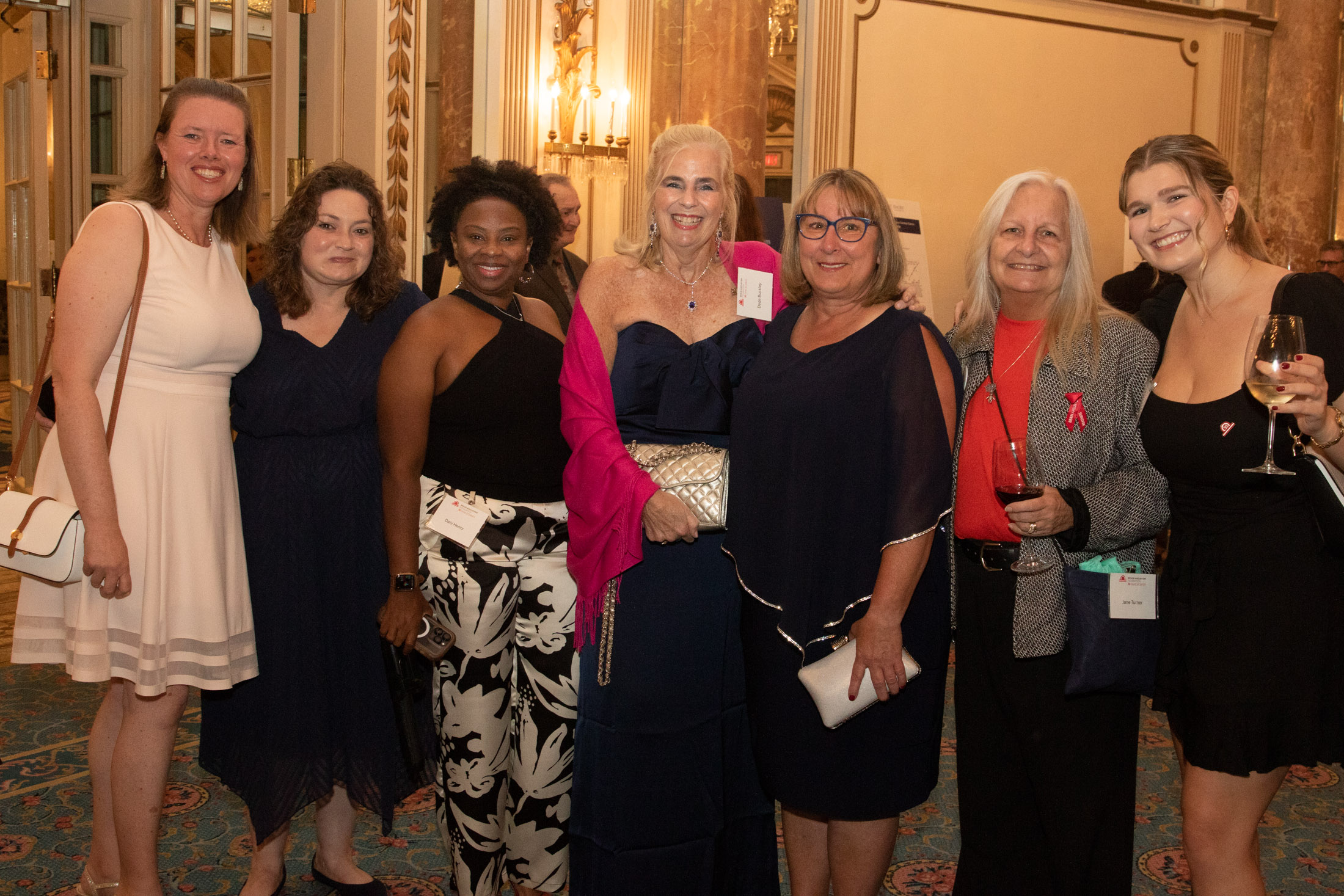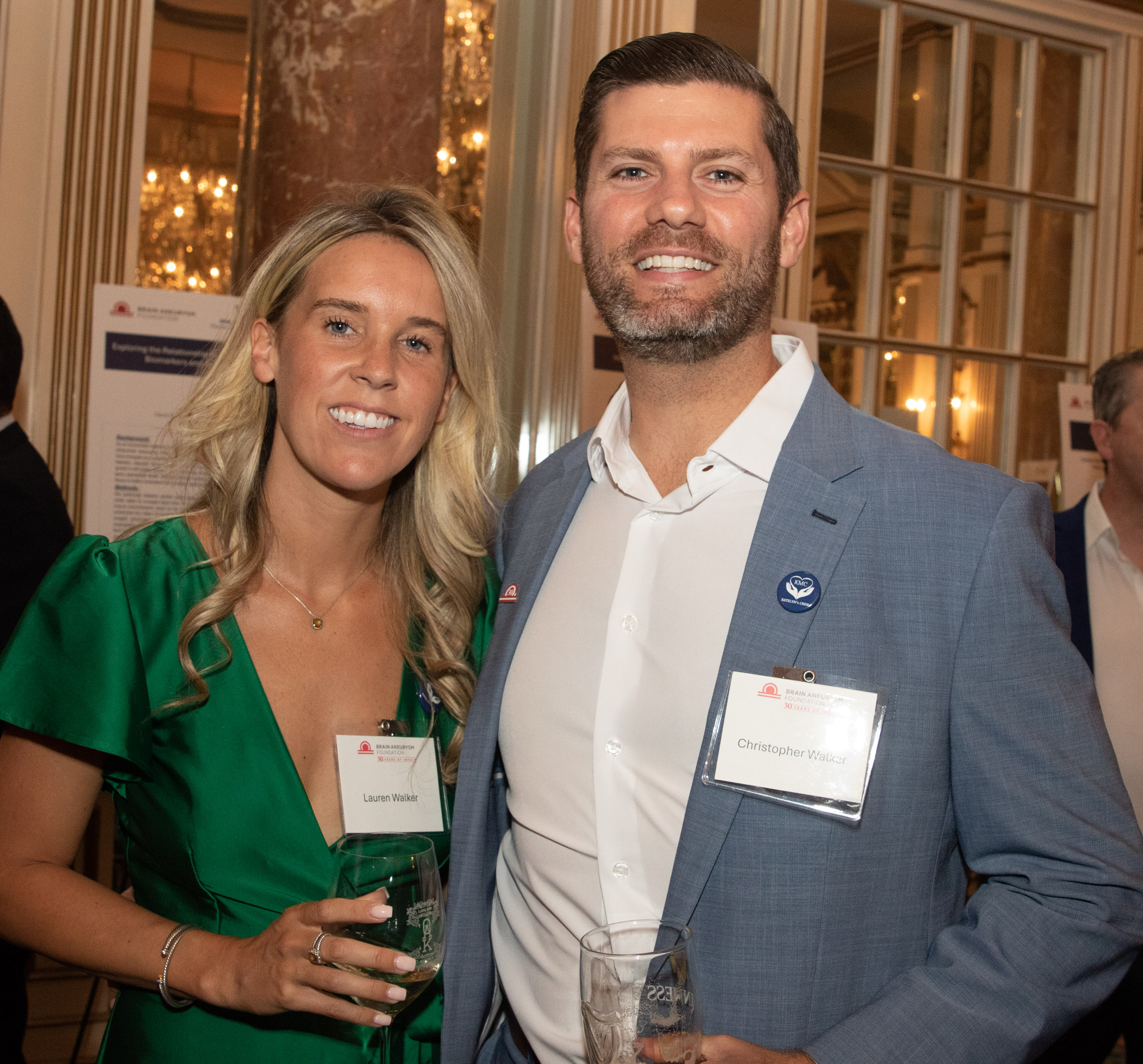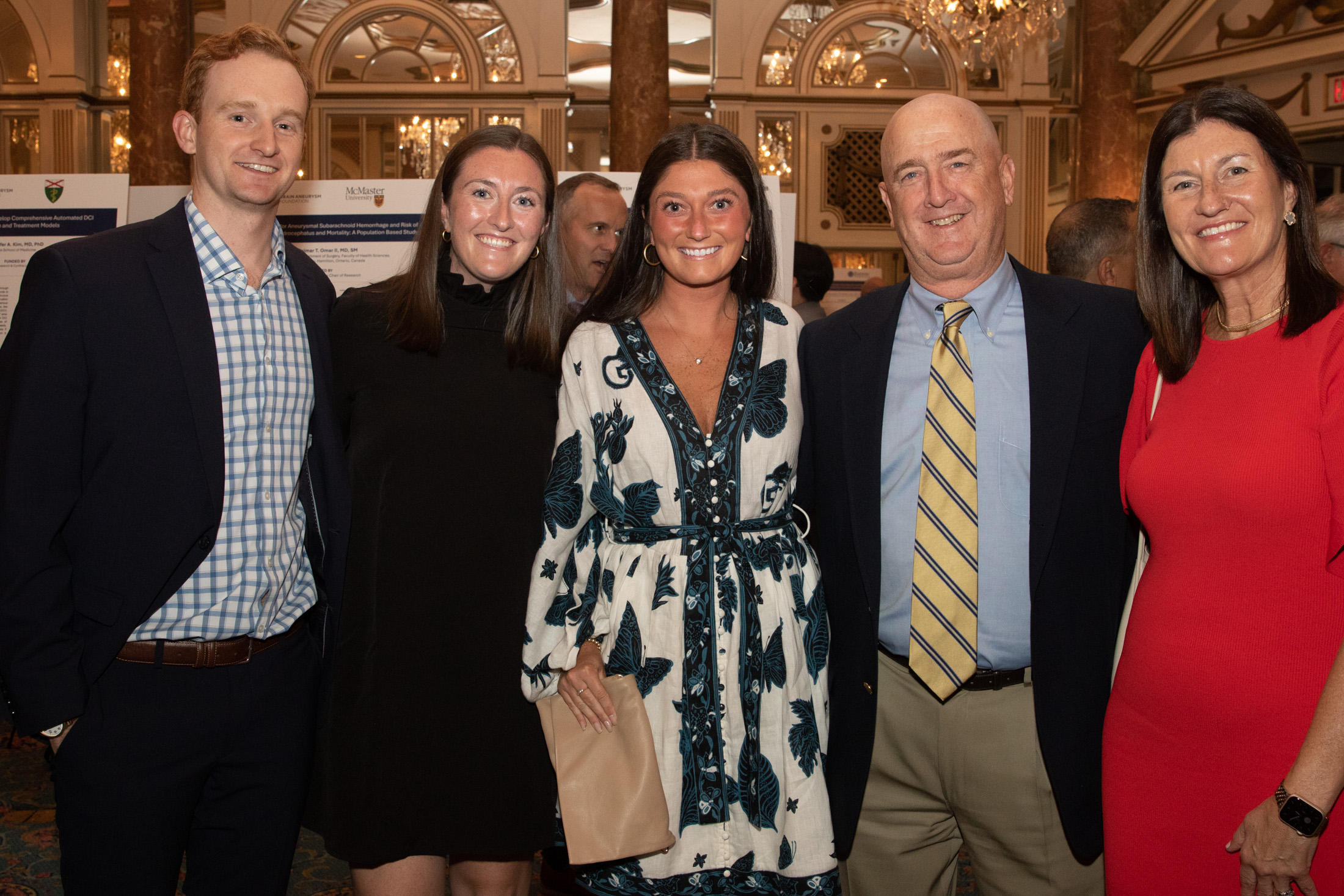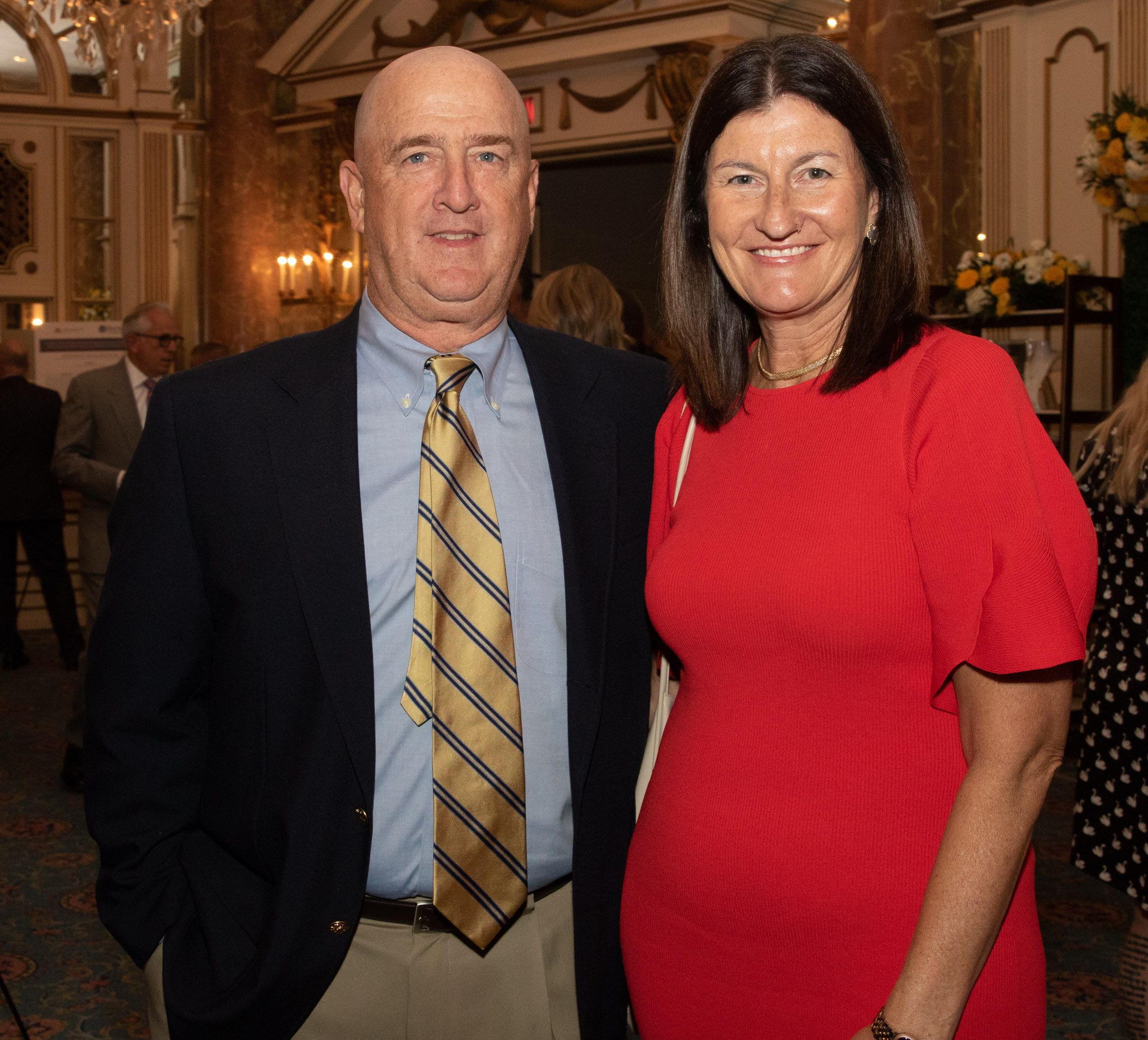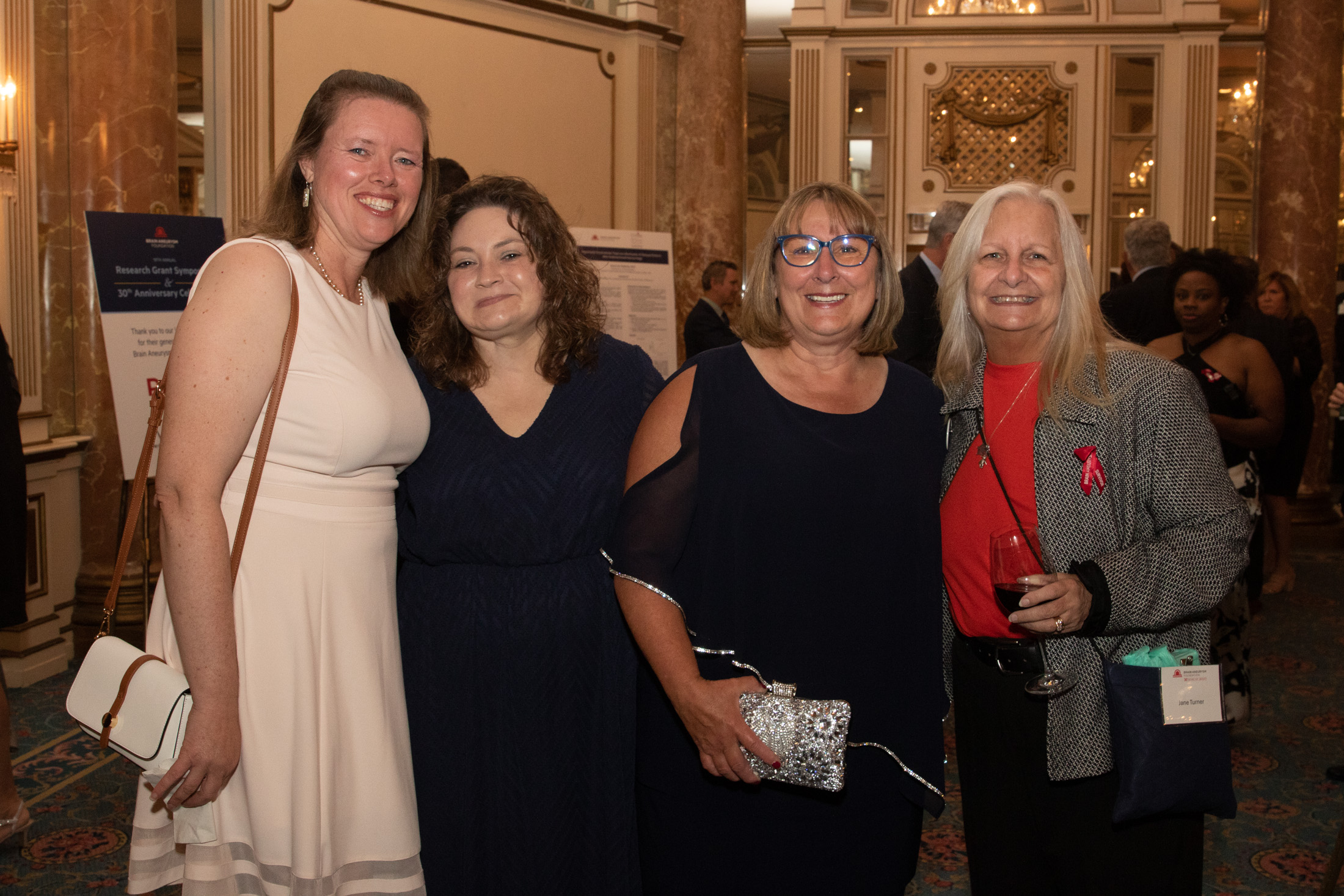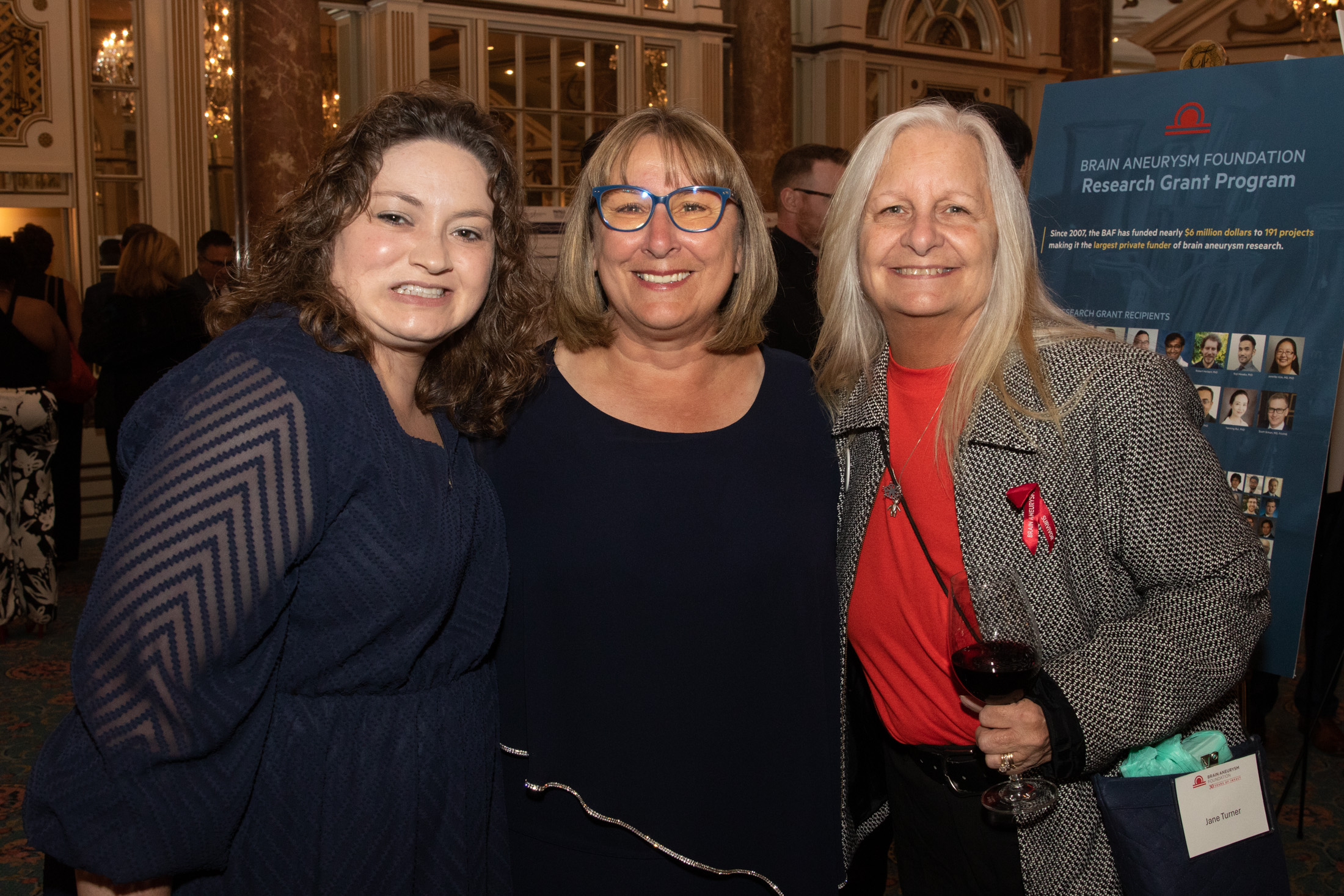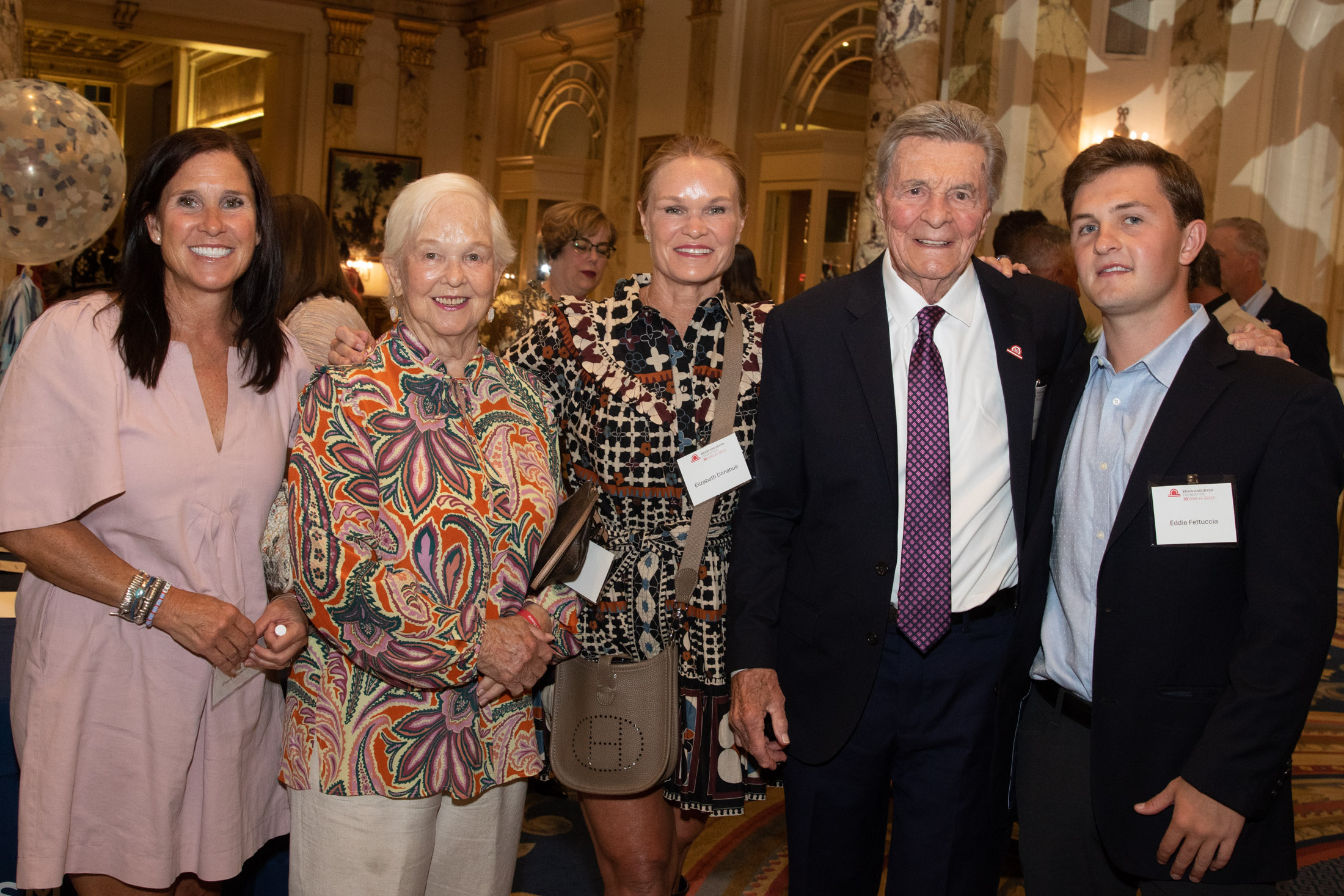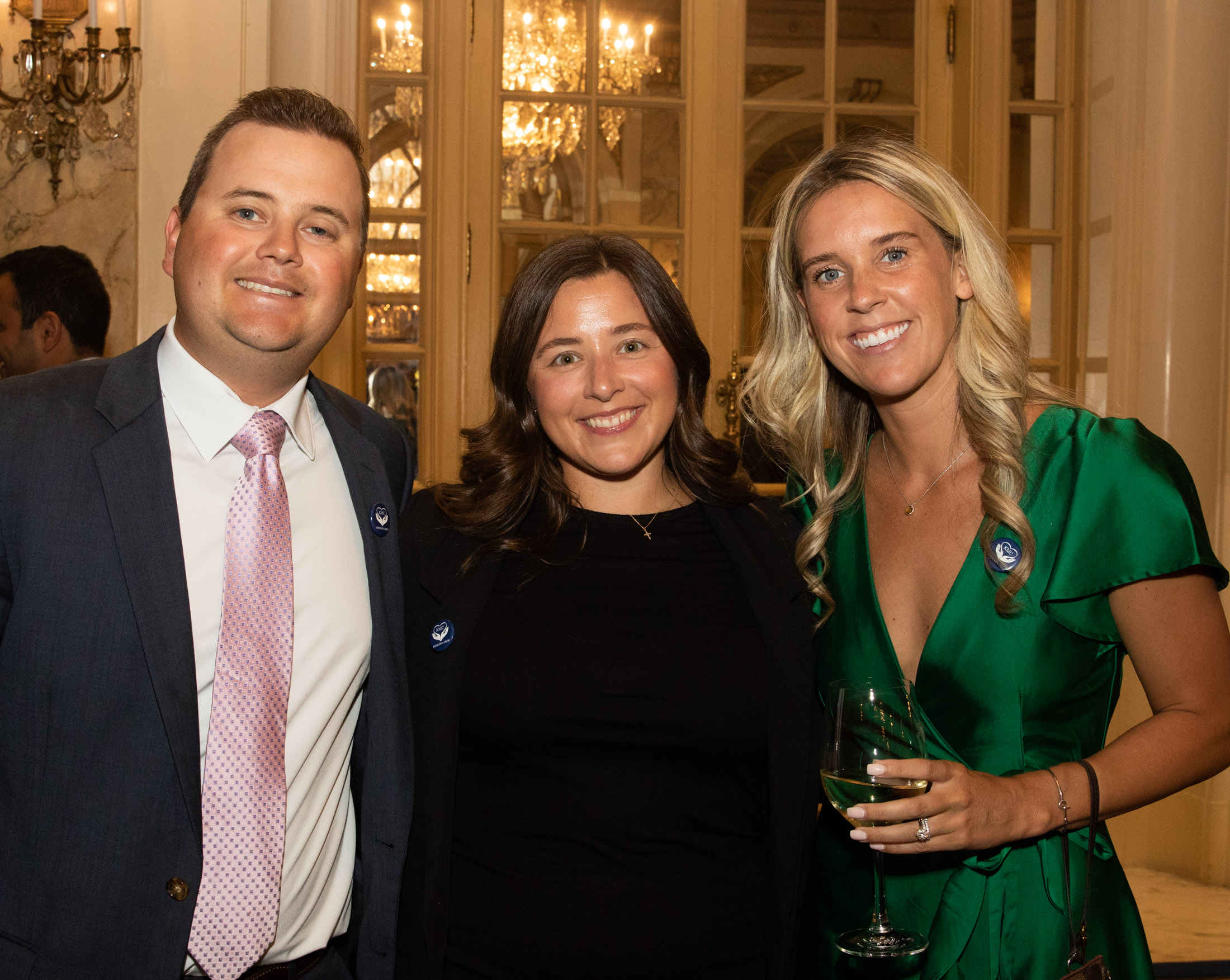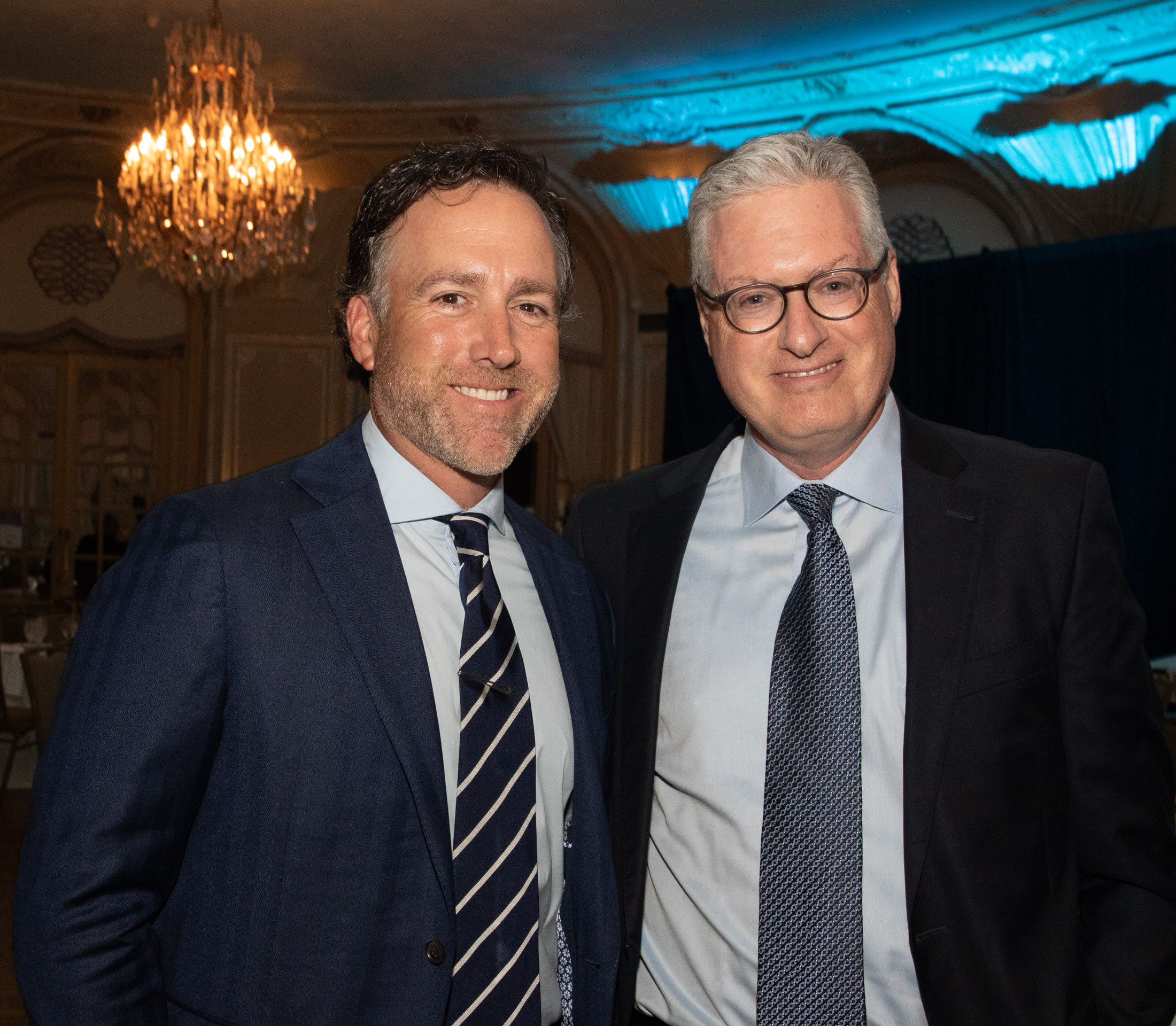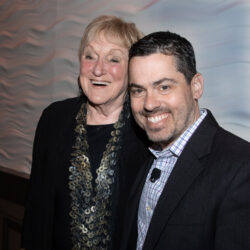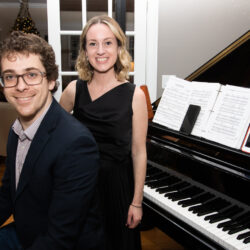COPLEY SQUARE — The Brain Aneurysm Foundation held its 18th annual research grant symposium, which coincided with the Hanover-based organization’s 30th anniversary celebration, at the Fairmont Copley Plaza hotel.
With doctors from different countries and the top researchers in the field in attendance, the conference started with a day of sessions for those supporting people with brain aneurysms that was followed by a scientific sessions, and then the evening’s celebration in the ballroom.
Former WCVB sports anchor Bob Holloran, a brain aneurysm survivor, and WHDH anchor/reporter Rob Way served as the event’s emcees. BAF Executive Director Christine Buckley welcomed all and kicked off the 30th anniversary celebration.
The BAF, the leading advocacy organization supporting education, research, and policy to transform the treatment of brain aneurysms, marked its 30th anniversary today by convening at its annual meeting leaders from medicine, government, and academia to highlight emerging research and advocacy initiatives to support the needs of patients, caregivers, and survivors.
Moving into its fourth decade, the BAF remains focused on increasing Federal funding for brain aneurysm research, raising awareness to better address the long-term financial impact on families that provide long-term care to survivors, while ensuring access to and reimbursement for potential life-saving imaging for individuals at high risk of rupture. At its symposium, being held today in Boston, the BAF is also recognizing 15 academic researchers with funds to support a range of programs to predict, detect, and treat brain aneurysms. These include efforts that use artificial intelligence to predict the likelihood of aneurysm formation, next-generation imaging to better detect and identify aneurysms, and research on the potential use of embedded sensors and blood tests to predict ruptures.
Featured speakers at today’s events include Dr. Walter Koroshetz, Director of the National Institute of Neurological Disorders and Stroke and Tom Nolan, CEO of leading fashion brand Kendra Scott.
“It is tremendously gratifying to be part of a grassroots community that is so highly engaged and aligned around the pressing needs of those impacted by brain aneurysms and to fund innovative programs that advance early detection, prevention, and treatment,” said Christine Buckley, Executive Director of the BAF. “Having grantees come together with those that fund their work creates a direct connection and shows the immediate impact of their donations. Our goal, however, remains to increase the pace of progress while ensuring at-risk individuals are provided access to scans so doctors can intervene before a rupture.”
It is estimated that one in fifty people in the US have a brain aneurysm, with more than 30,000 people suffering from ruptures annually, of which half are fatal. Moreover, studies show that between one and four percent of all people who go to the emergency room for a severe headache have a ruptured aneurysm – though approximately 25 percent of those individuals will be misdiagnosed or have a delayed diagnosis. Currently, Medicare only covers the cost of imaging once two members of a family have been impacted by a brain aneurysm, providing a critical gap in coverage for those who may be genetically pre-disposed to rupture.
“The shocking loss of my sister to a brain aneurysm over a decade ago continues to impact my family profoundly. Seeing how suddenly ruptures can claim the lives of young, otherwise healthy individuals, often with so little warning, makes it critical for everyone to be aware of the signs and symptoms to avoid these tragic outcomes,” said Tom Nolan, CEO of Kendra Scott. “I am deeply appreciative of the BAF’s commitment to education, and I’m inspired by the work of everyone in the brain aneurysm community and their focus on preventing this disease.”
The BAF was founded in 1994 by Dr. Christopher Ogilvy and Deidre Buckley, N.P., who started the foundation as an extension of their practice at Mass General Hospital and later Beth Israel Hospital in Boston. Through their work with patients, it was clear that surgical interventions were only the start of a patient’s journey. Over the past three decades, the organization has become the leading advocate for patients, providing essential resources, working with physicians globally on educational initiatives and with first responders so they may better recognize the signs of a brain aneurysm.
All photos by Bill Brett

